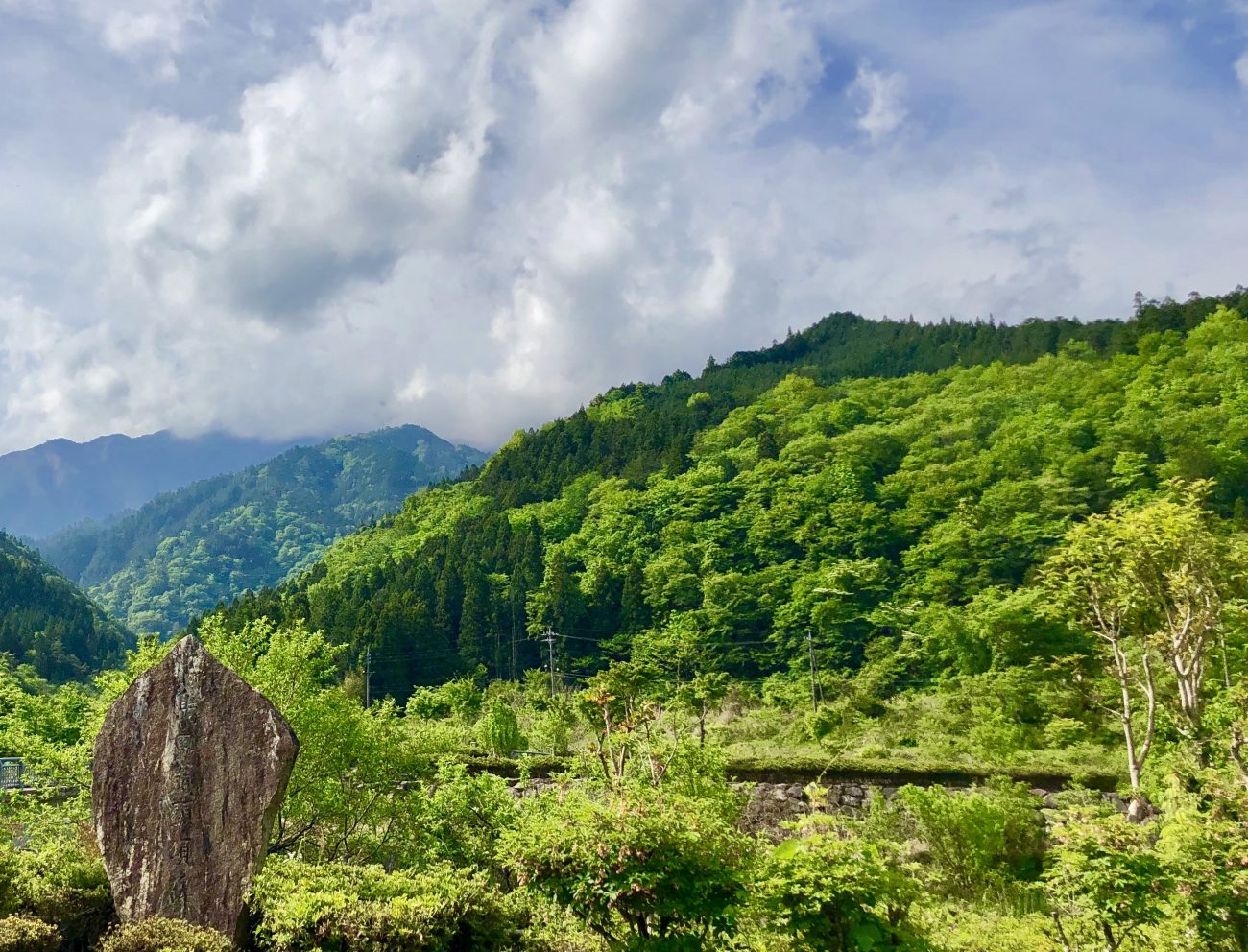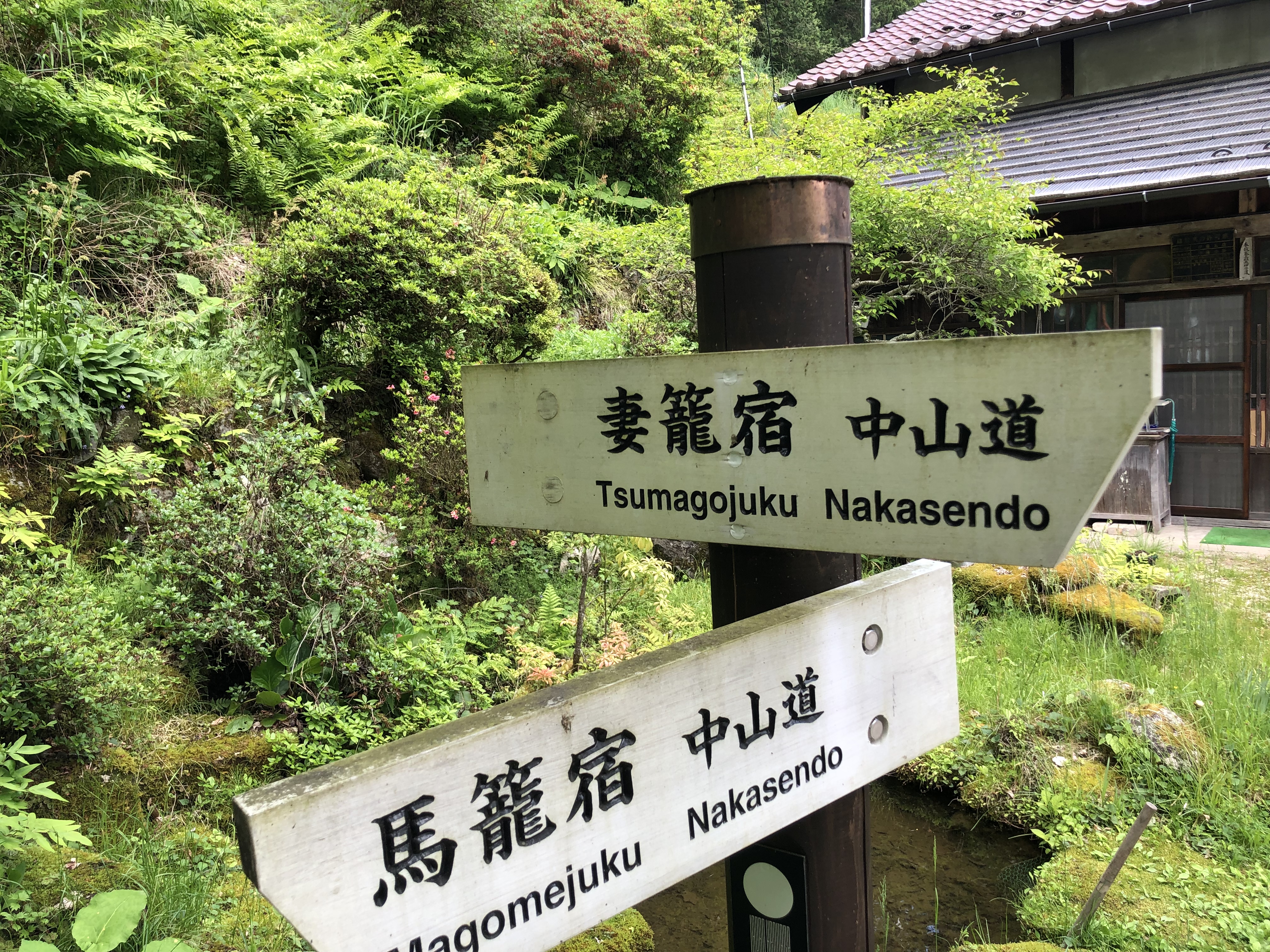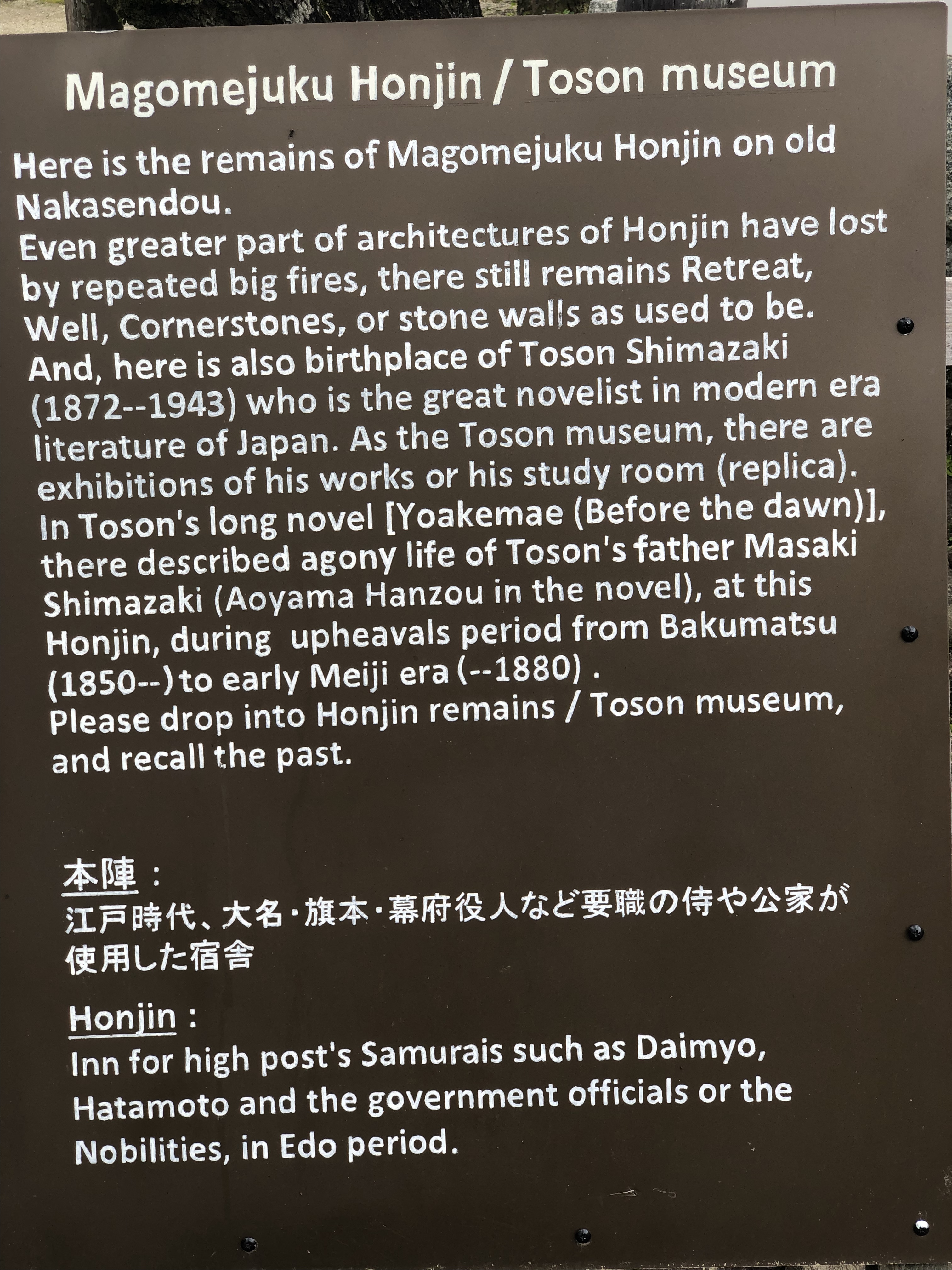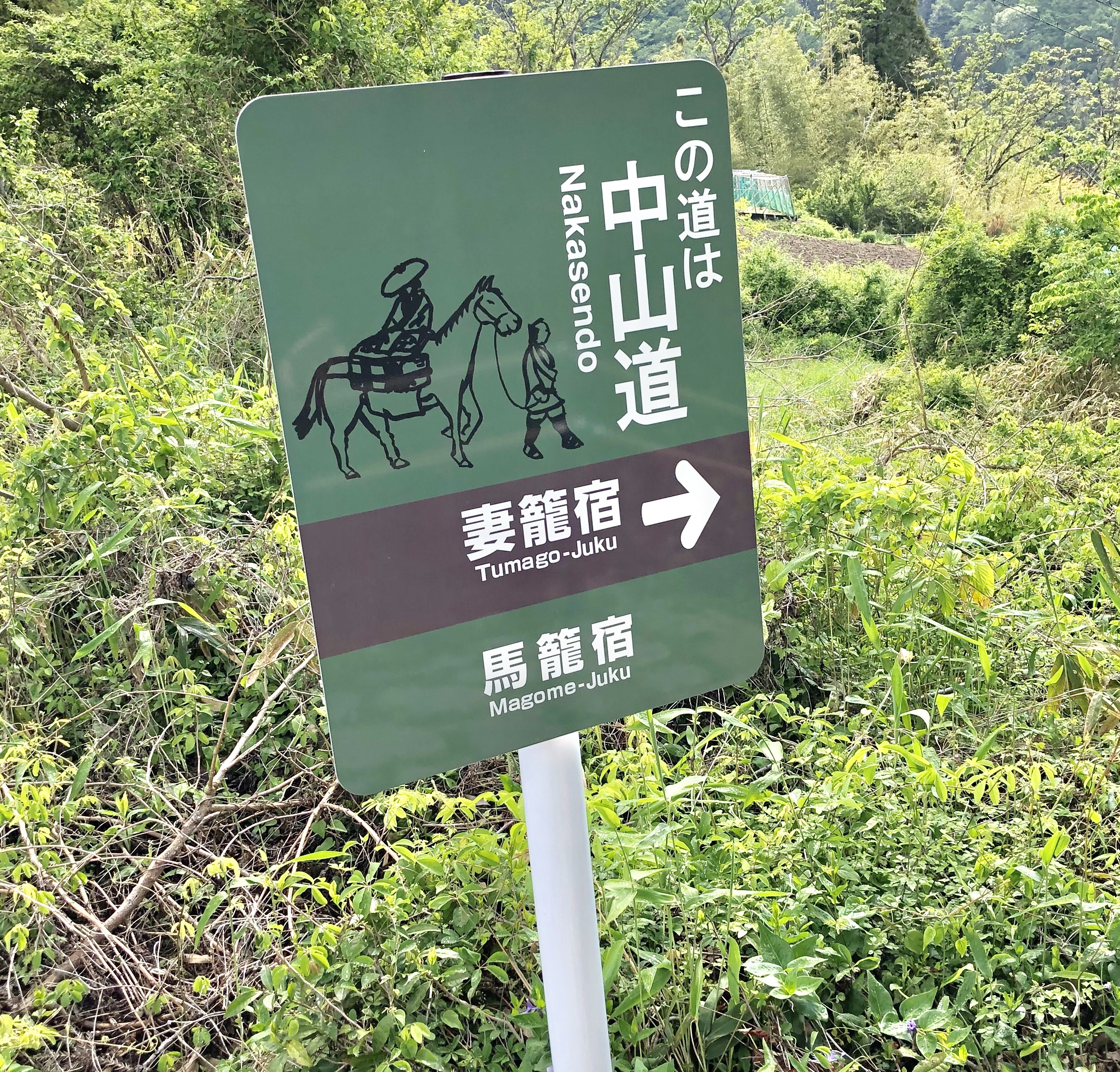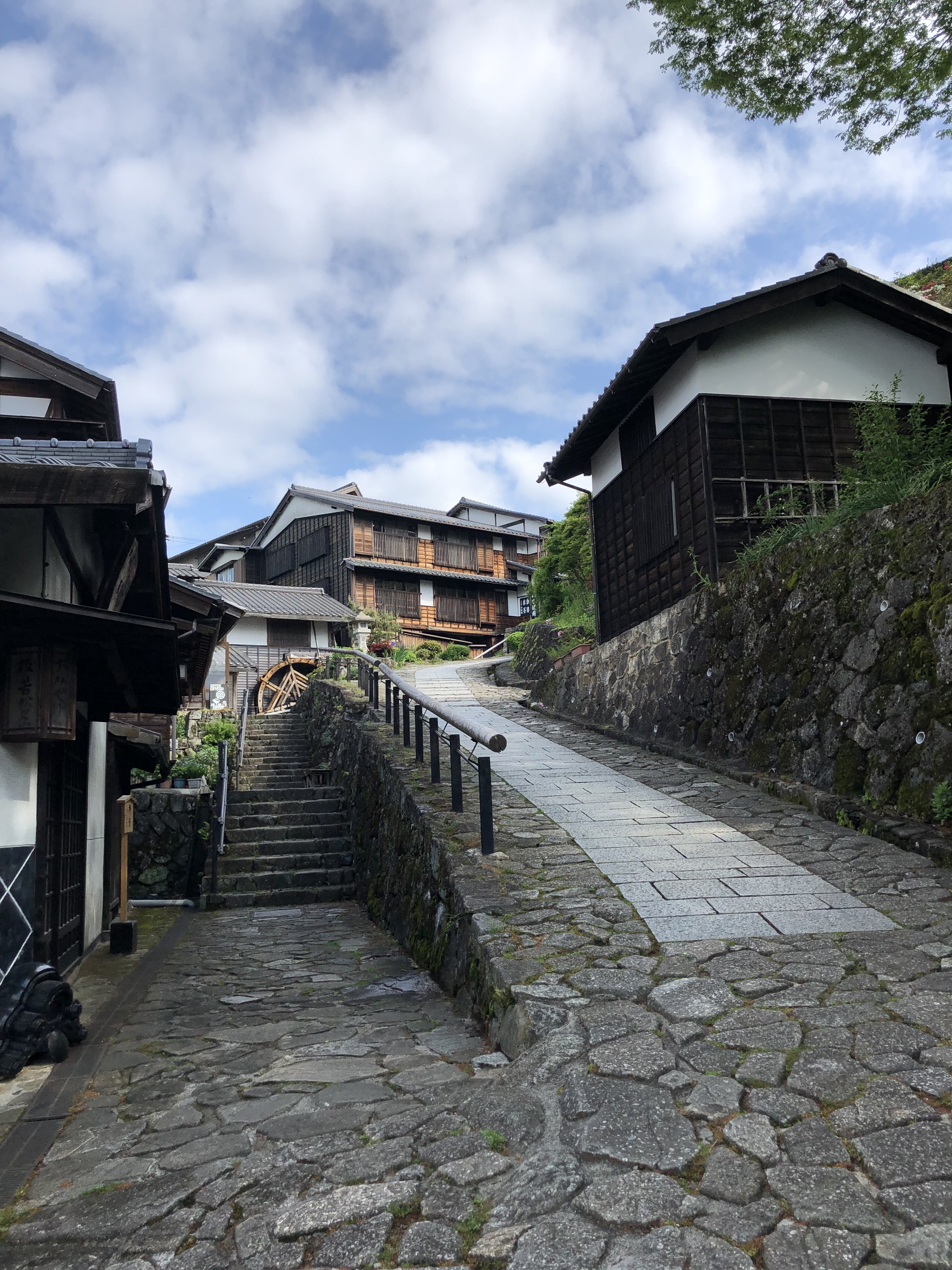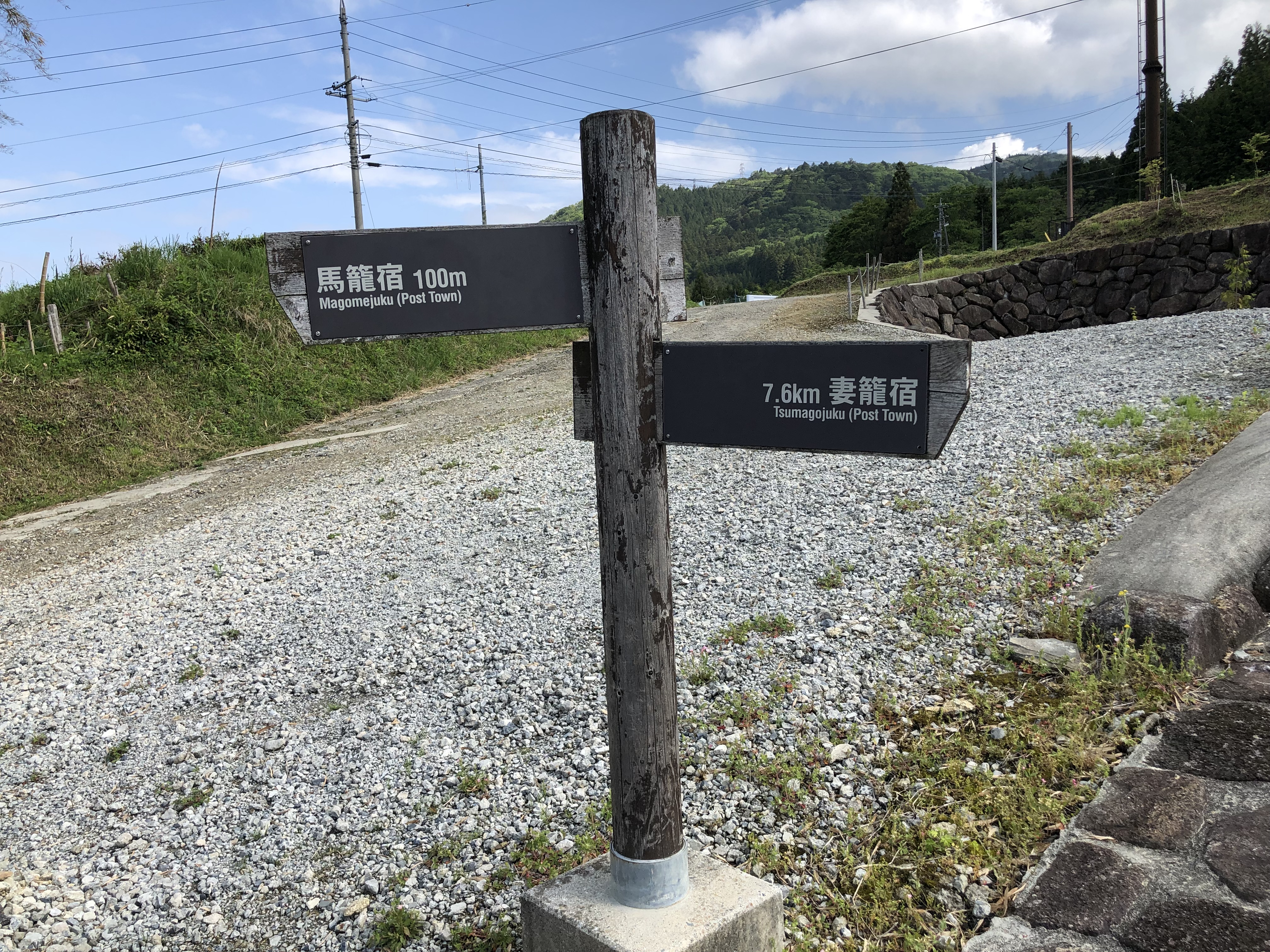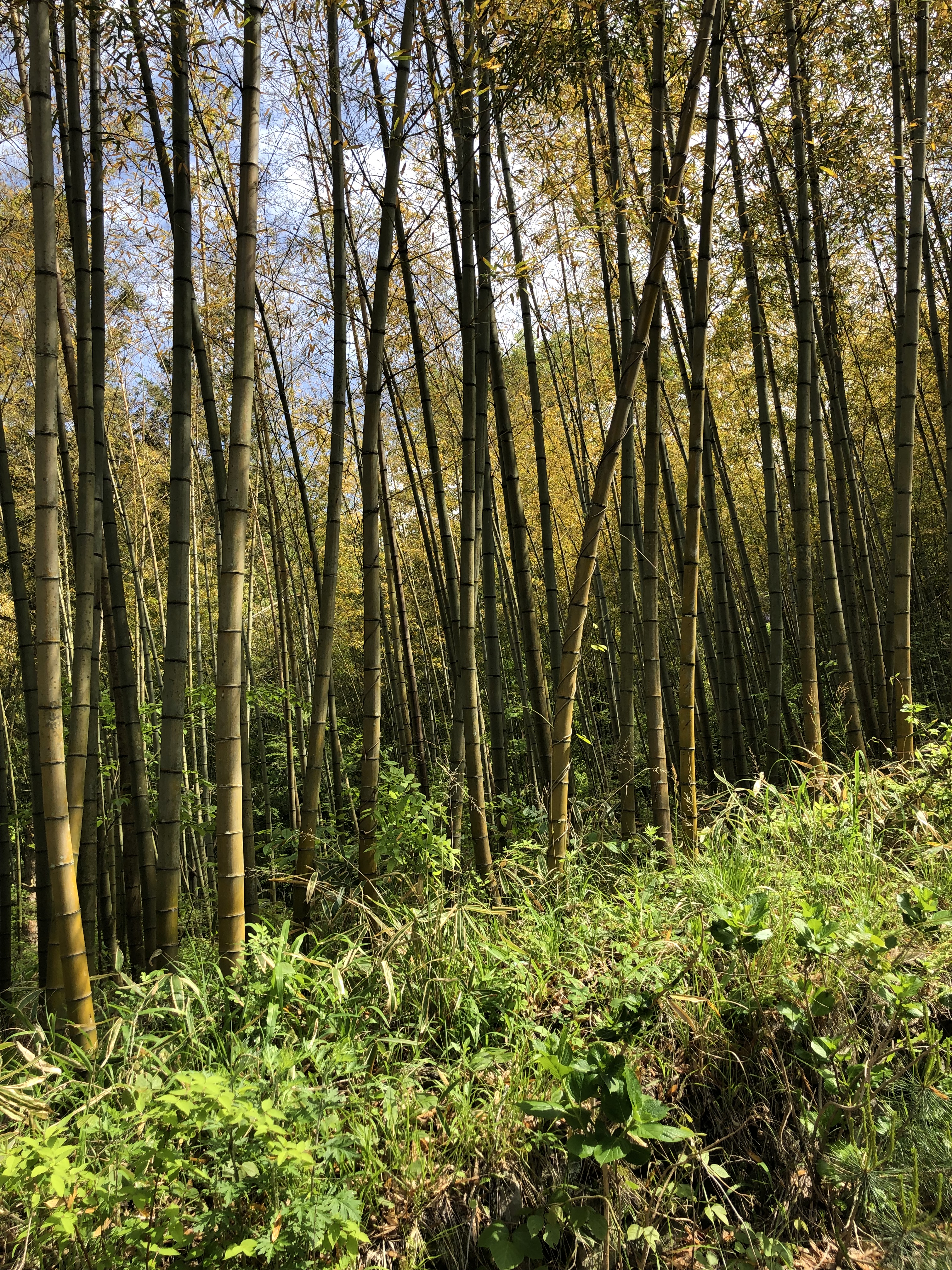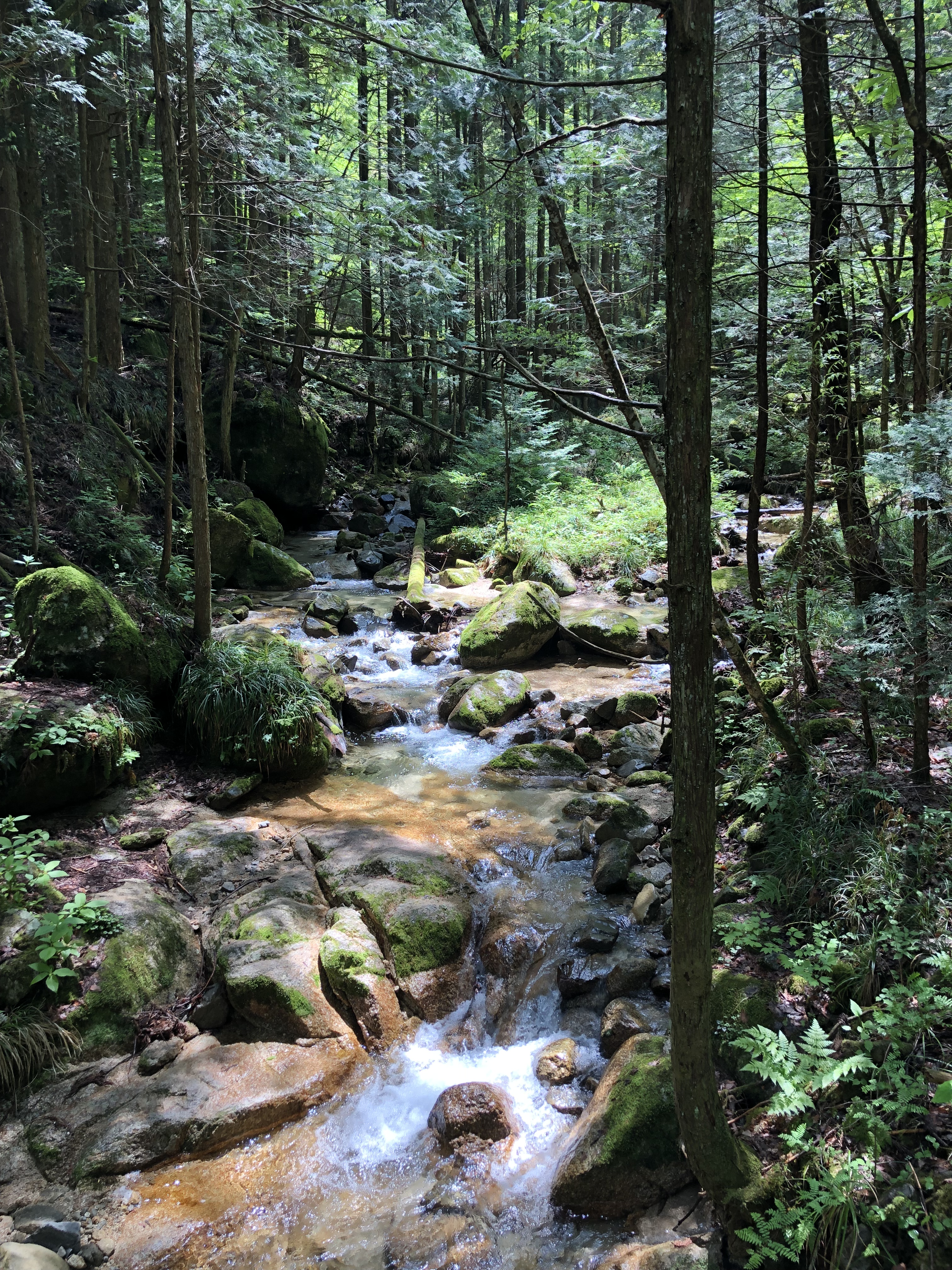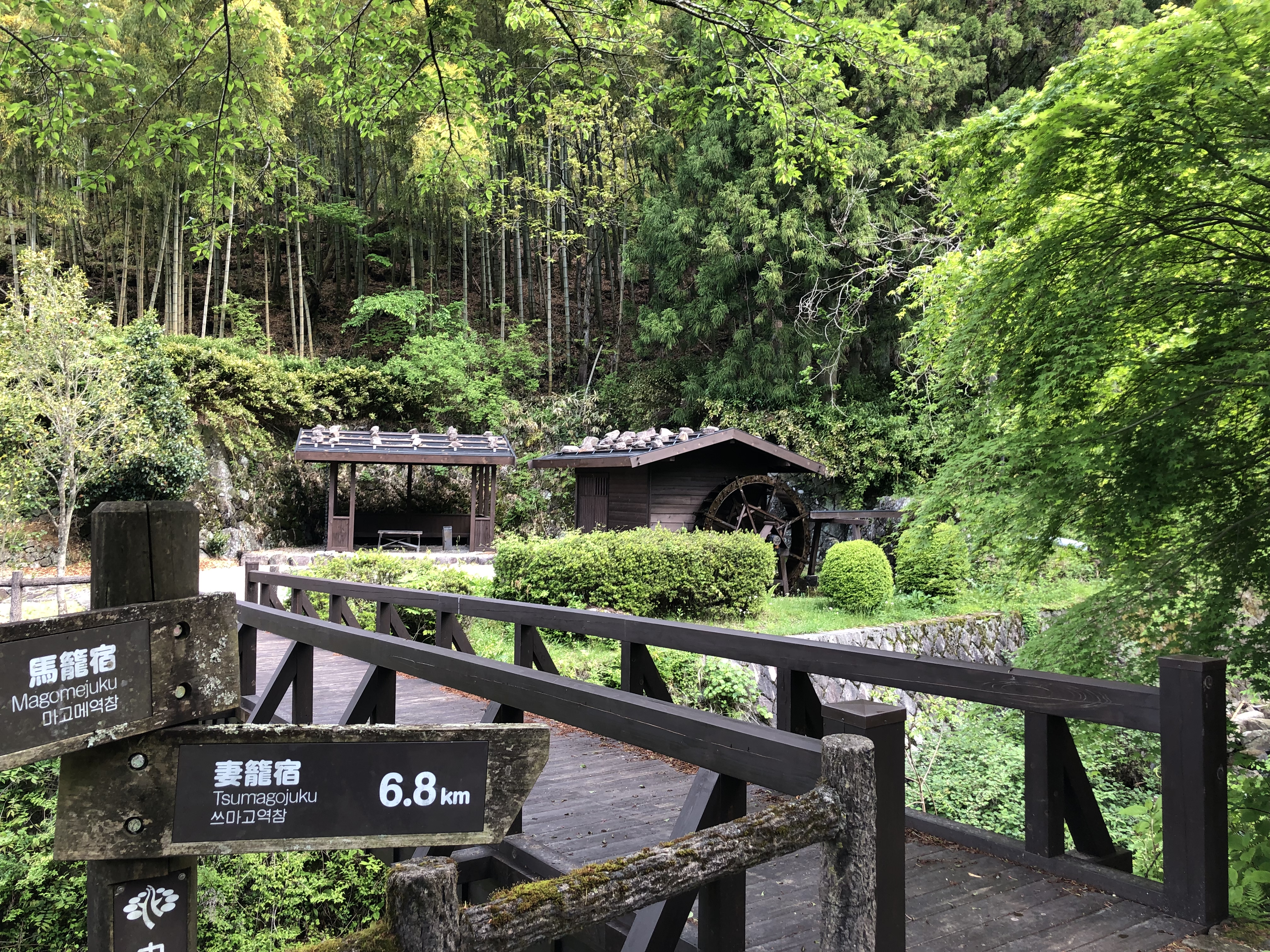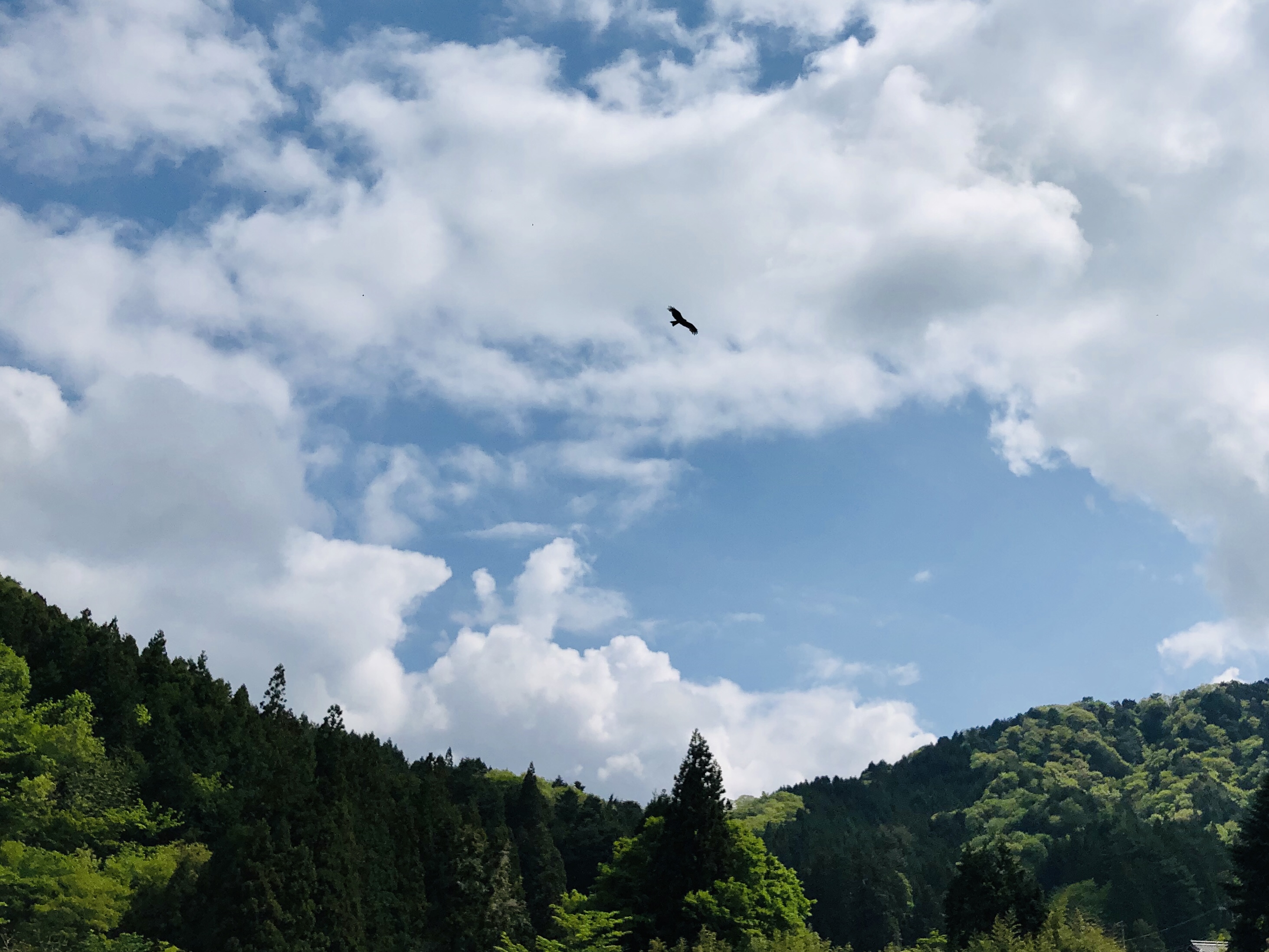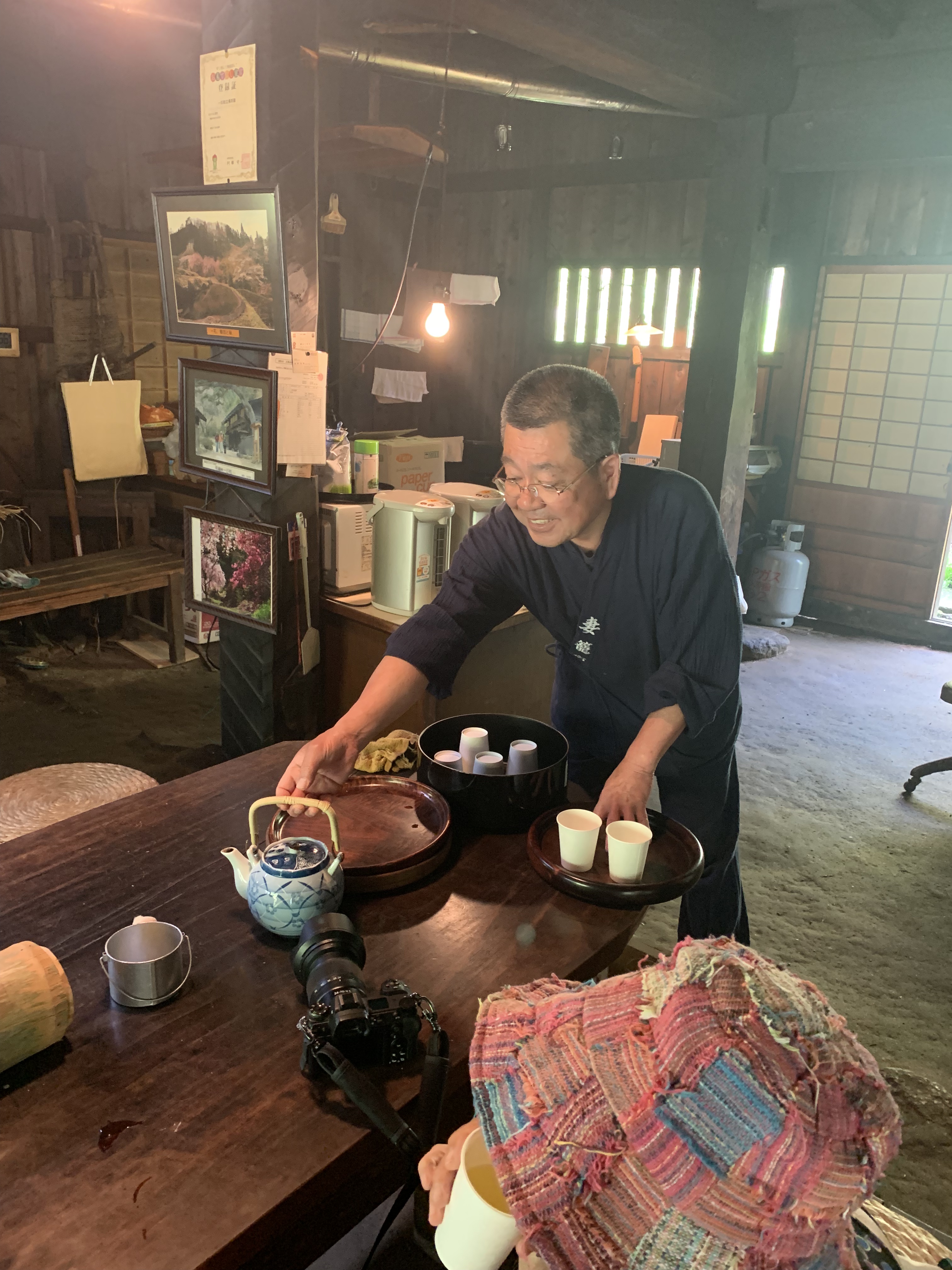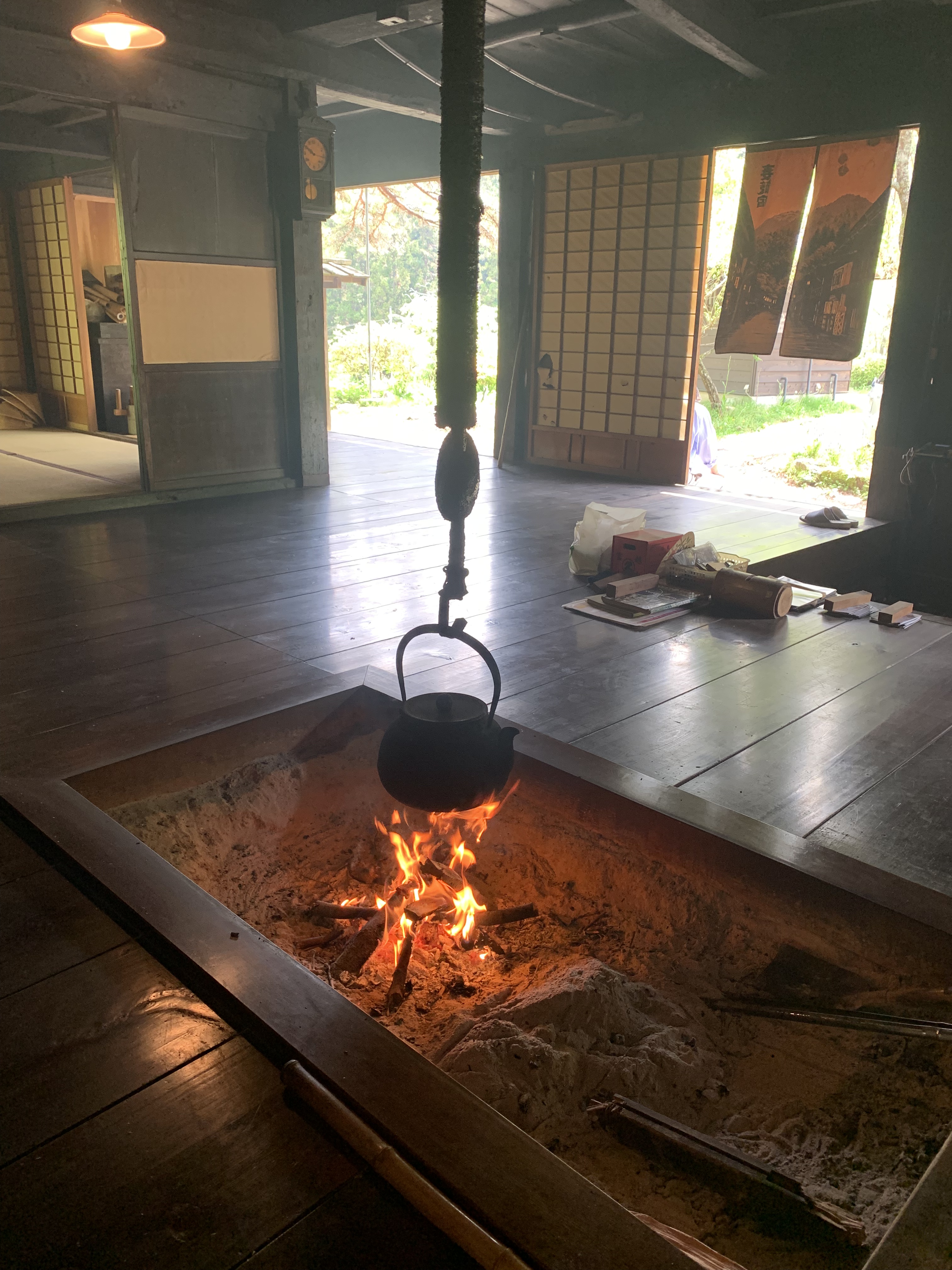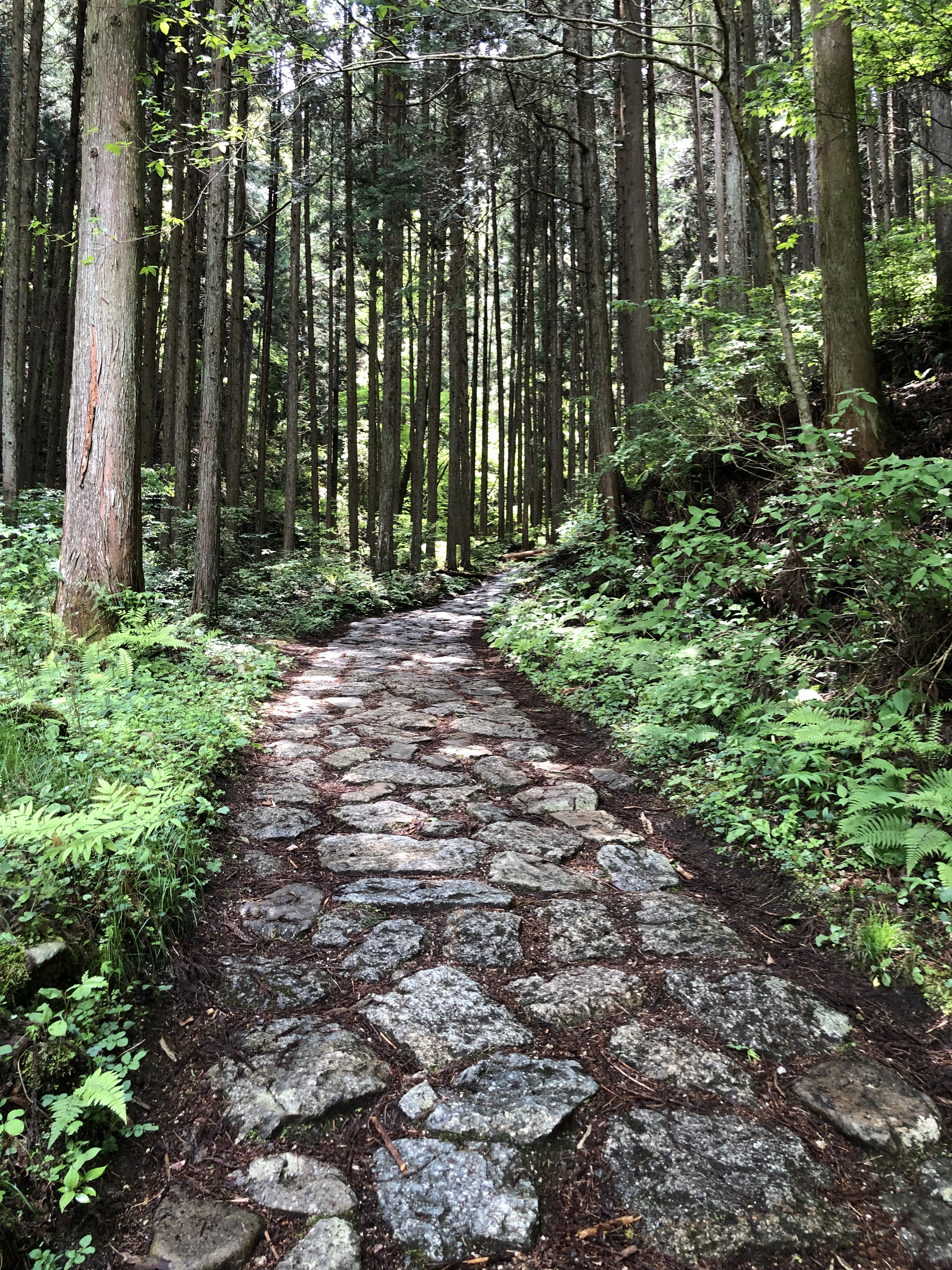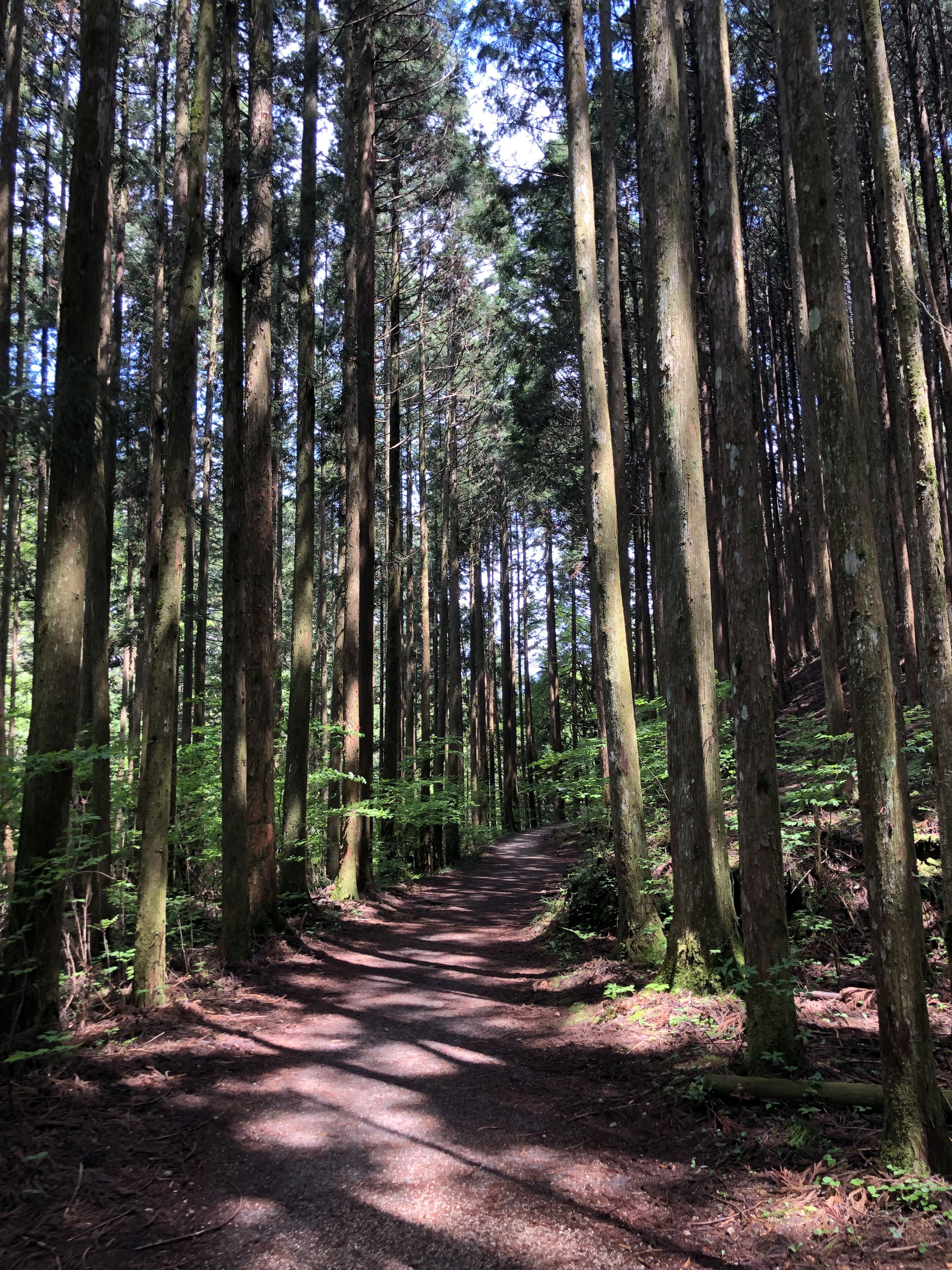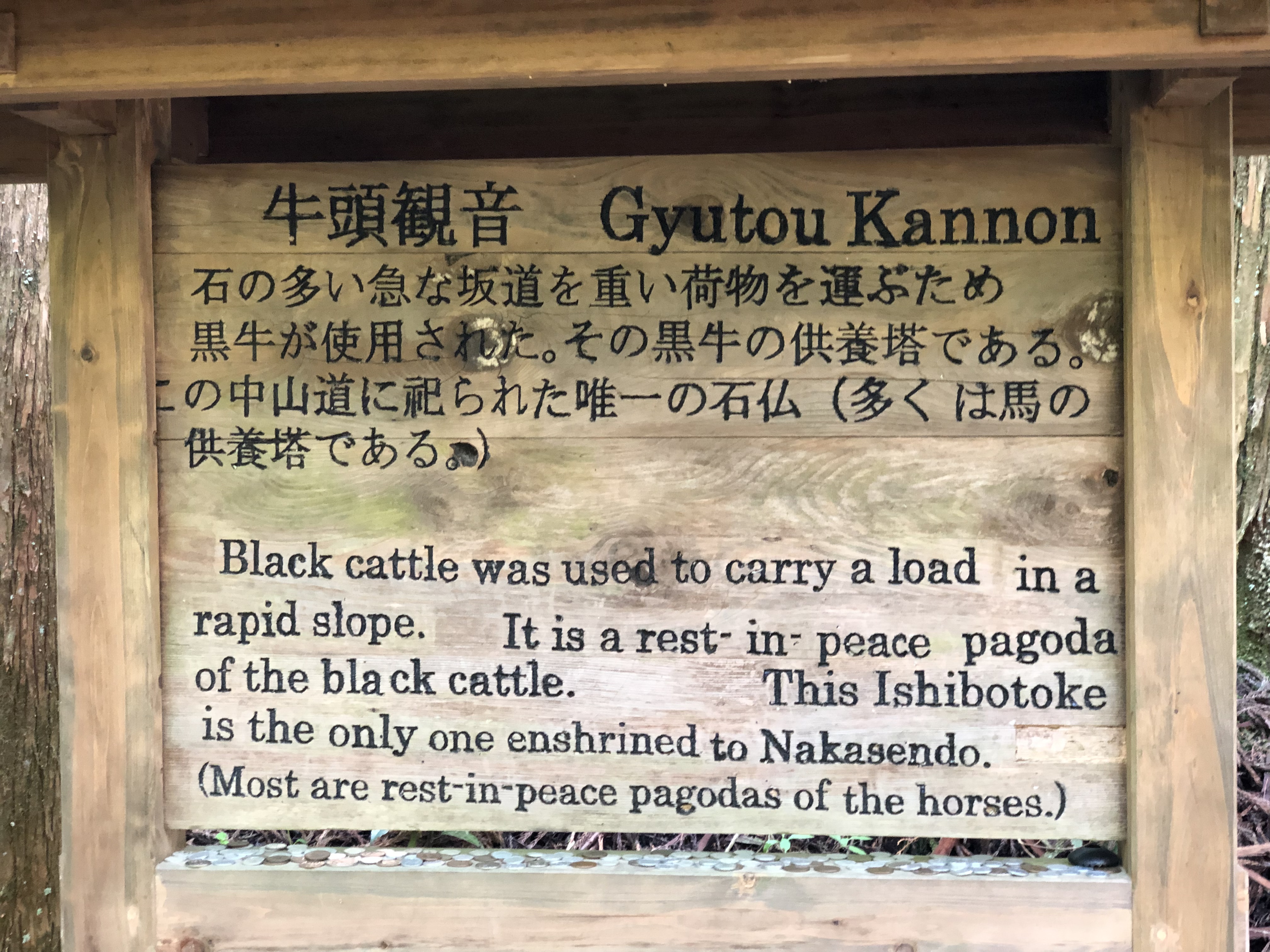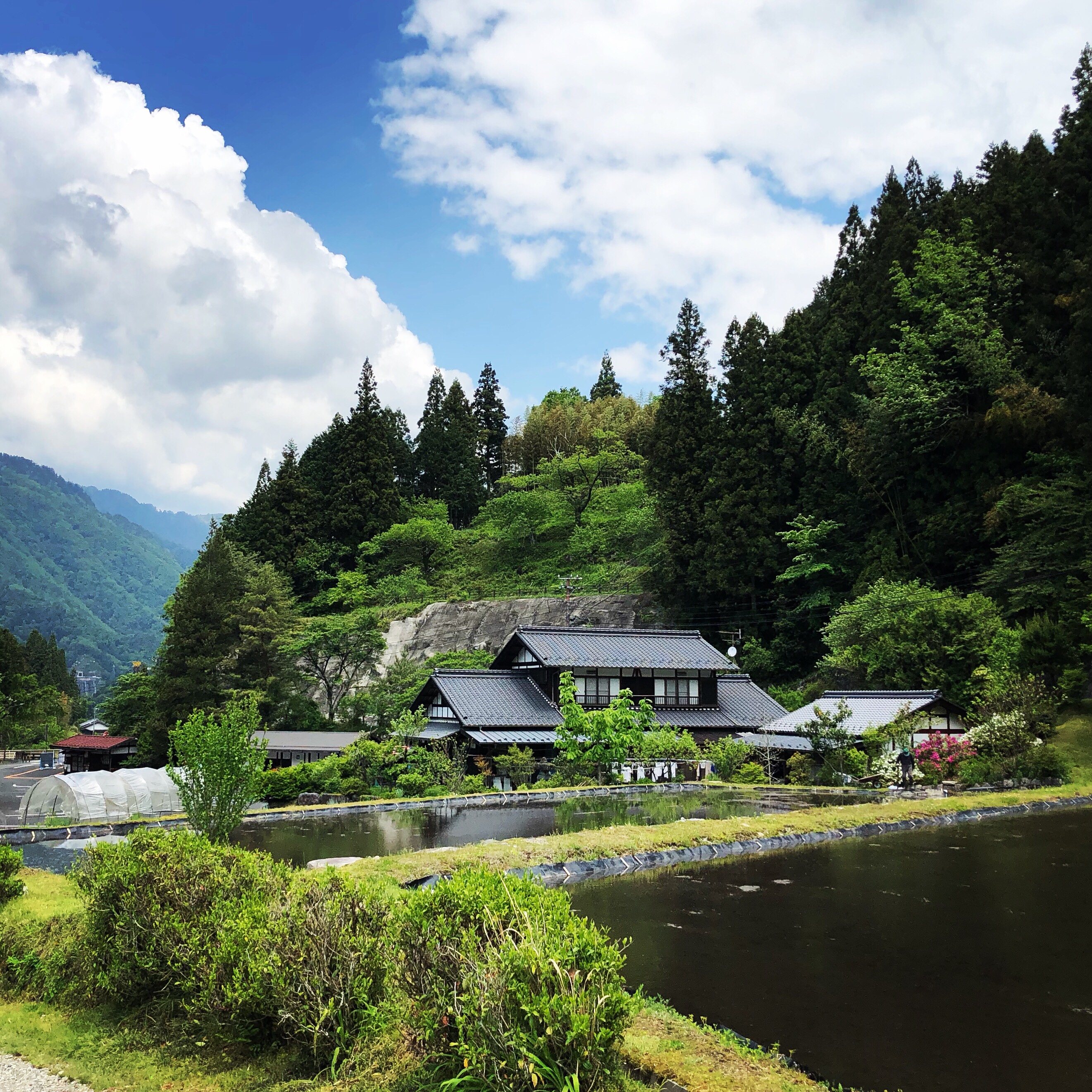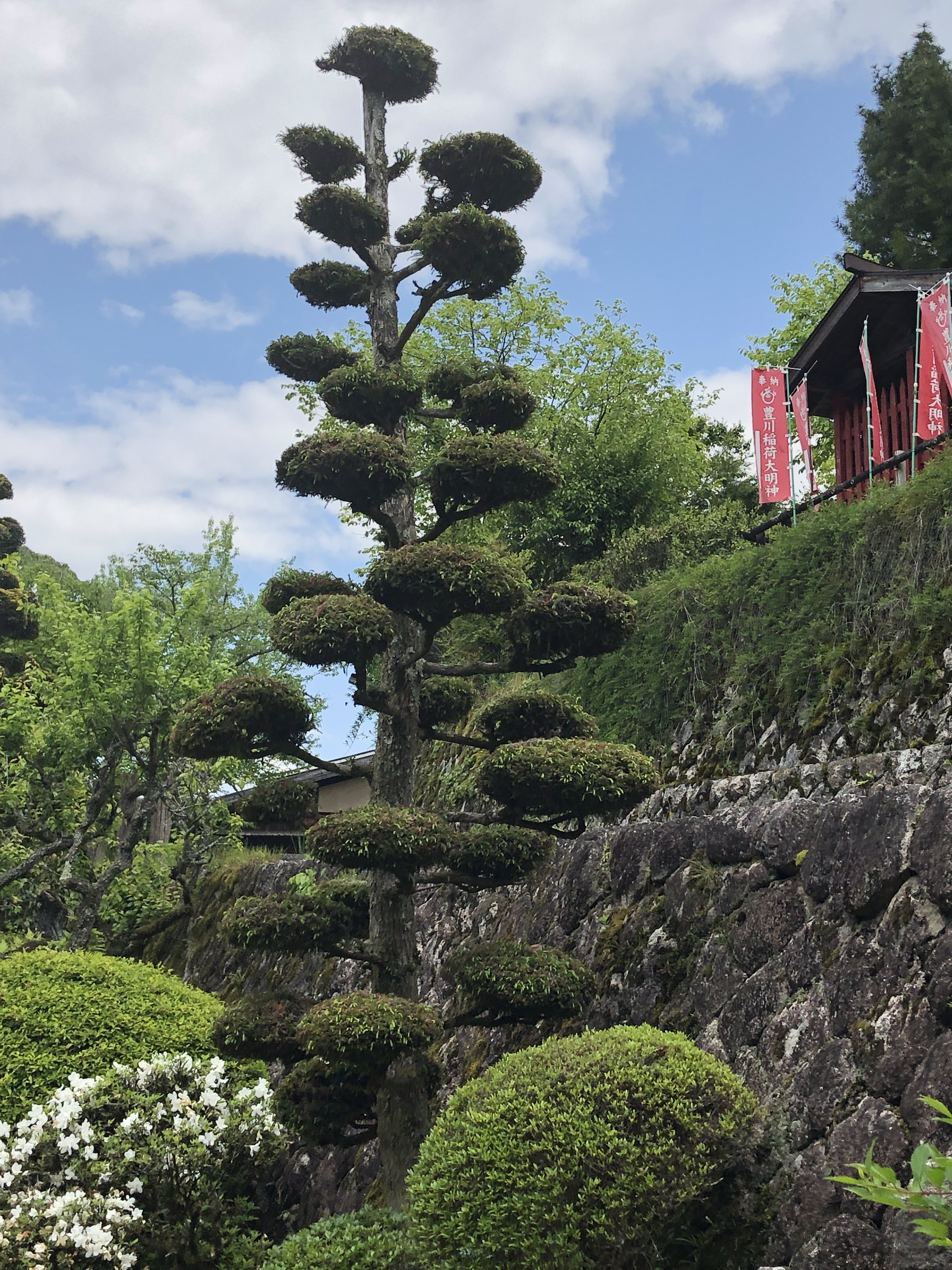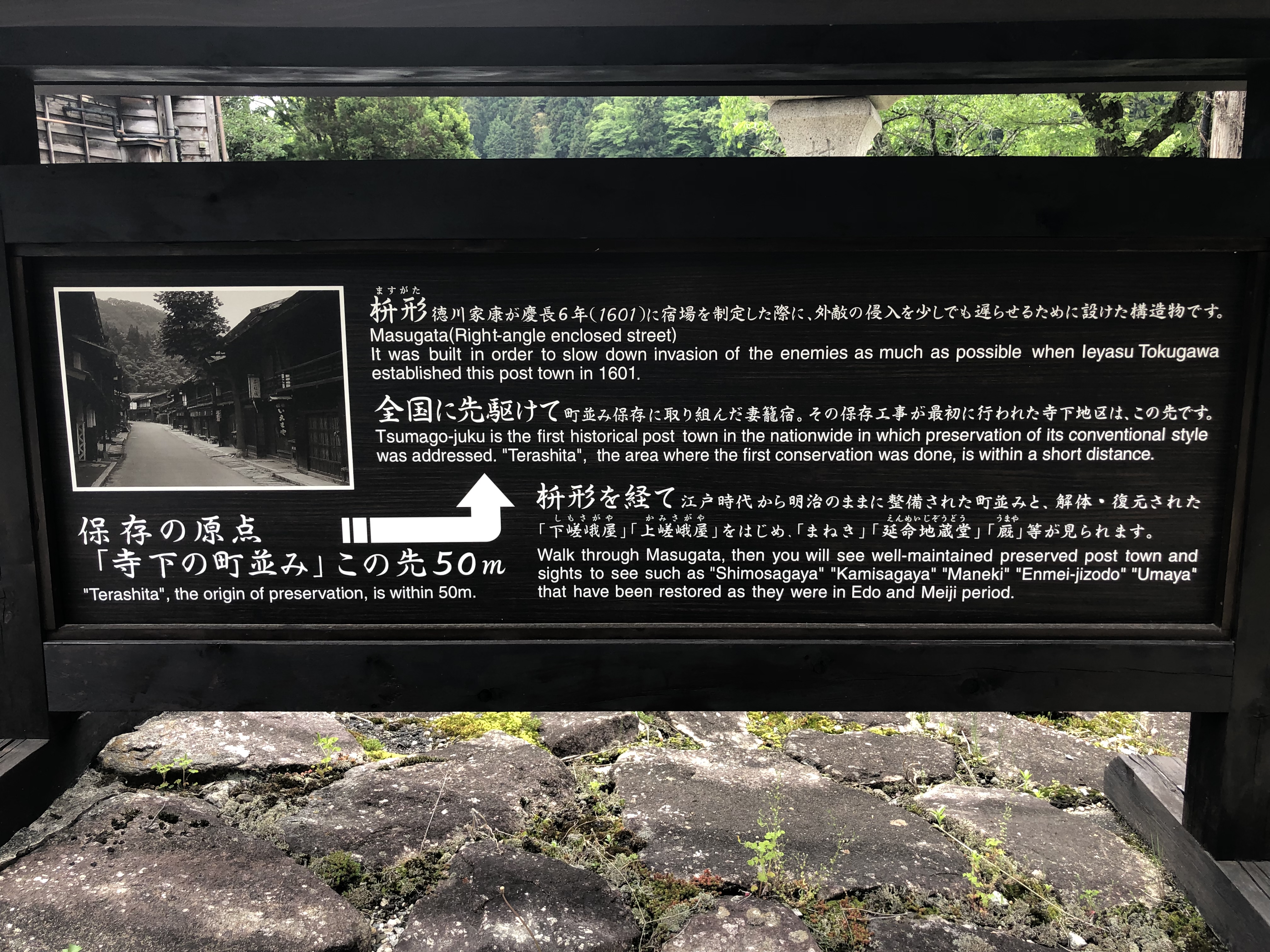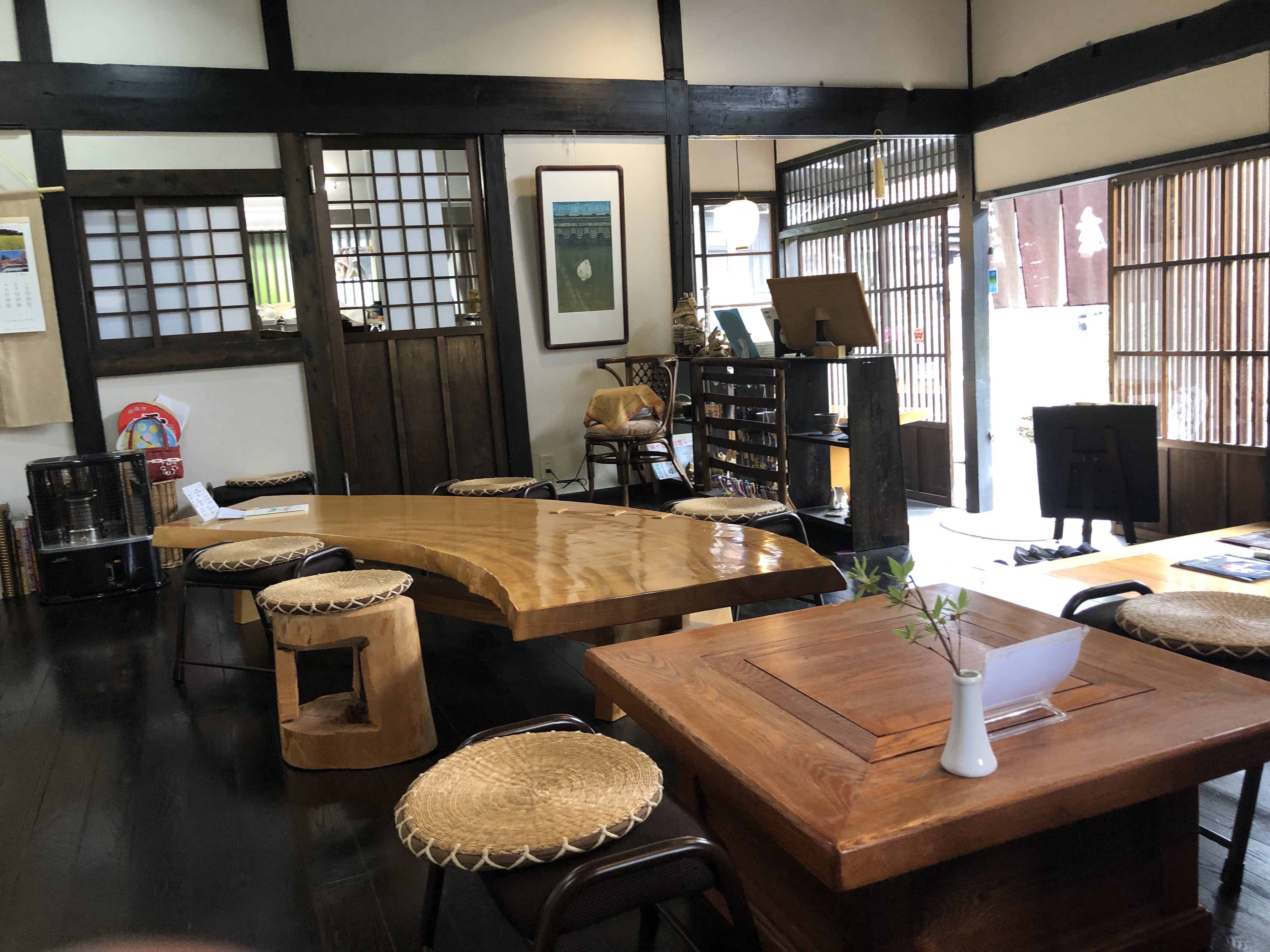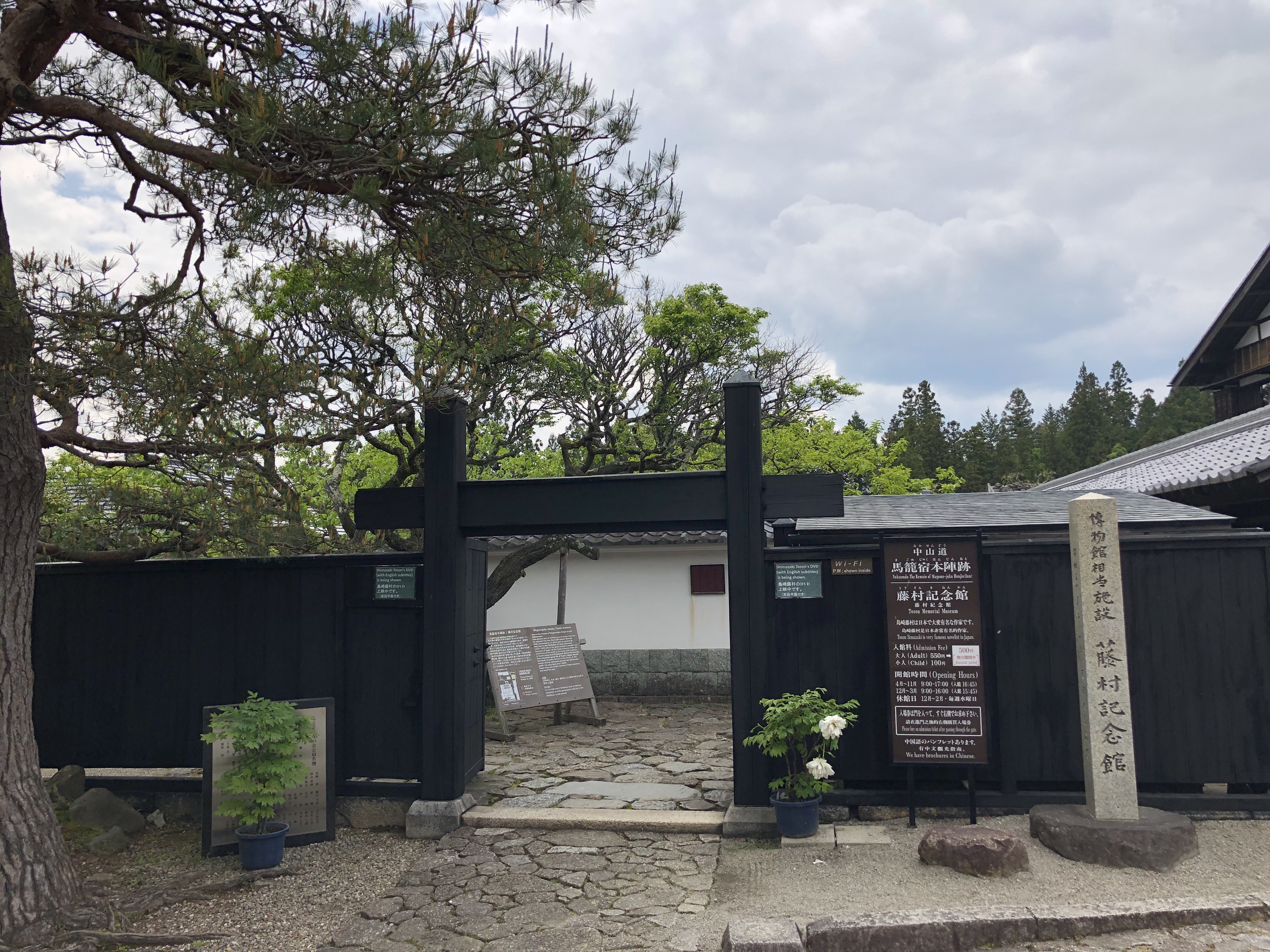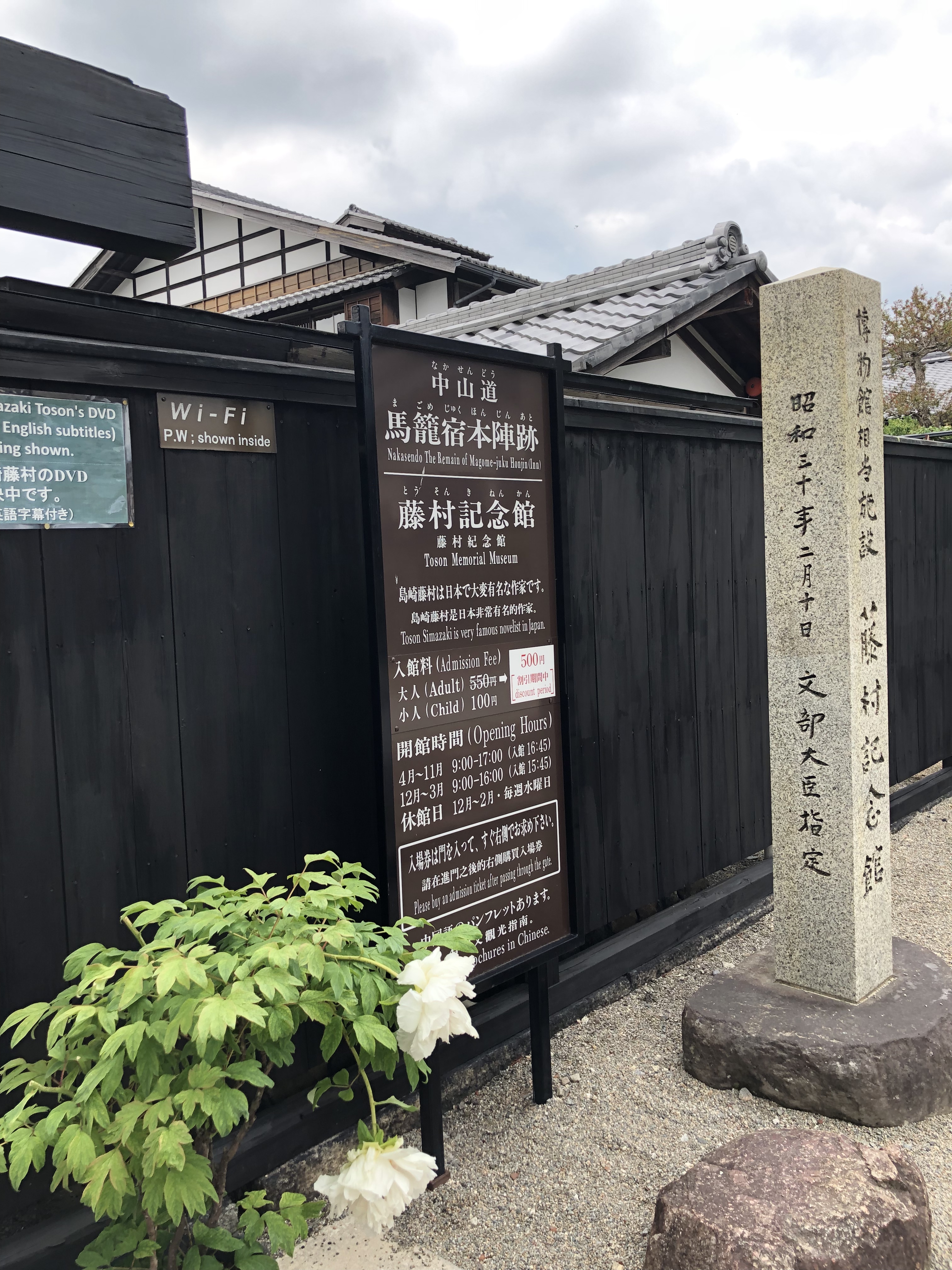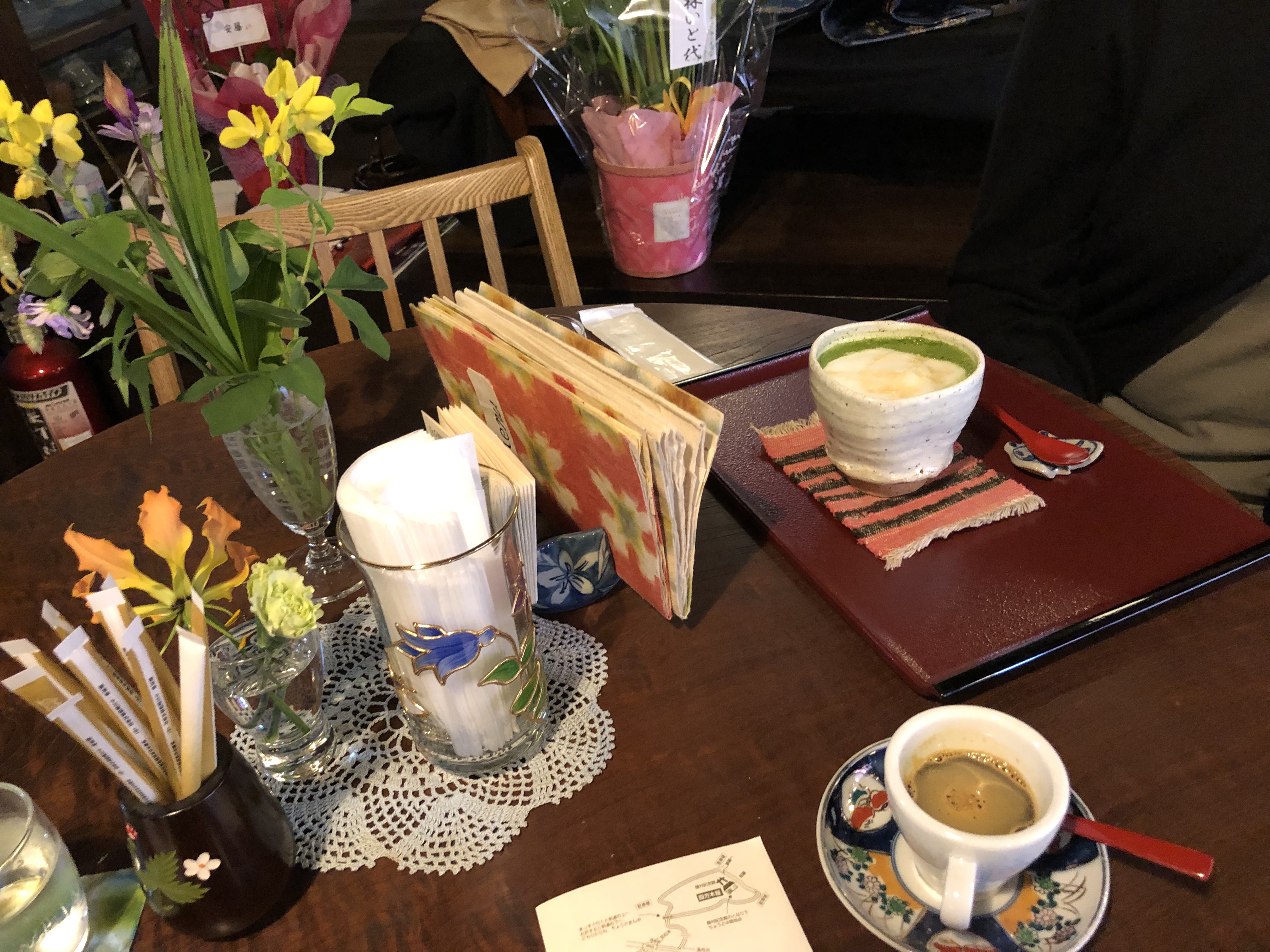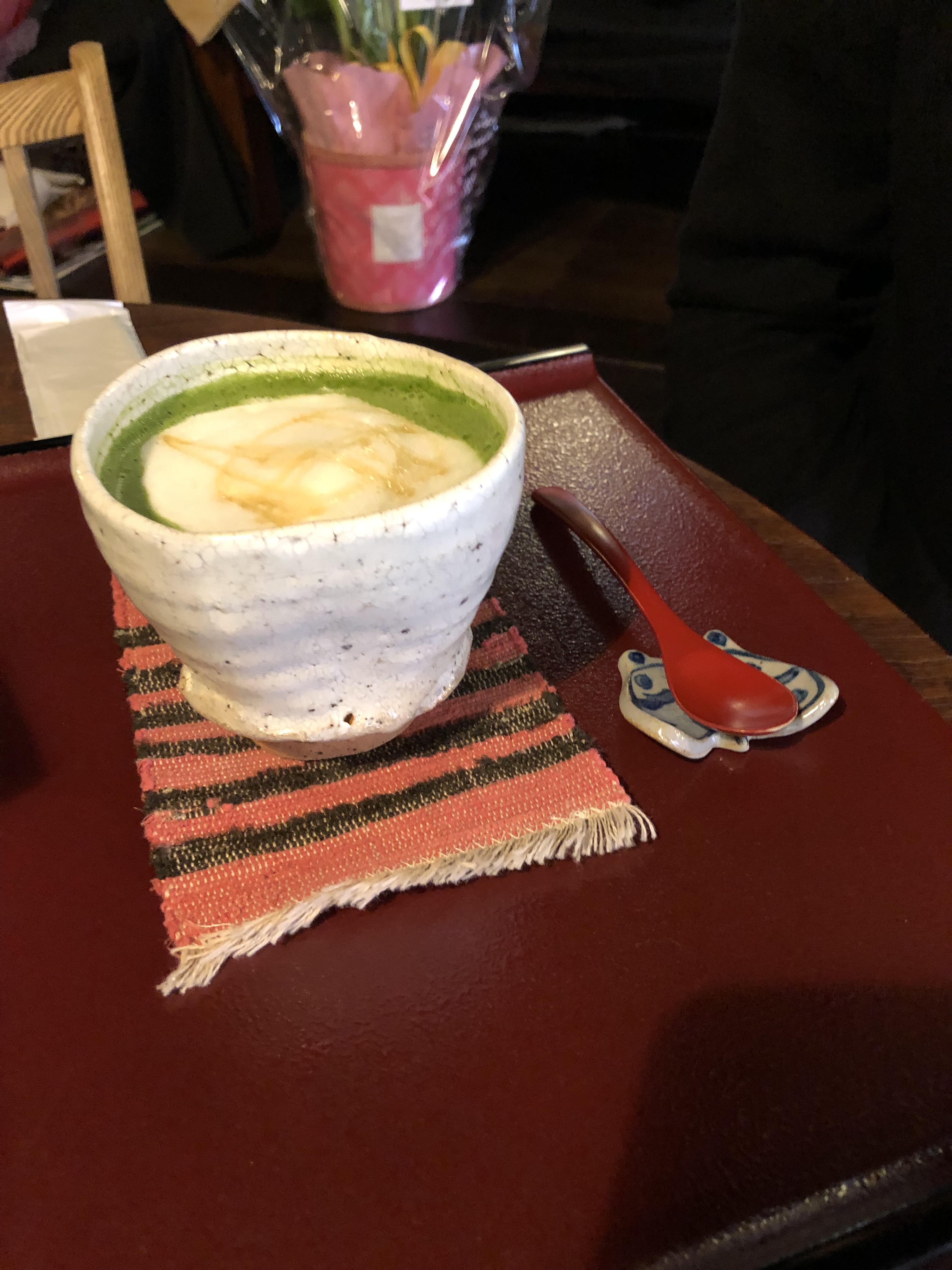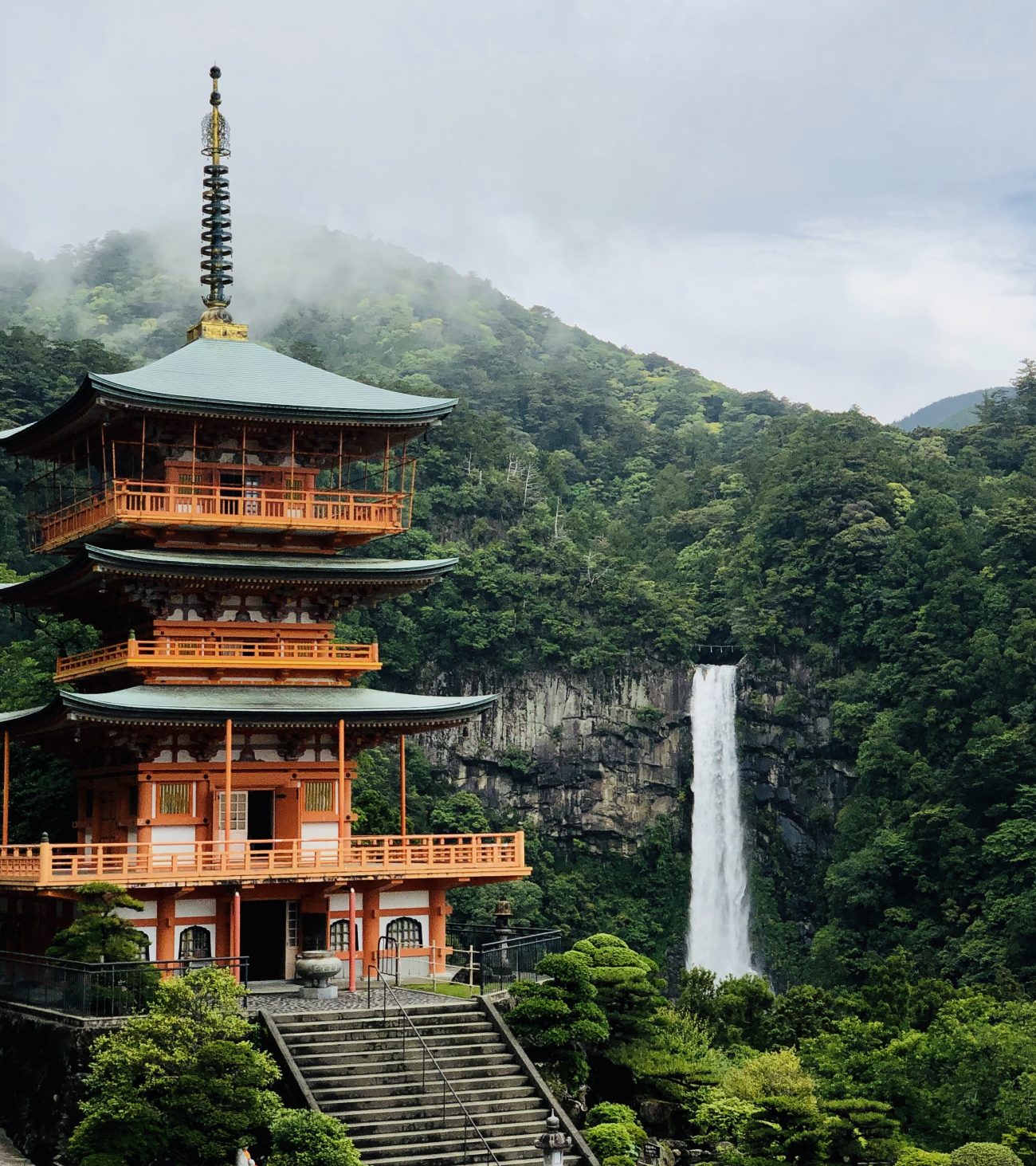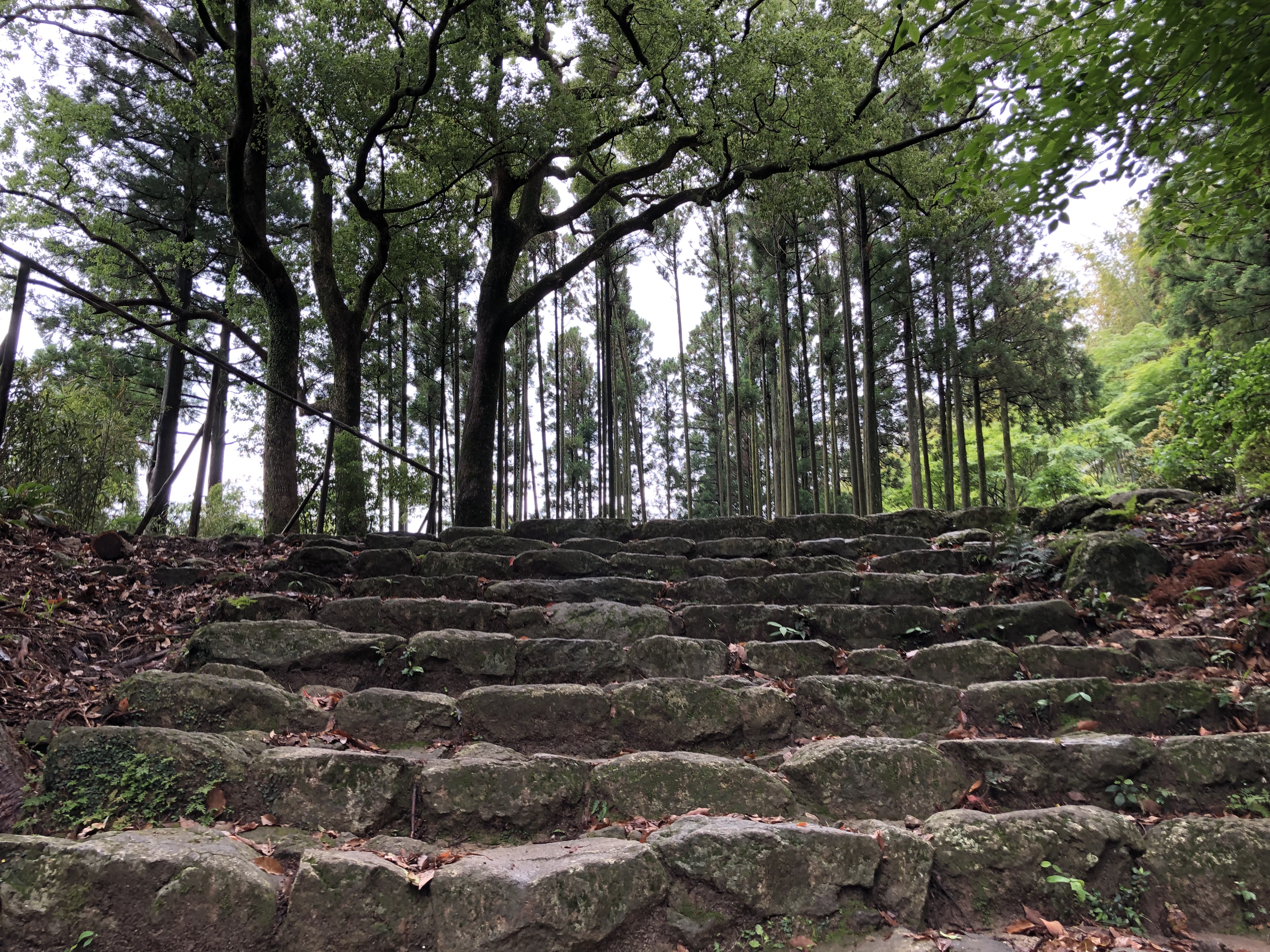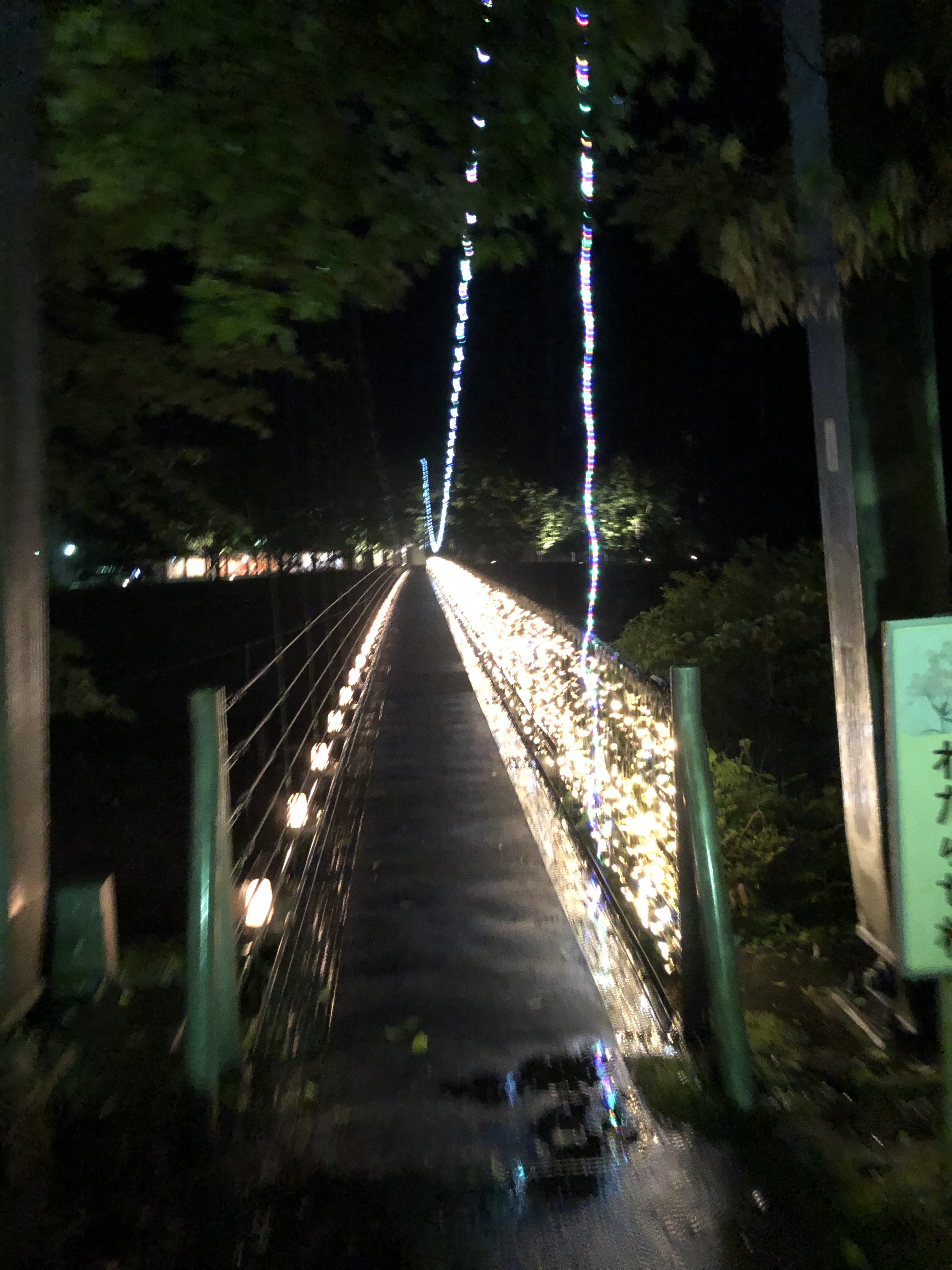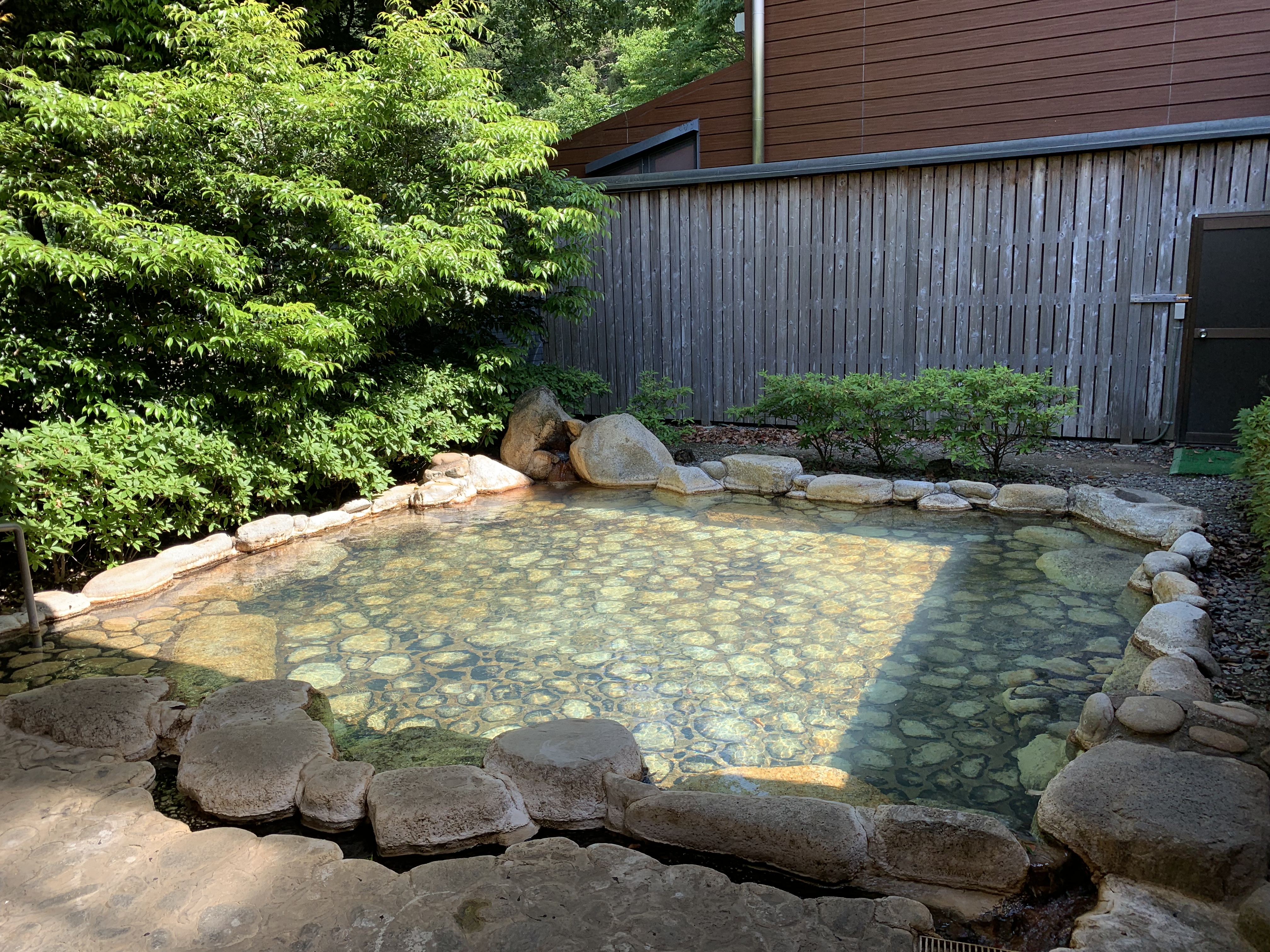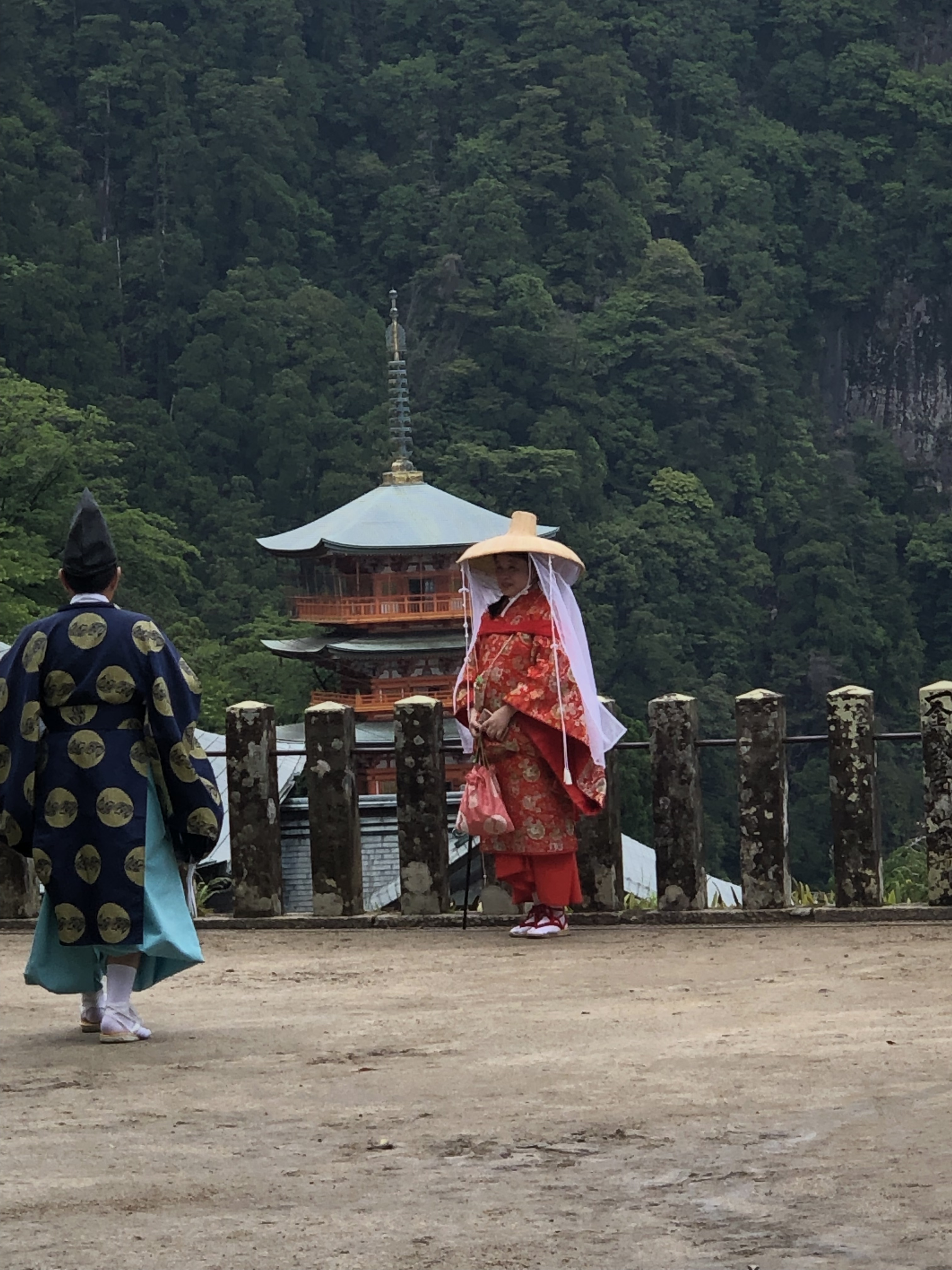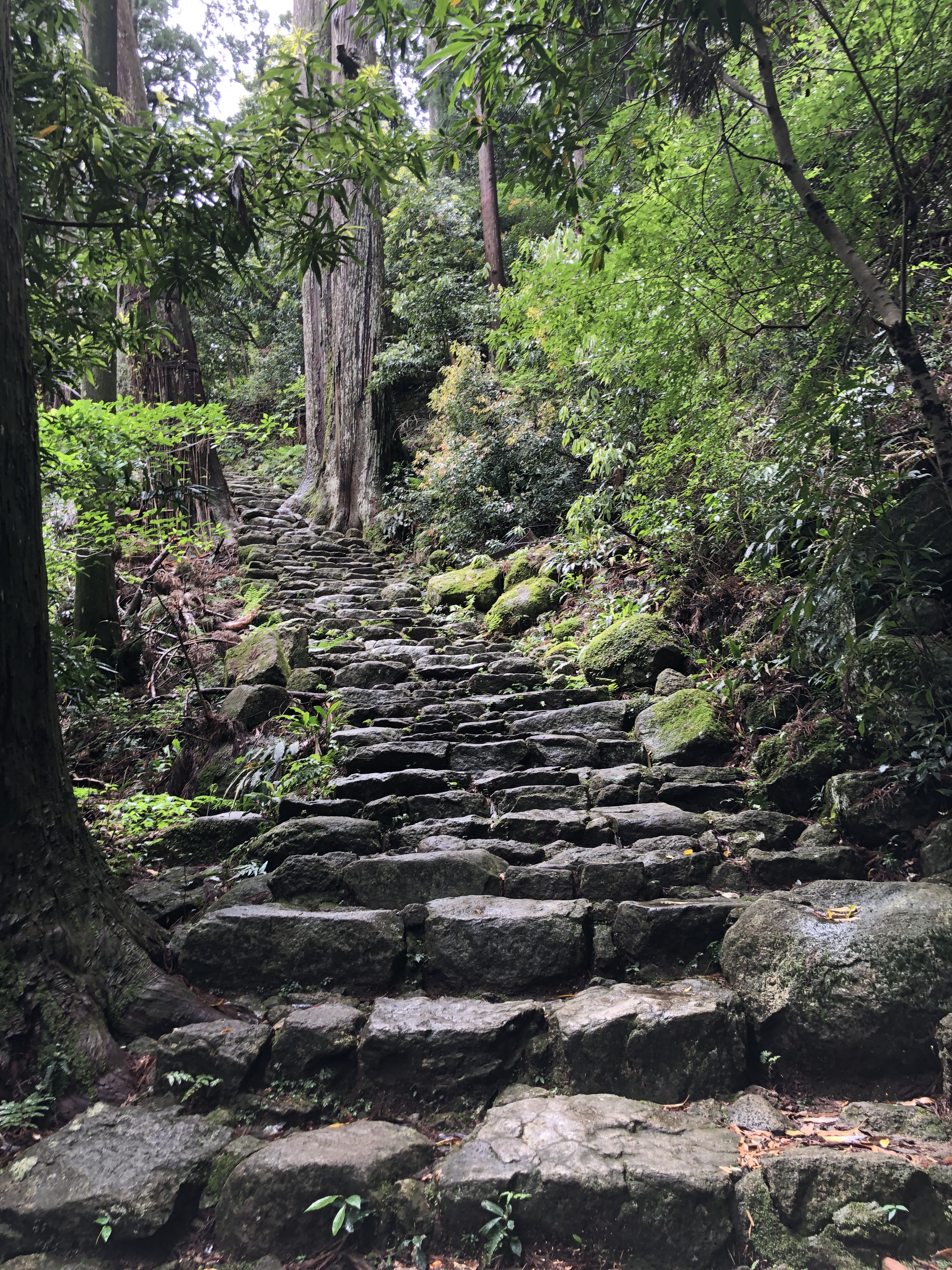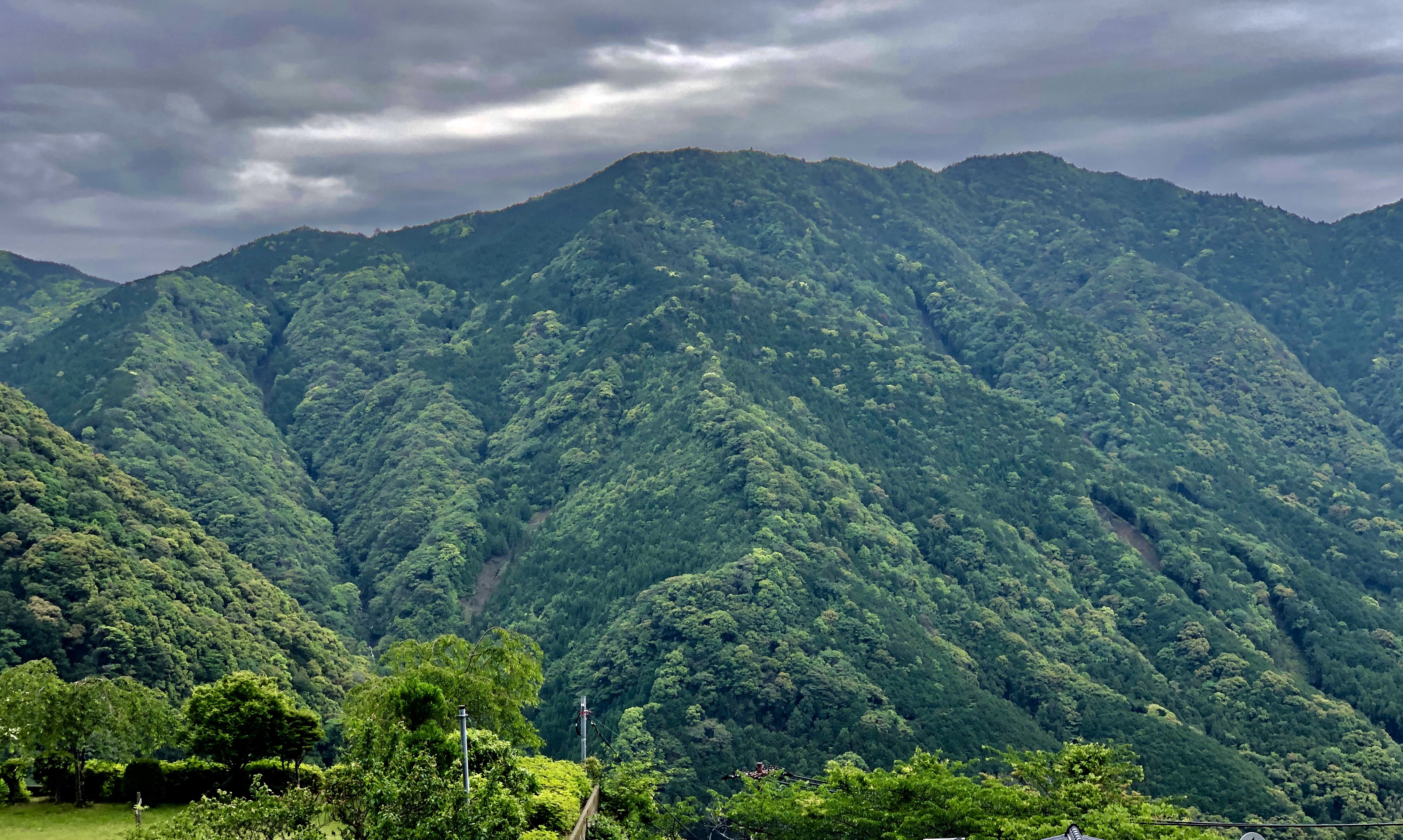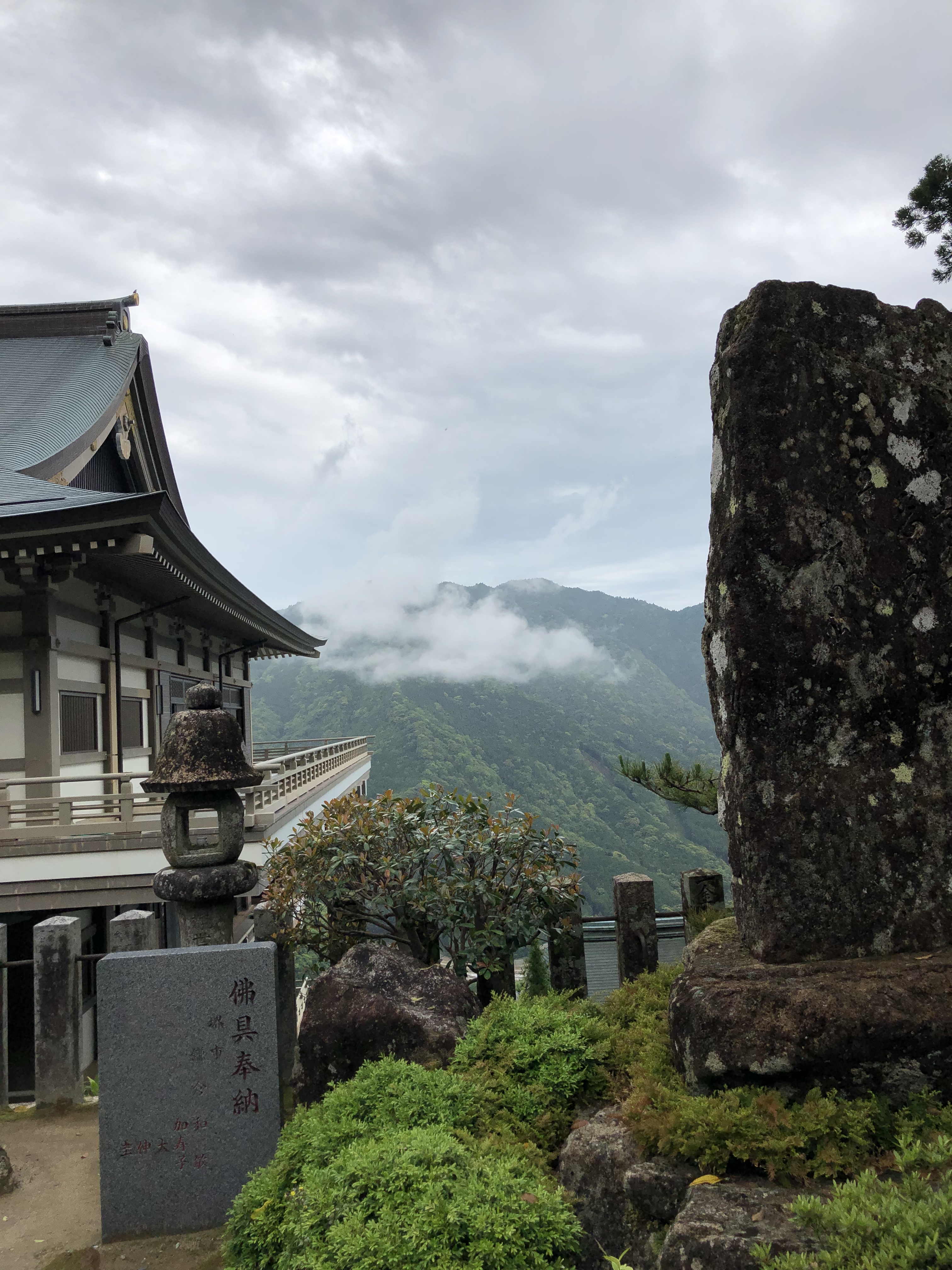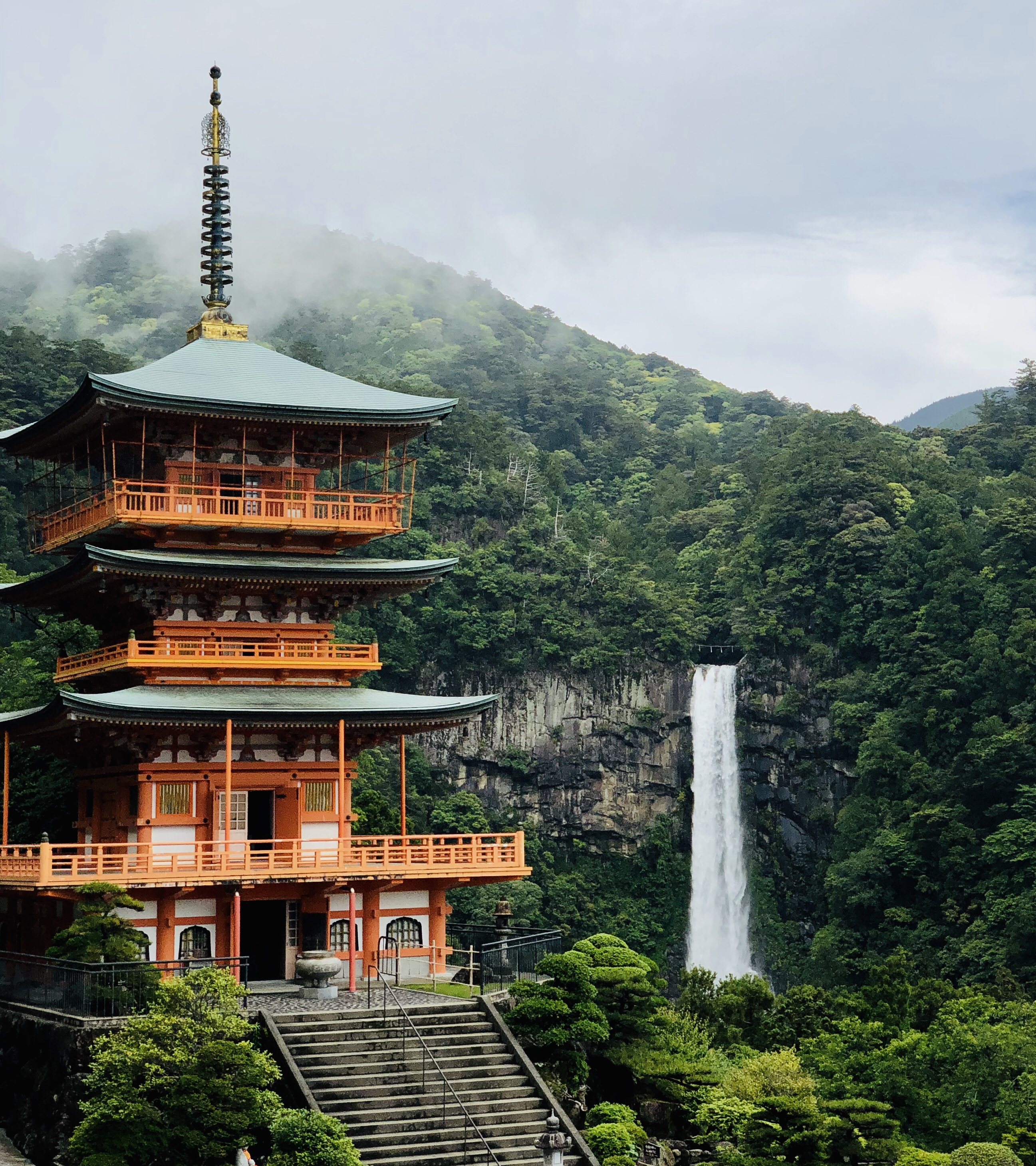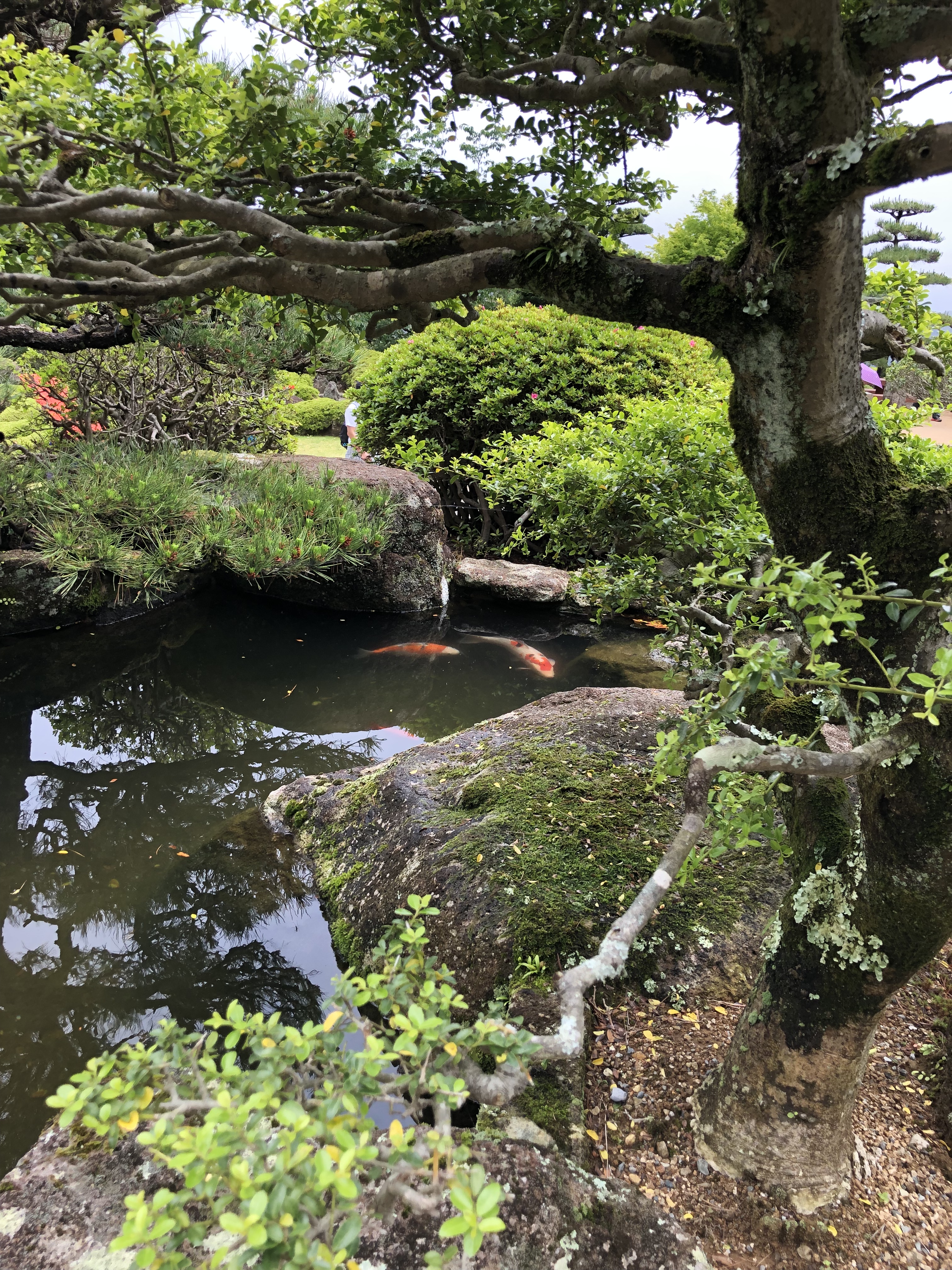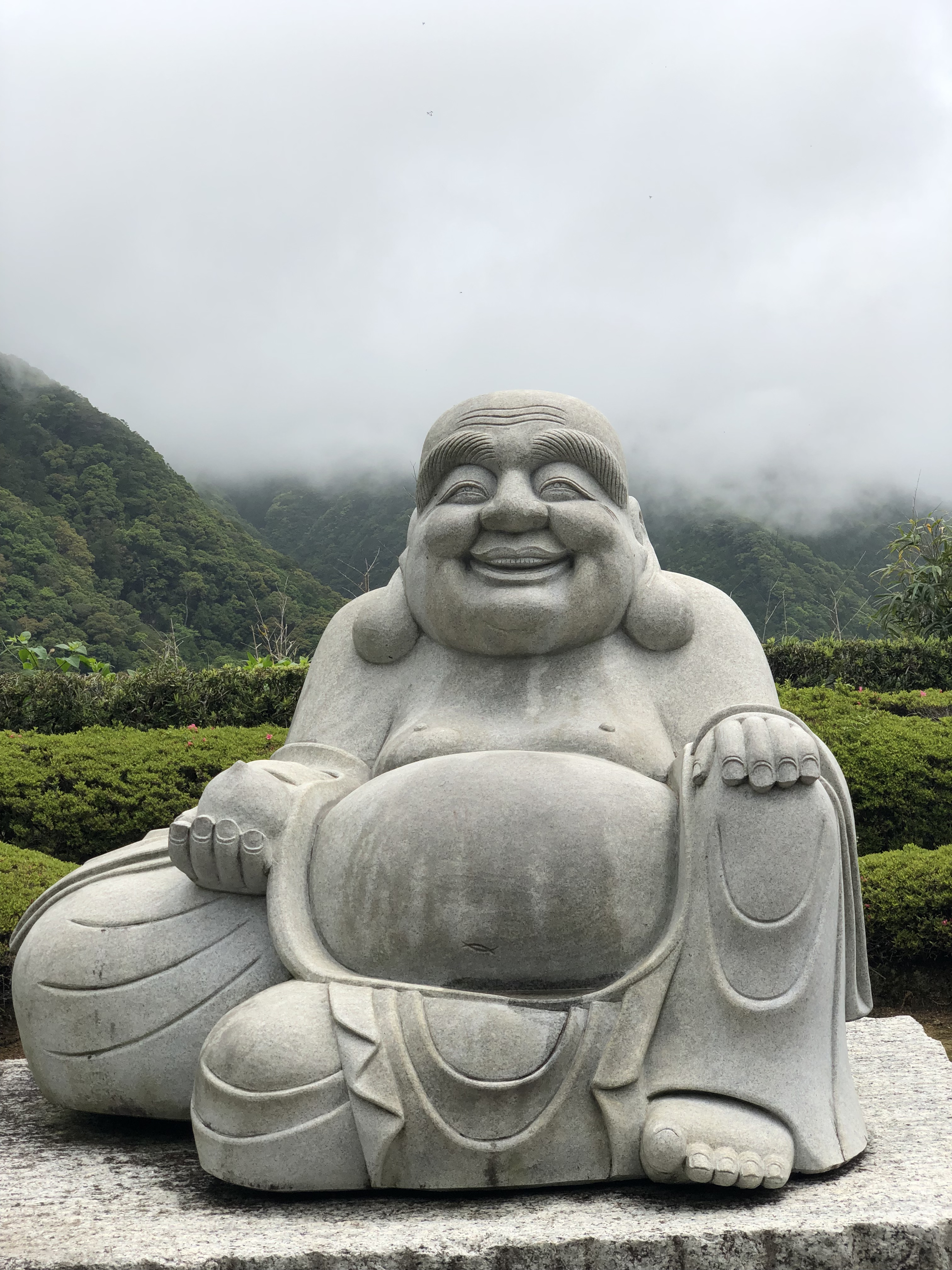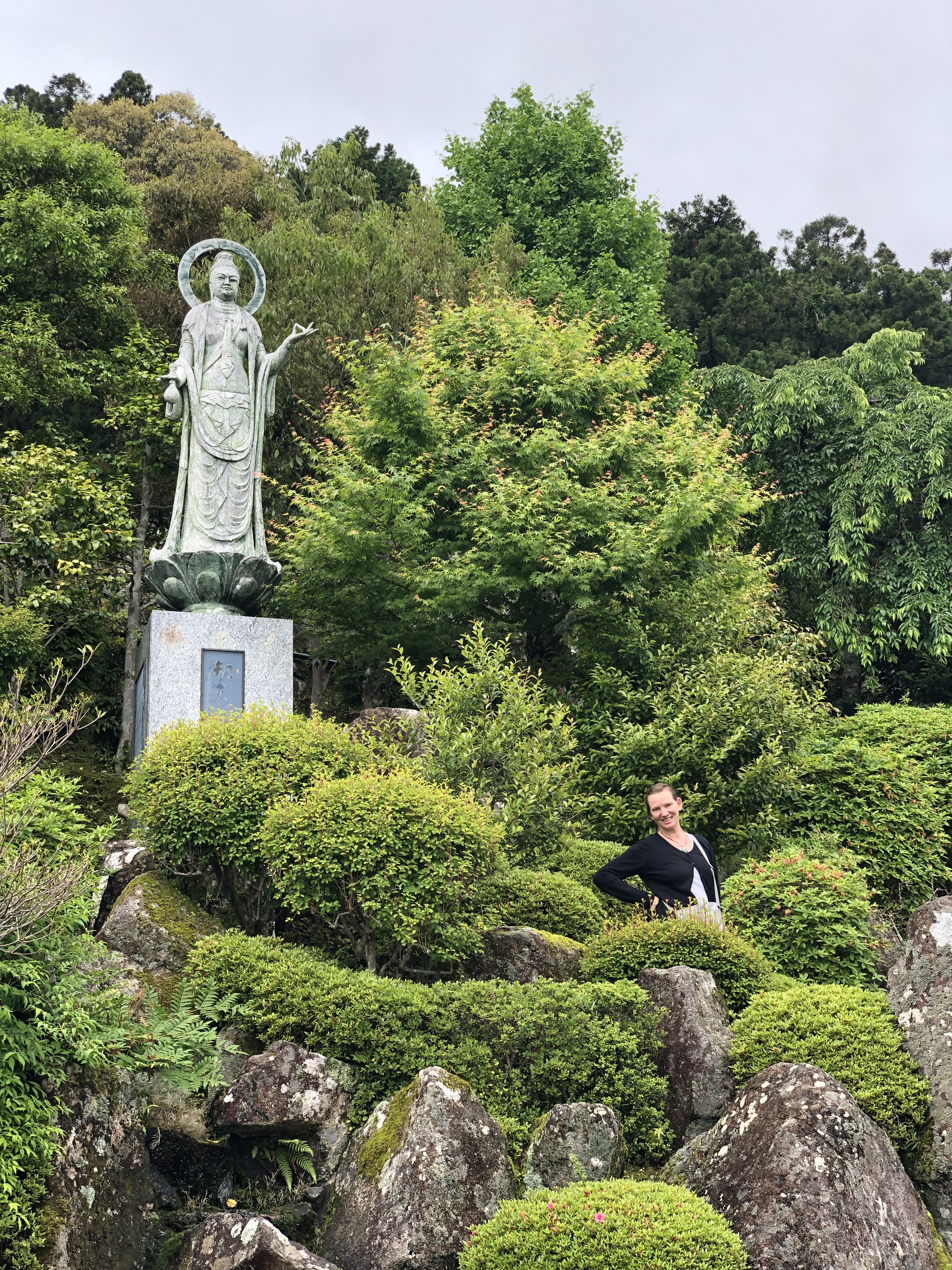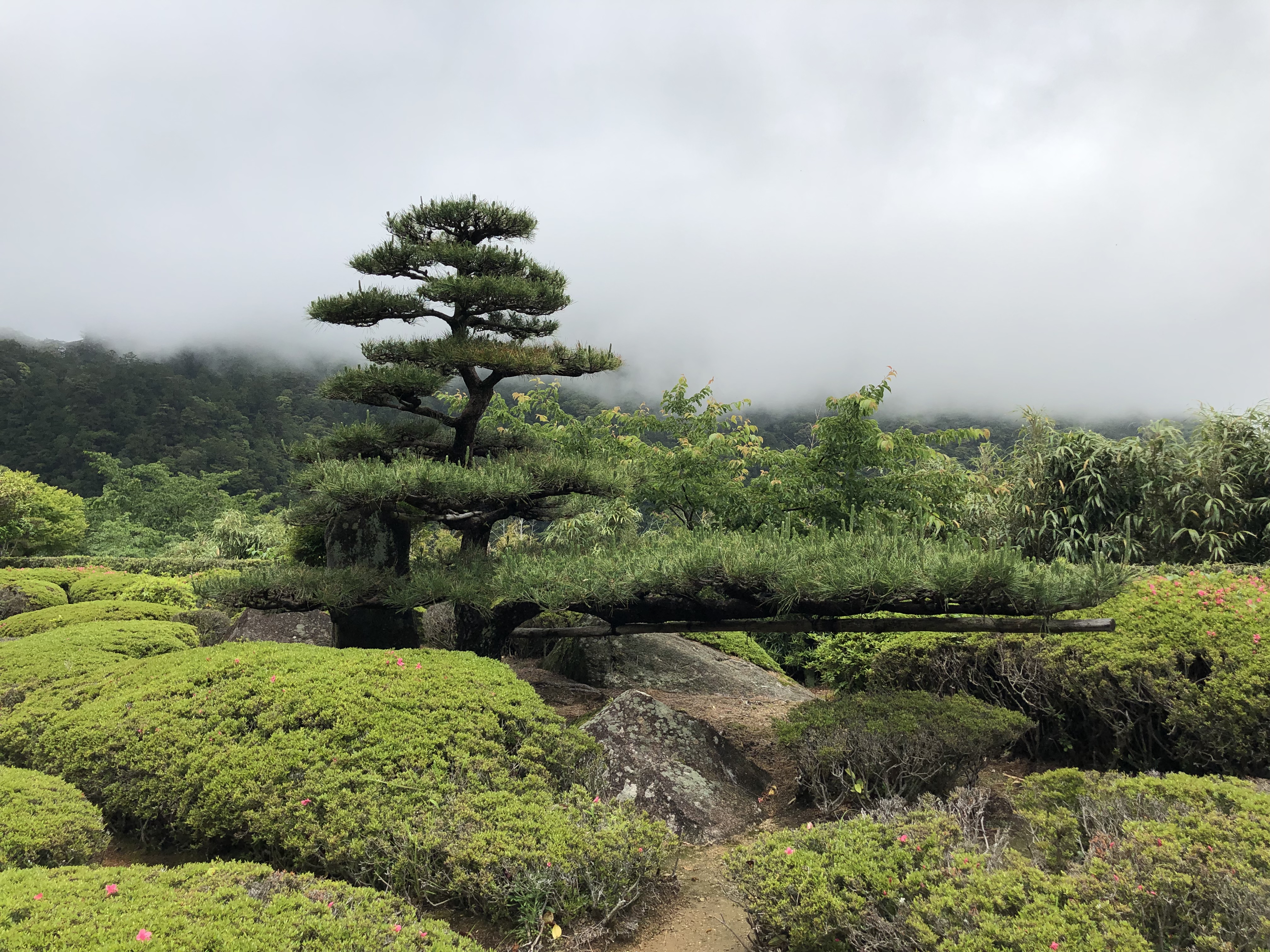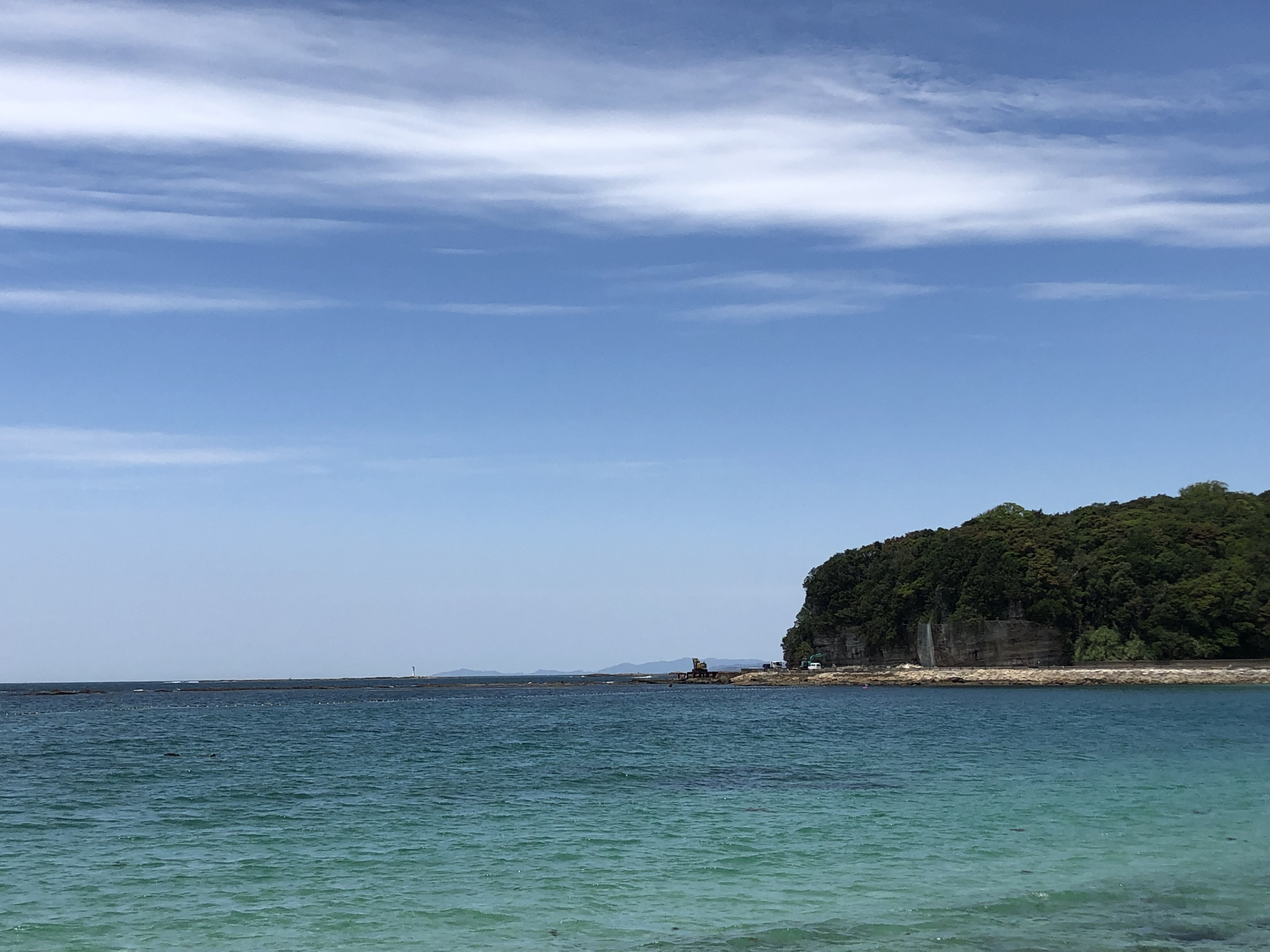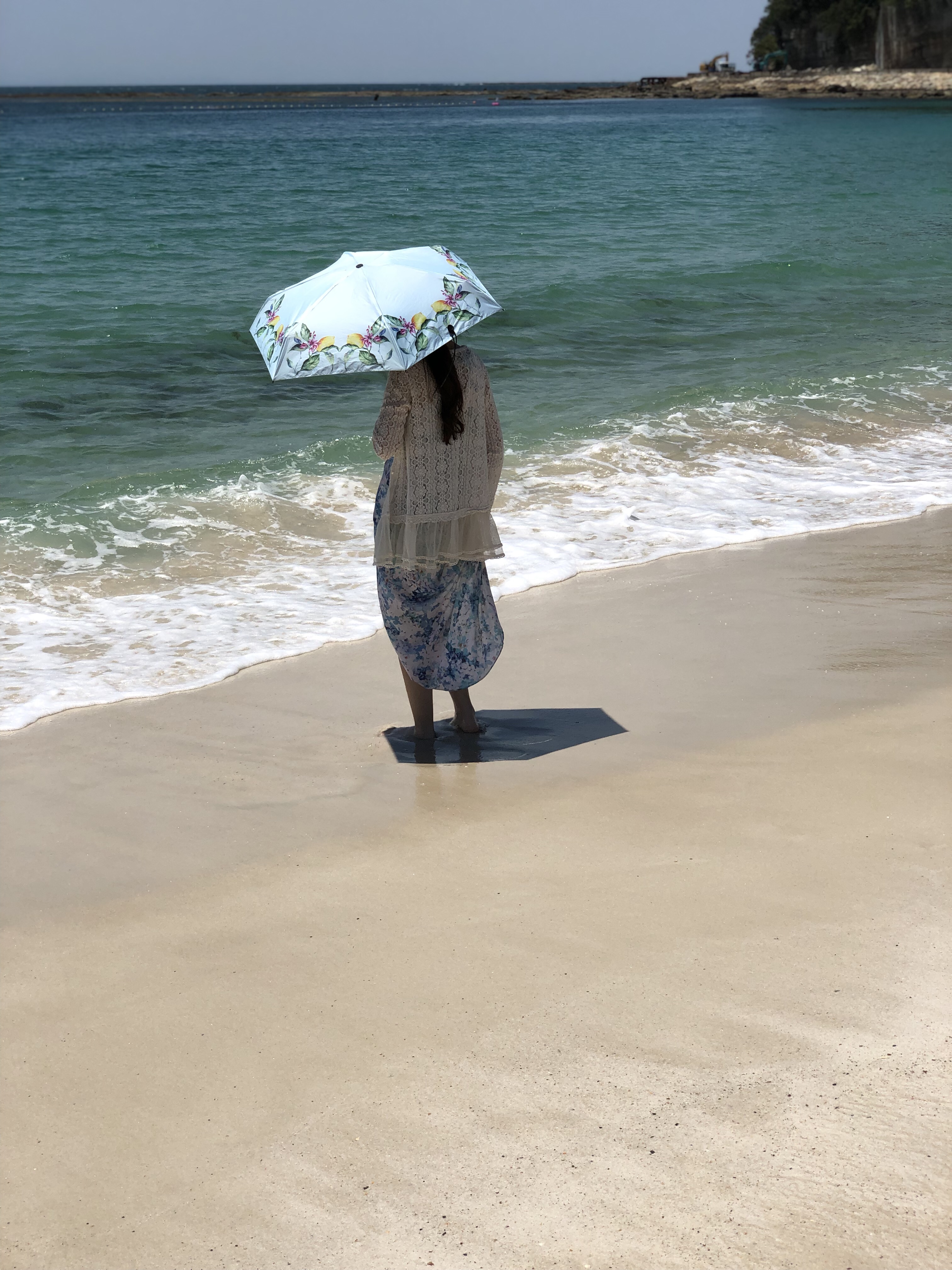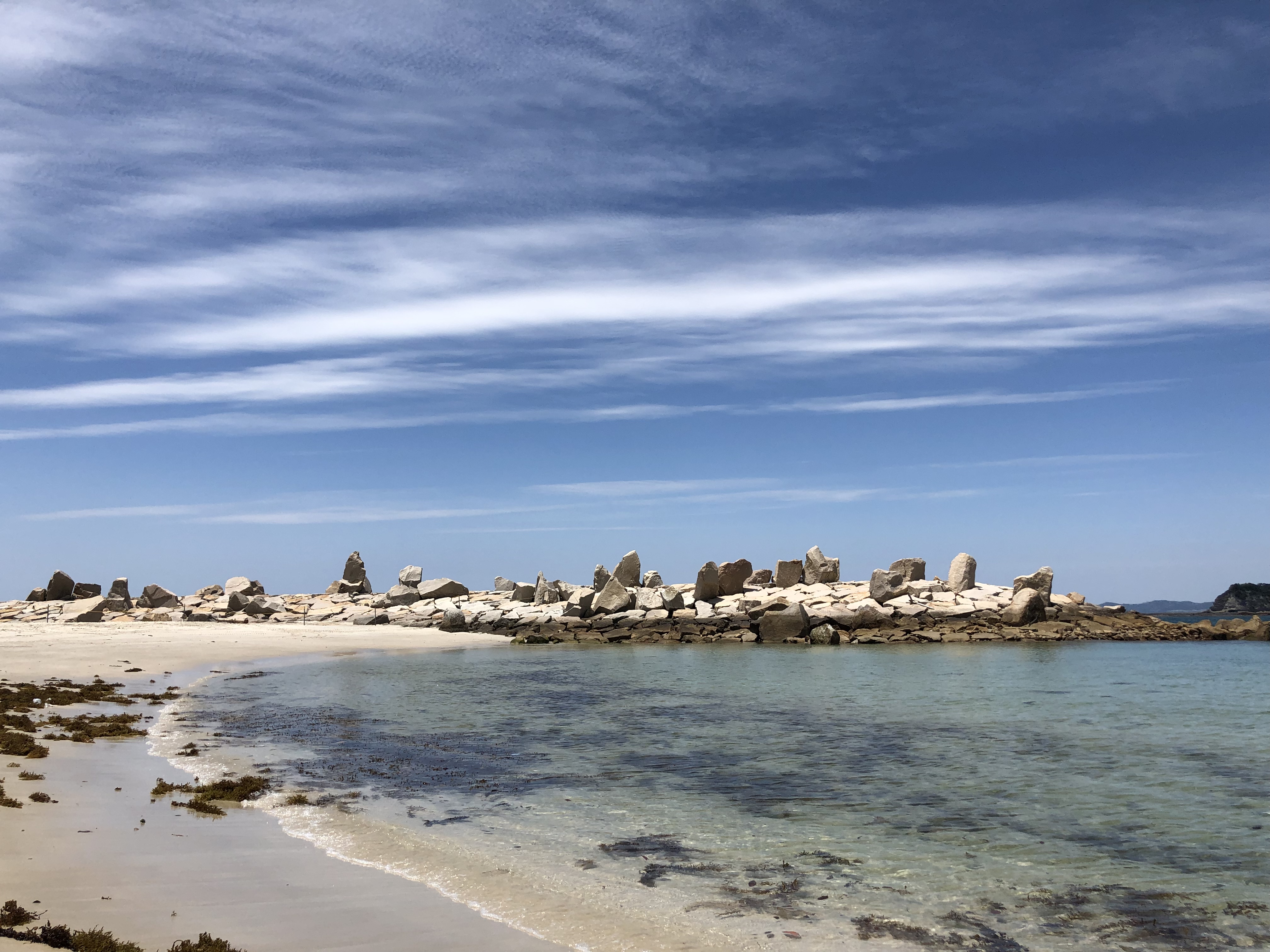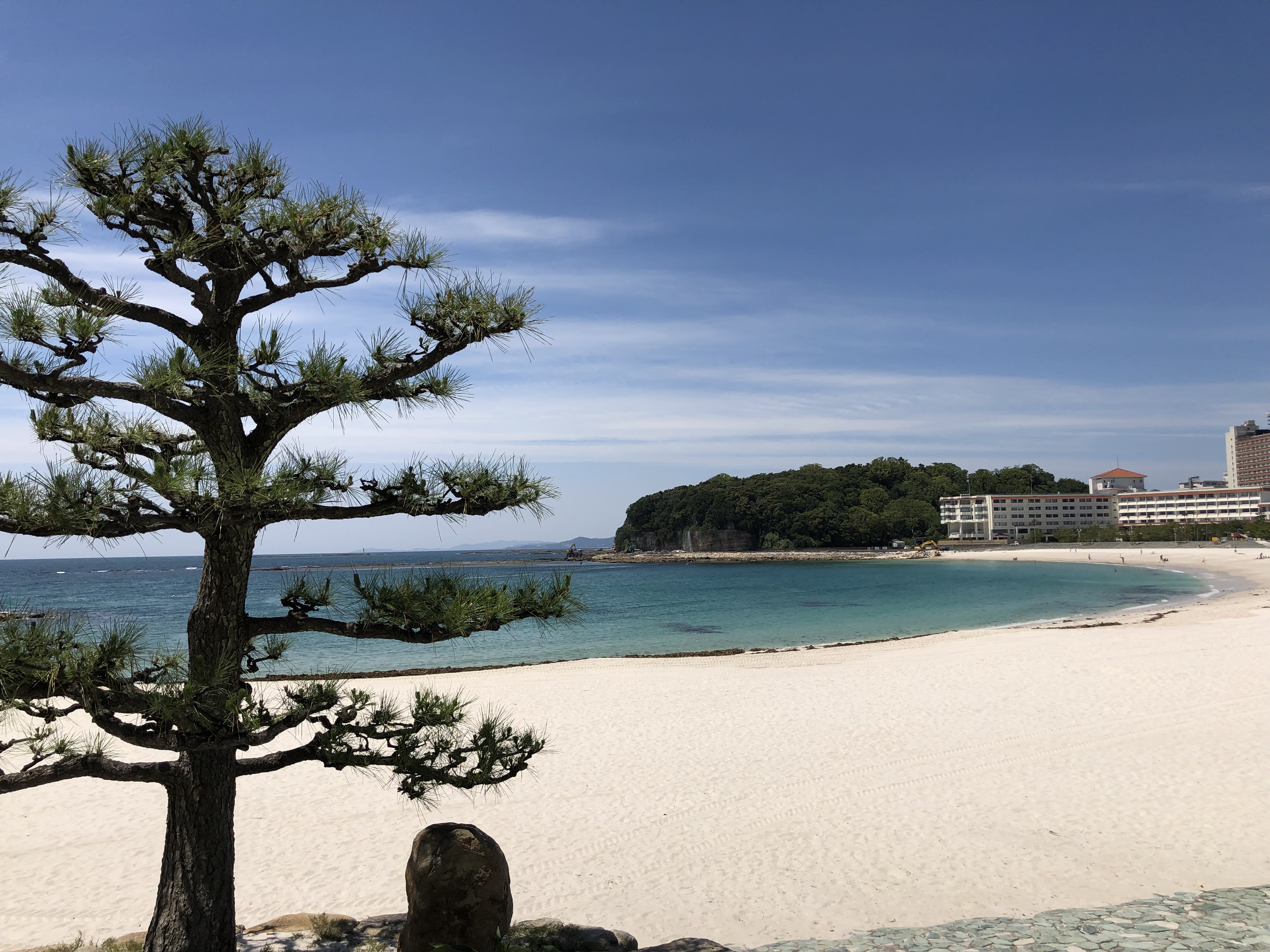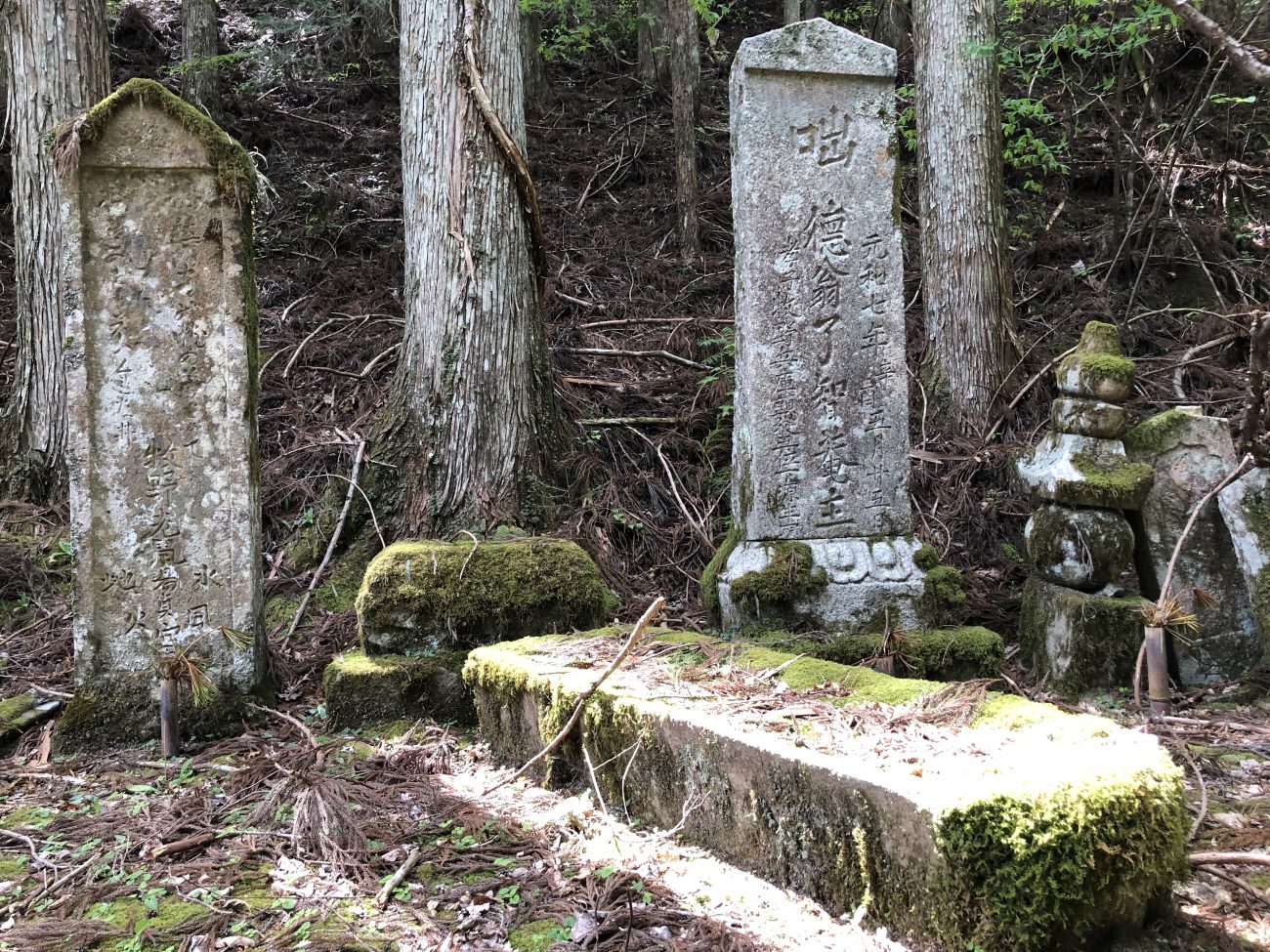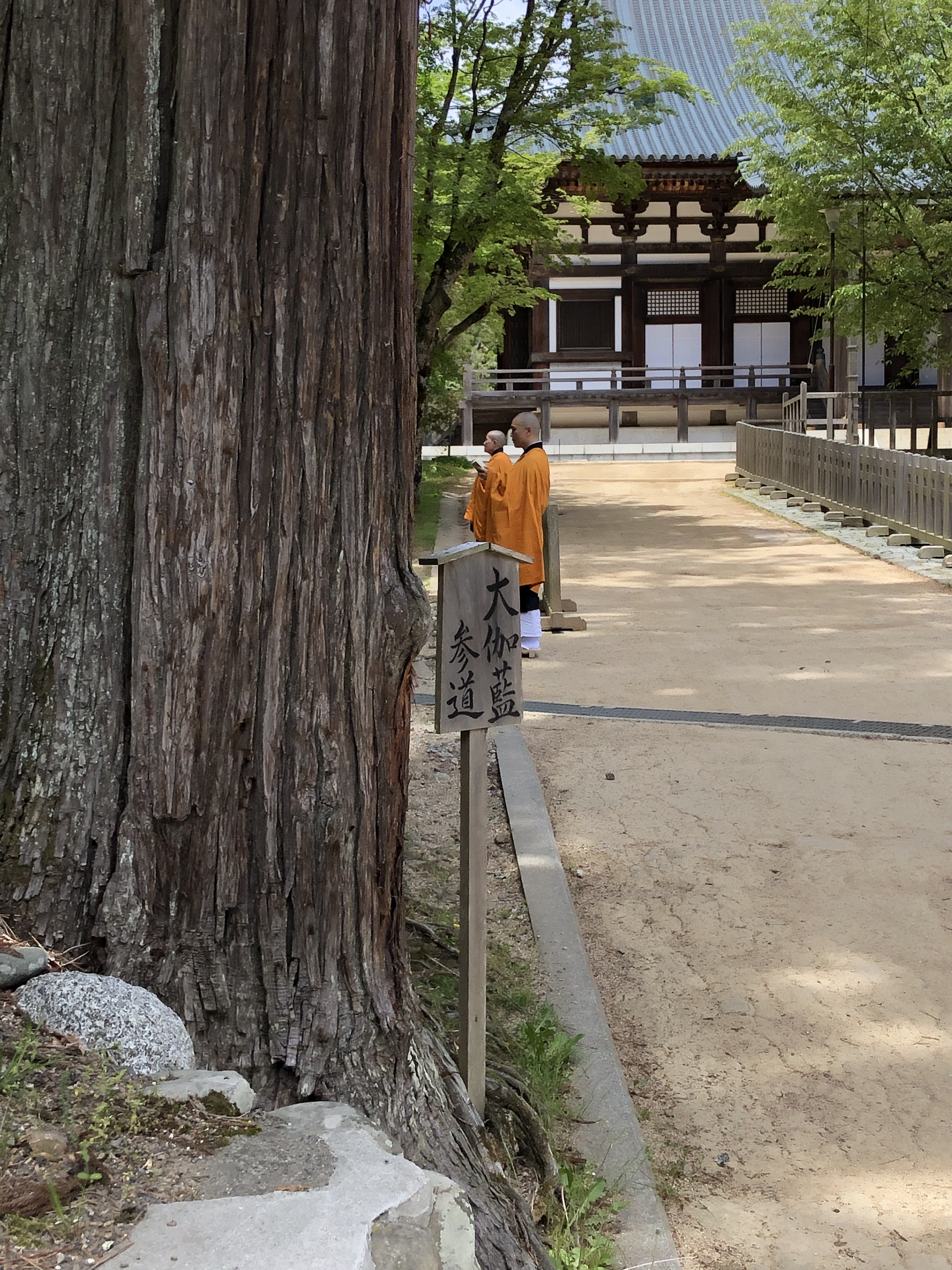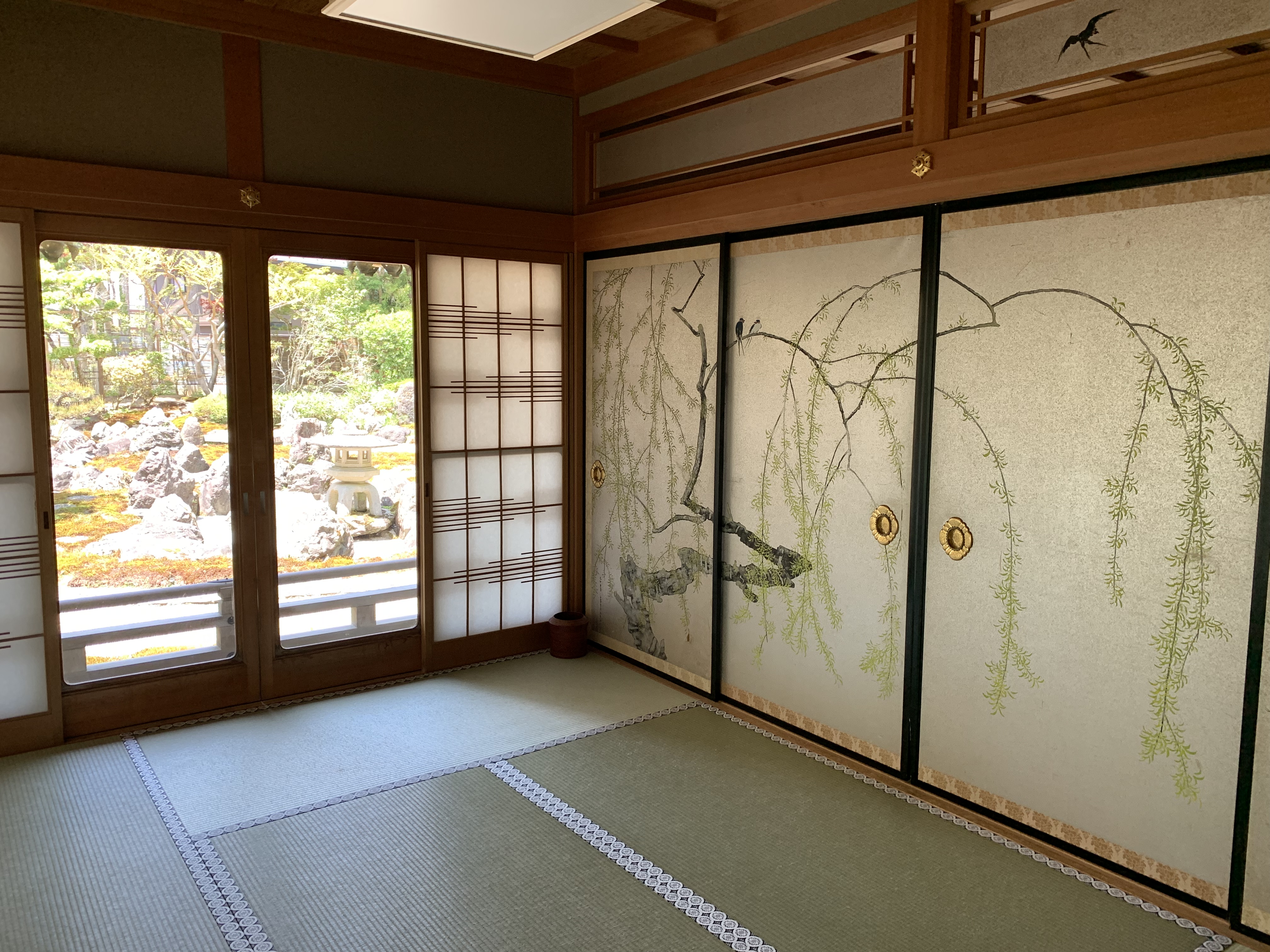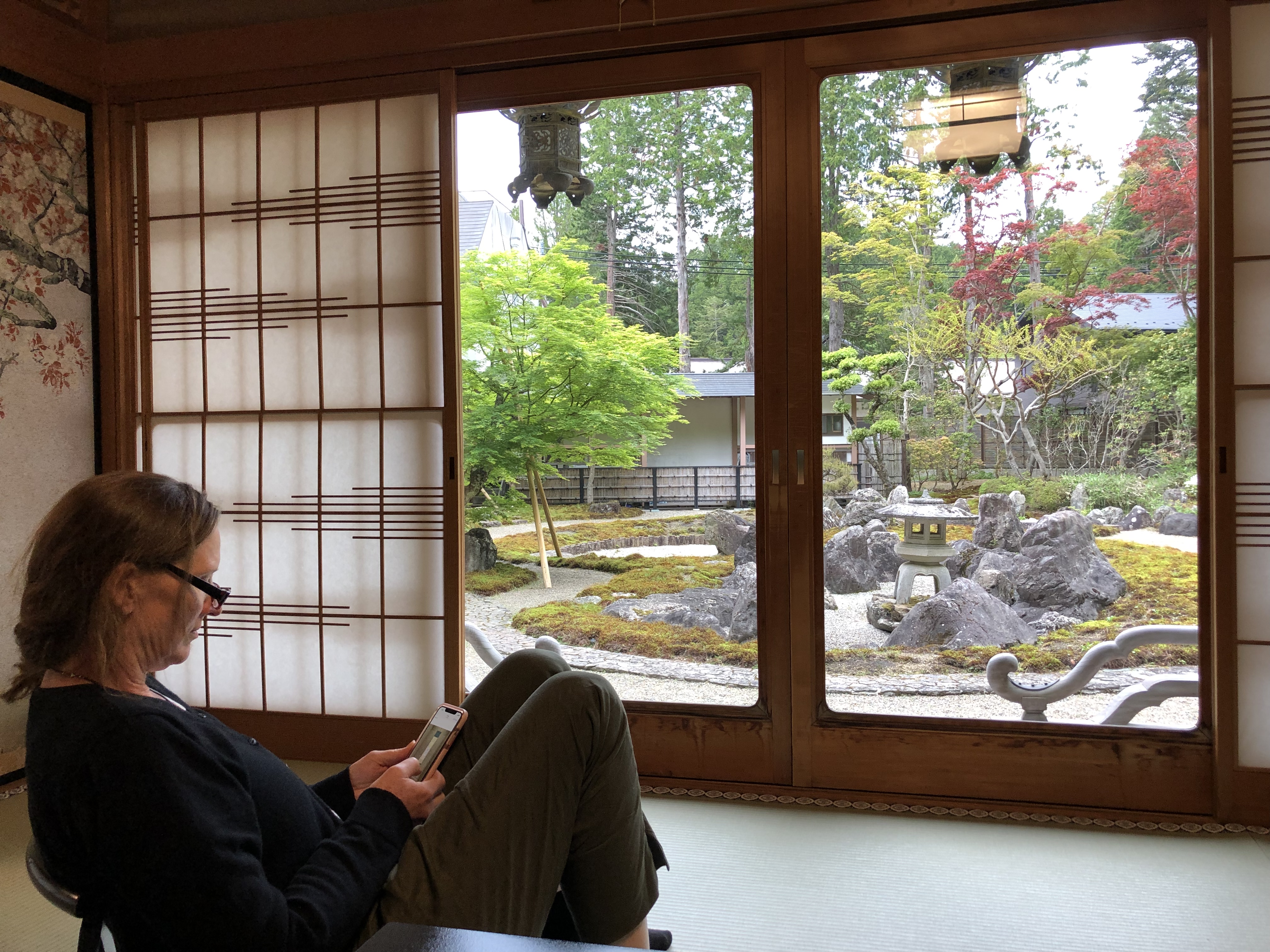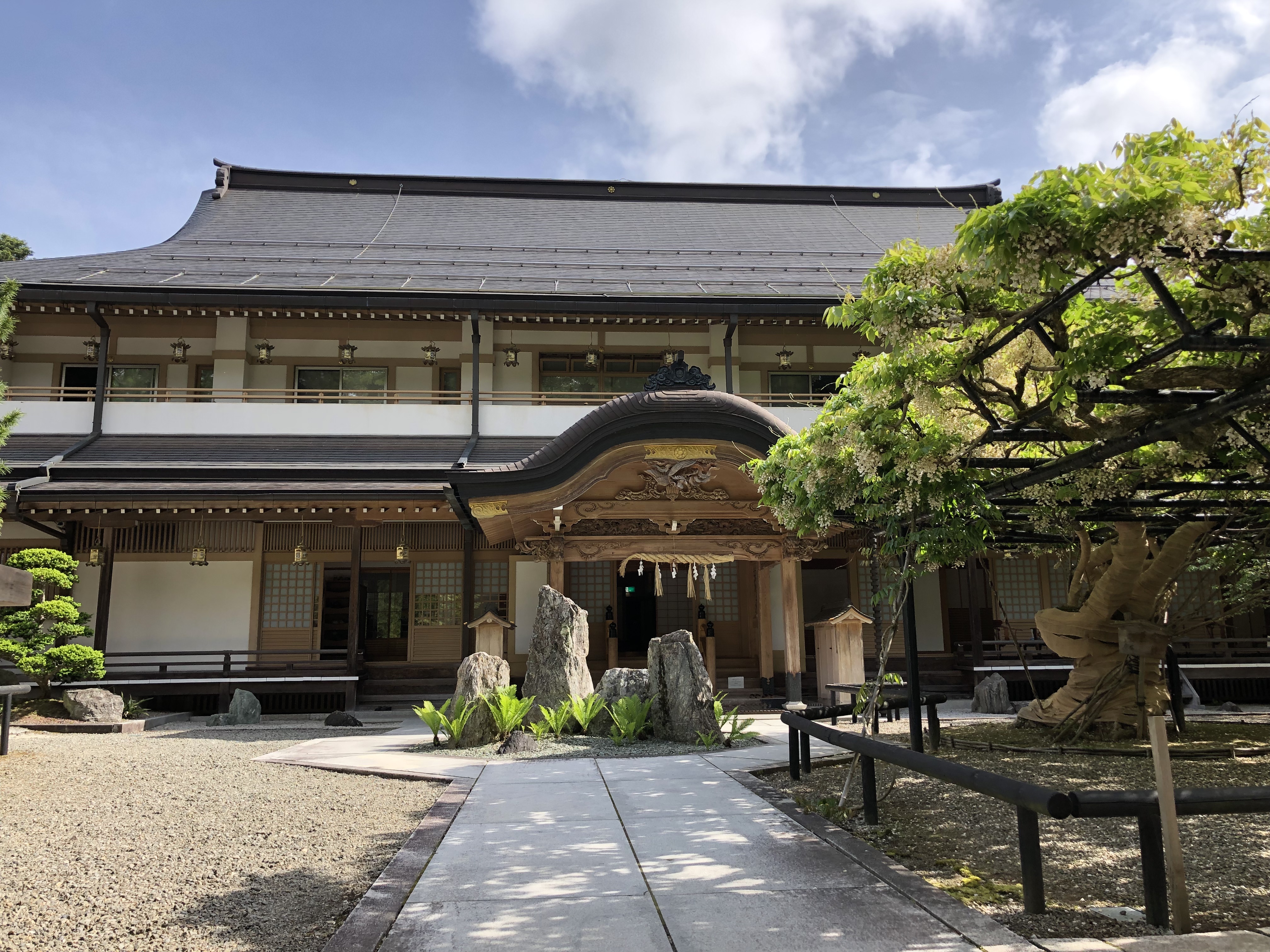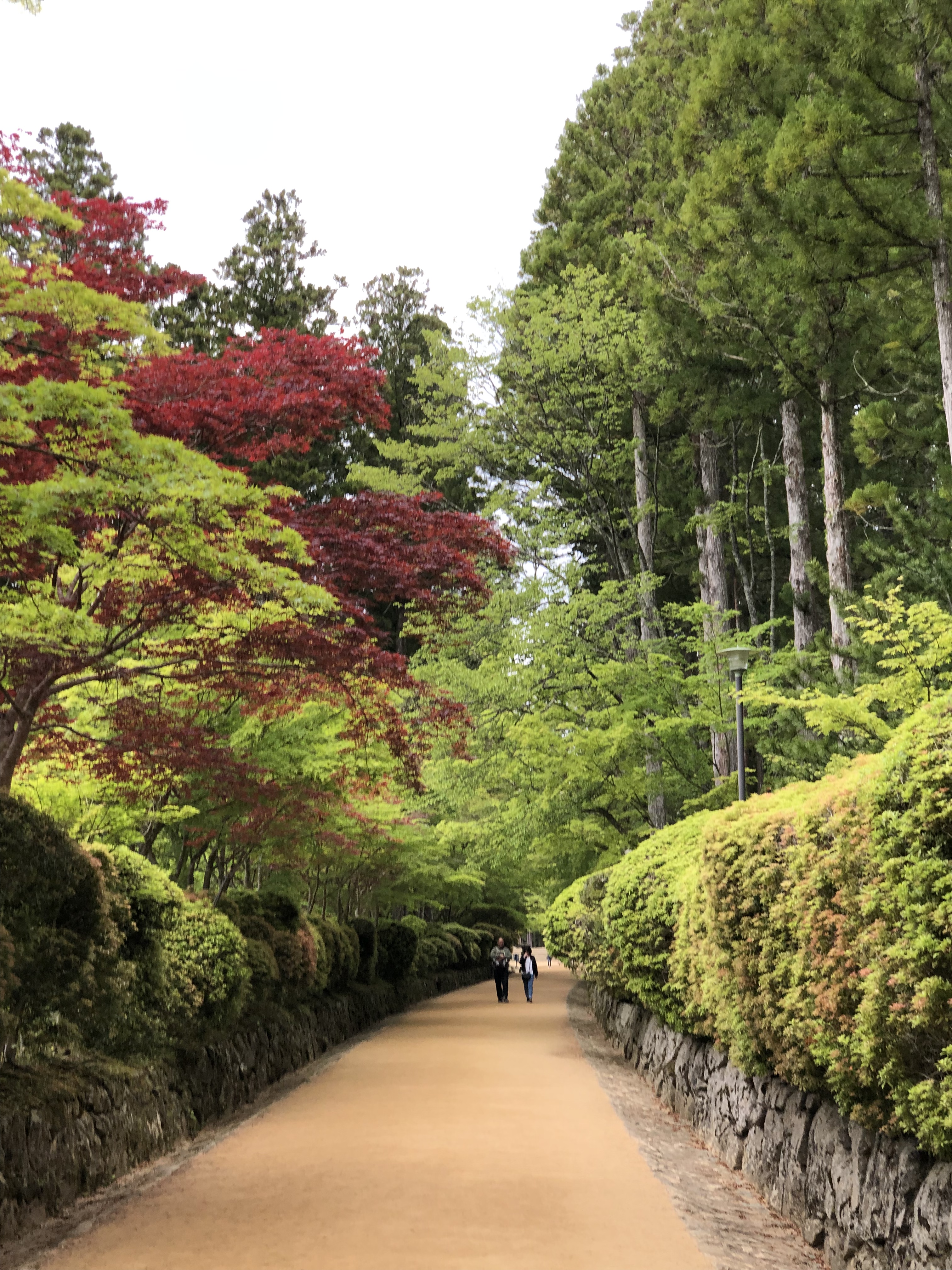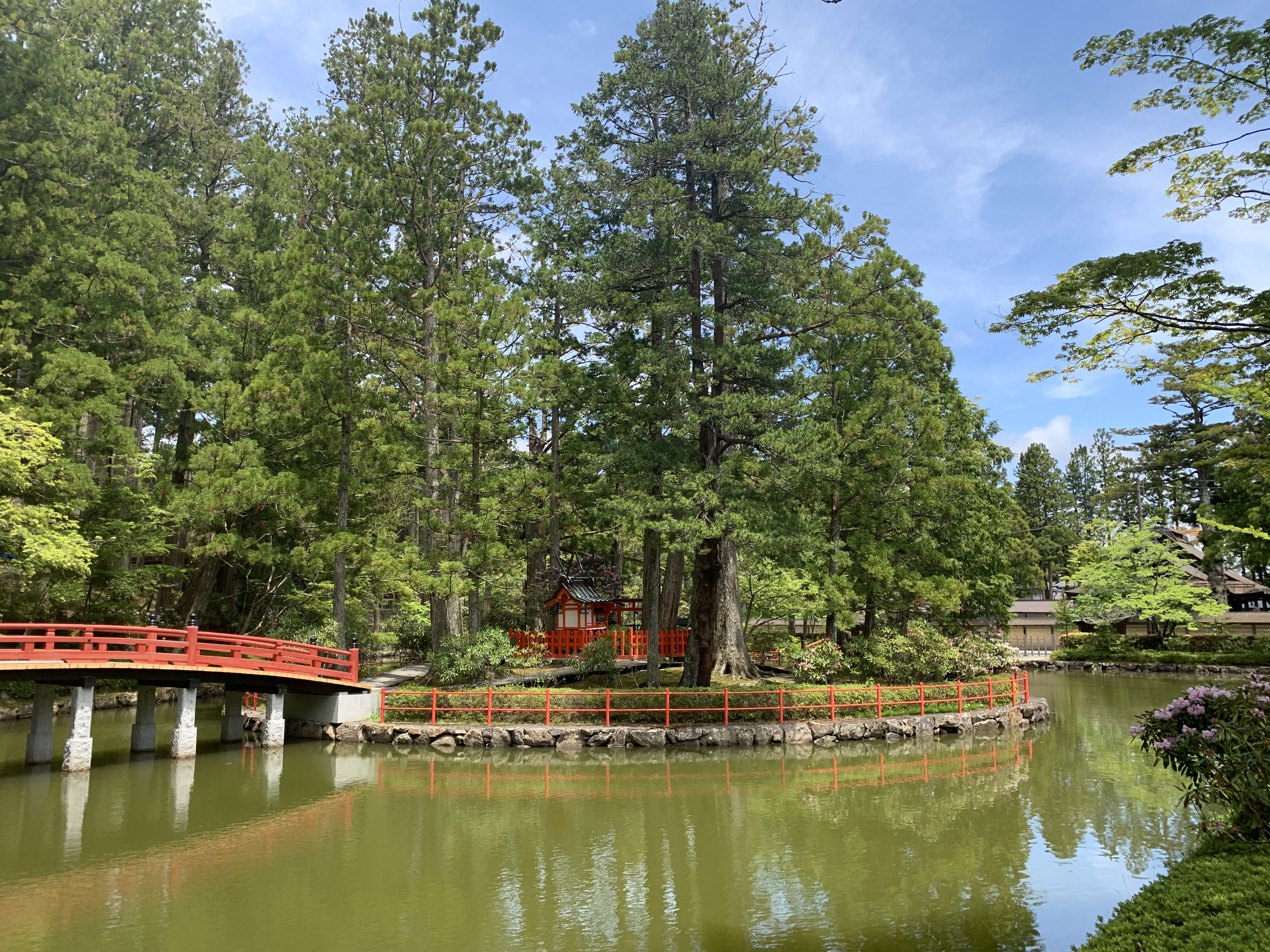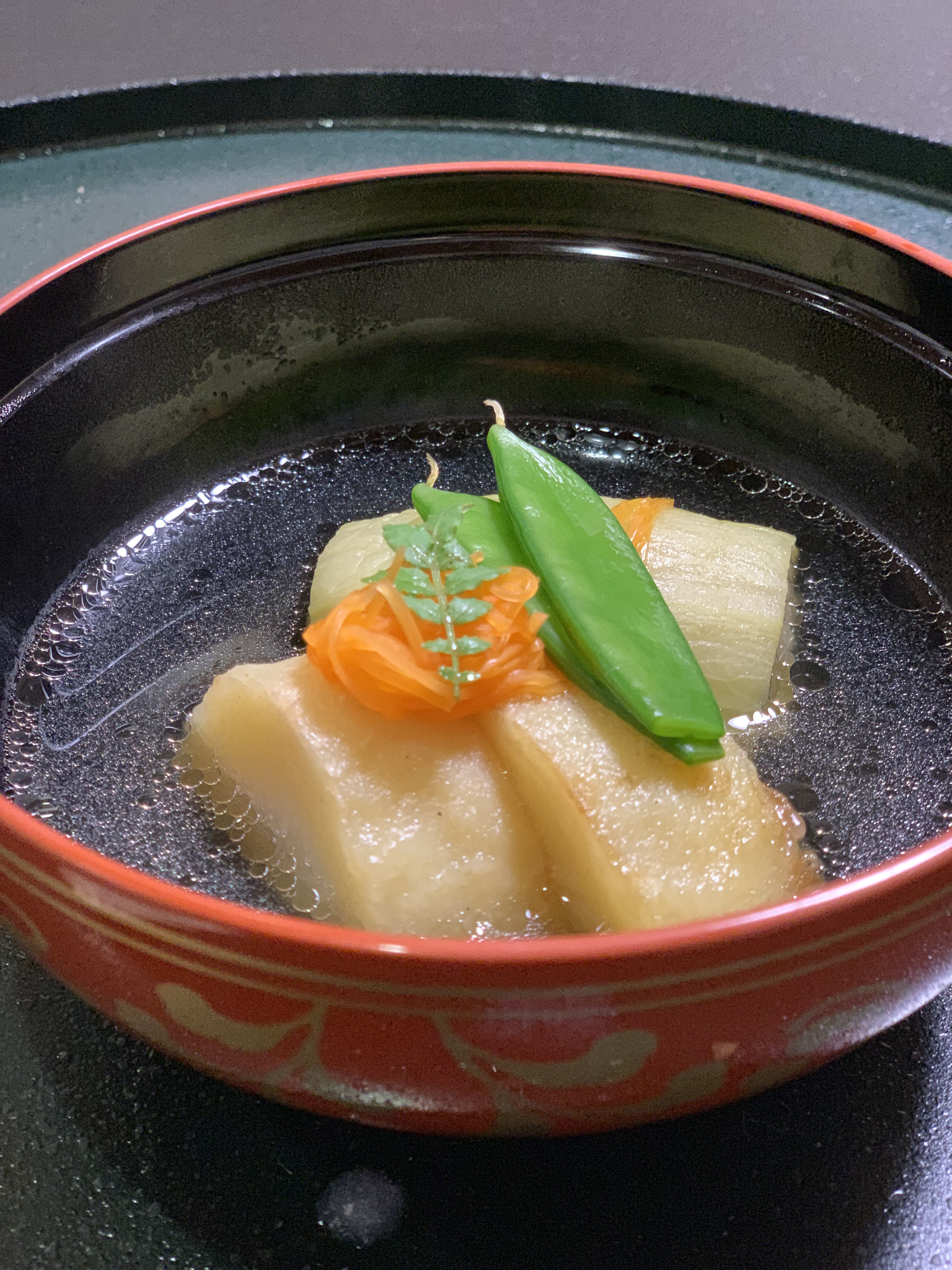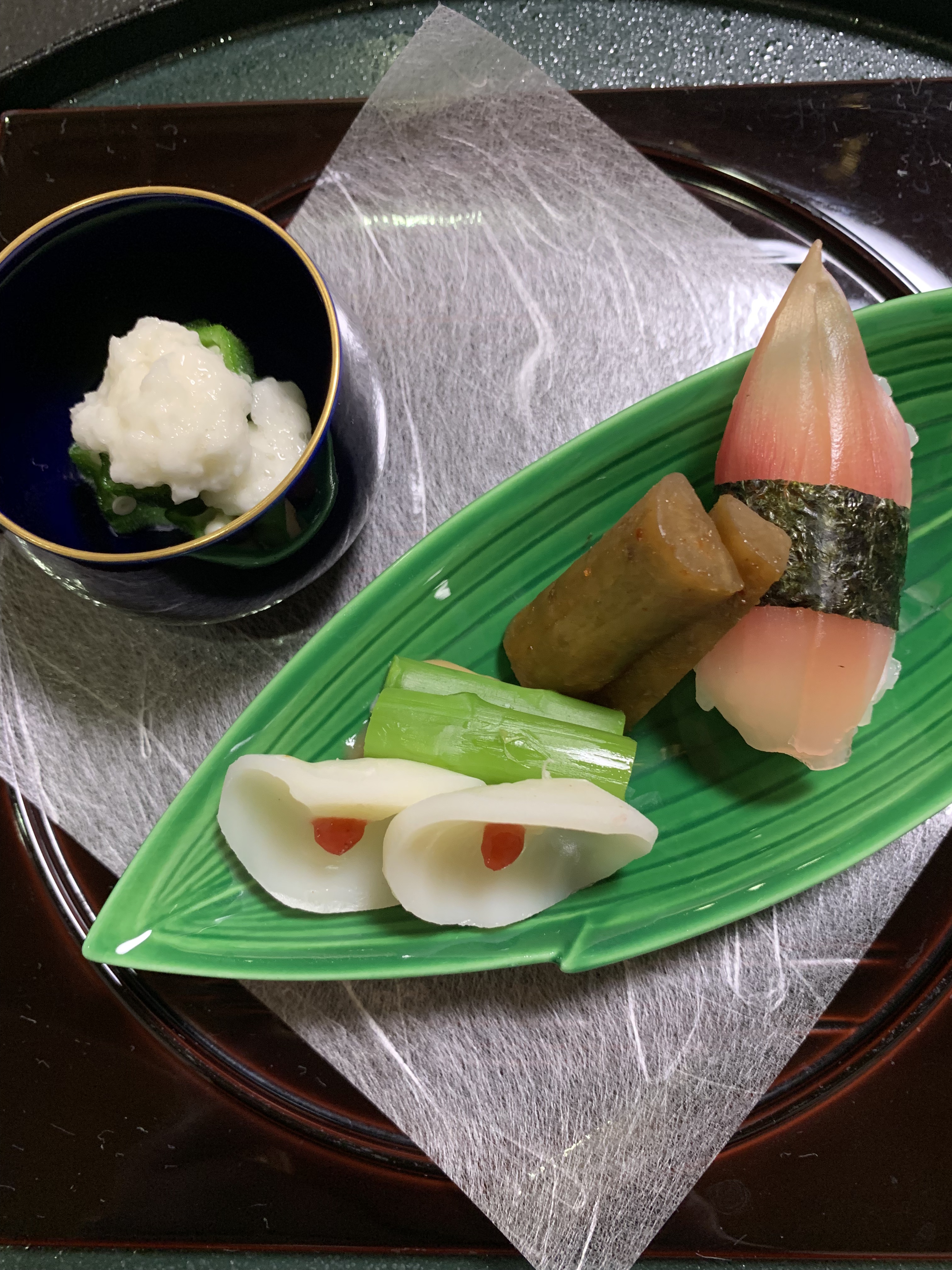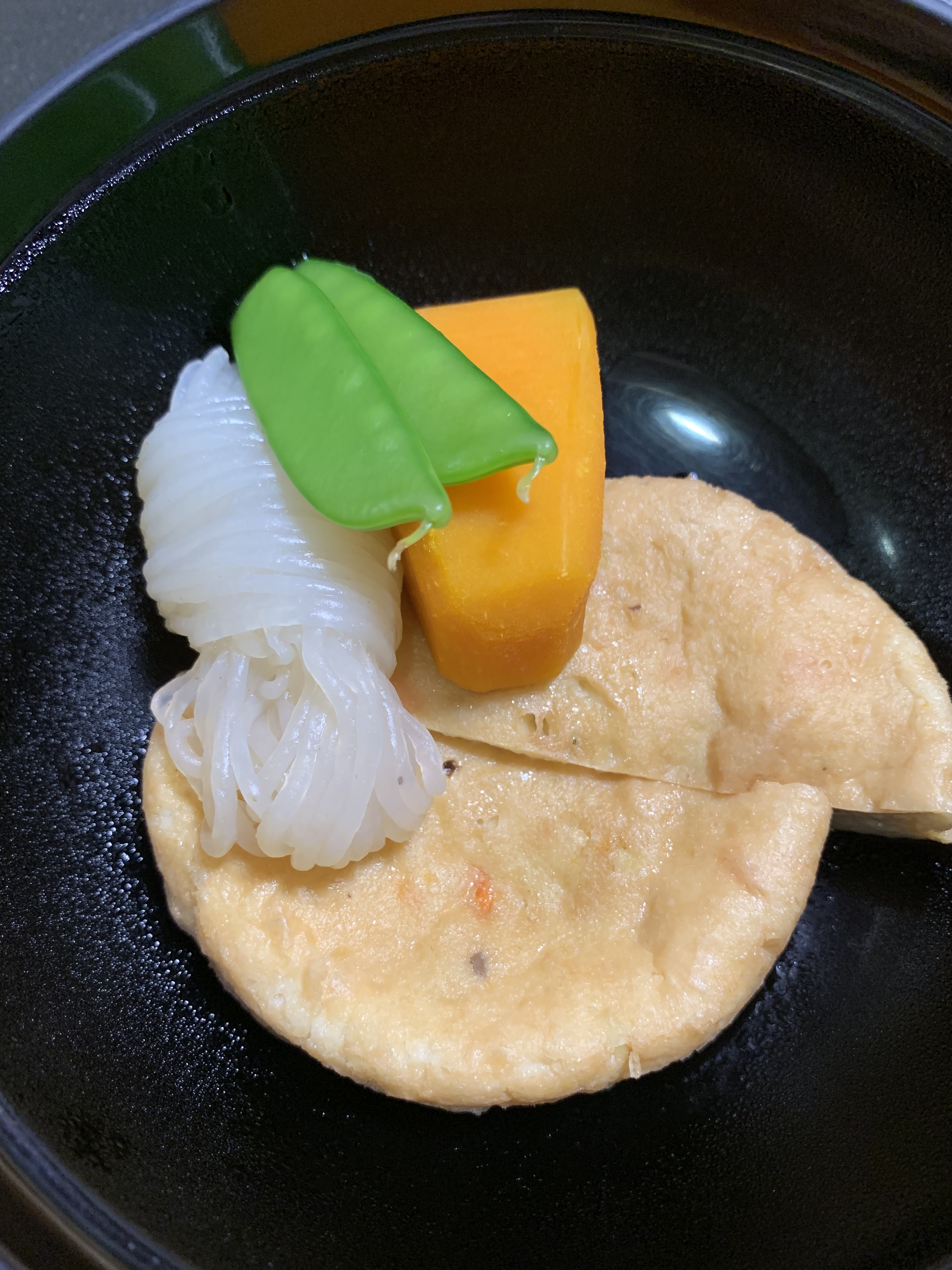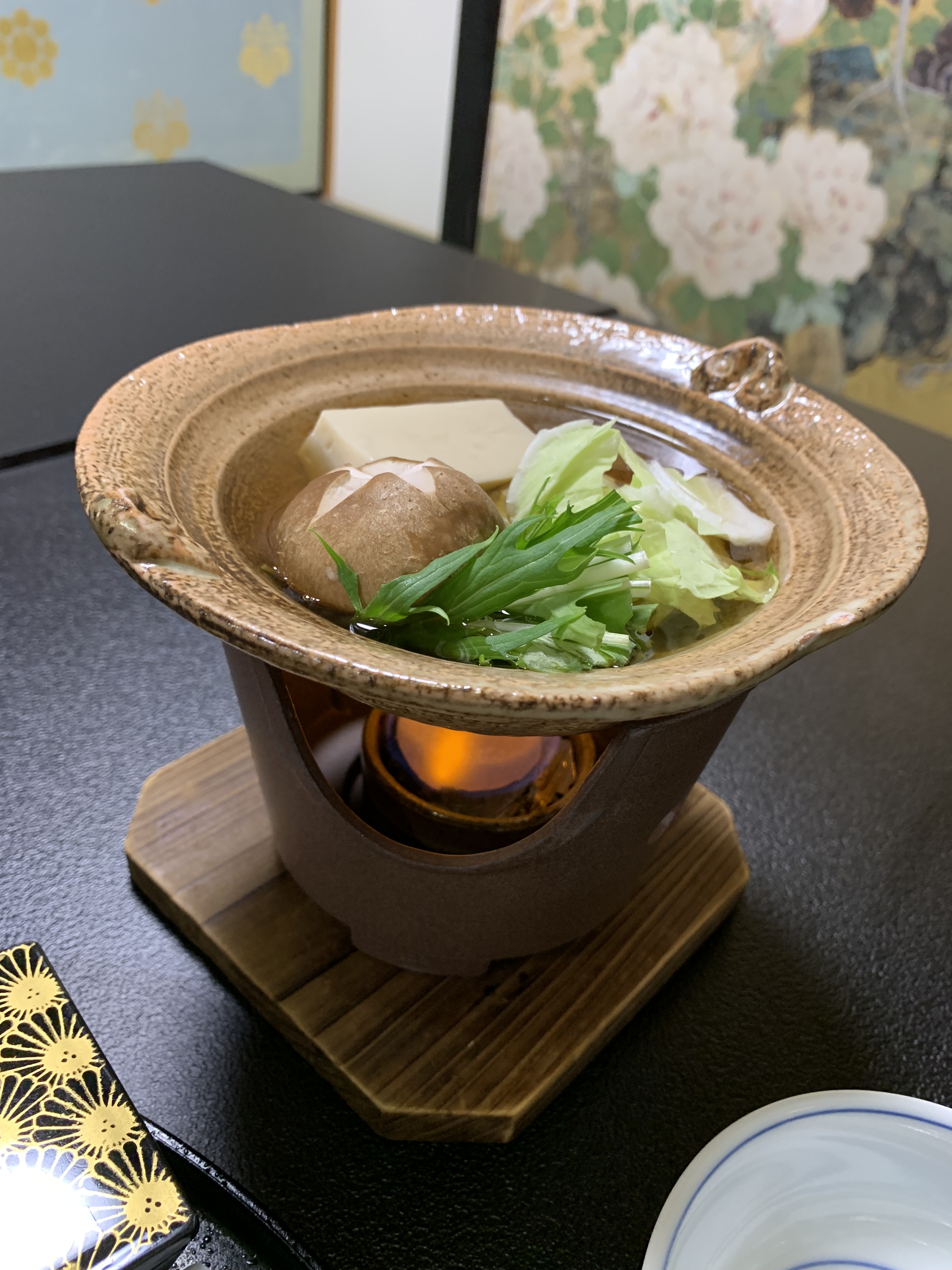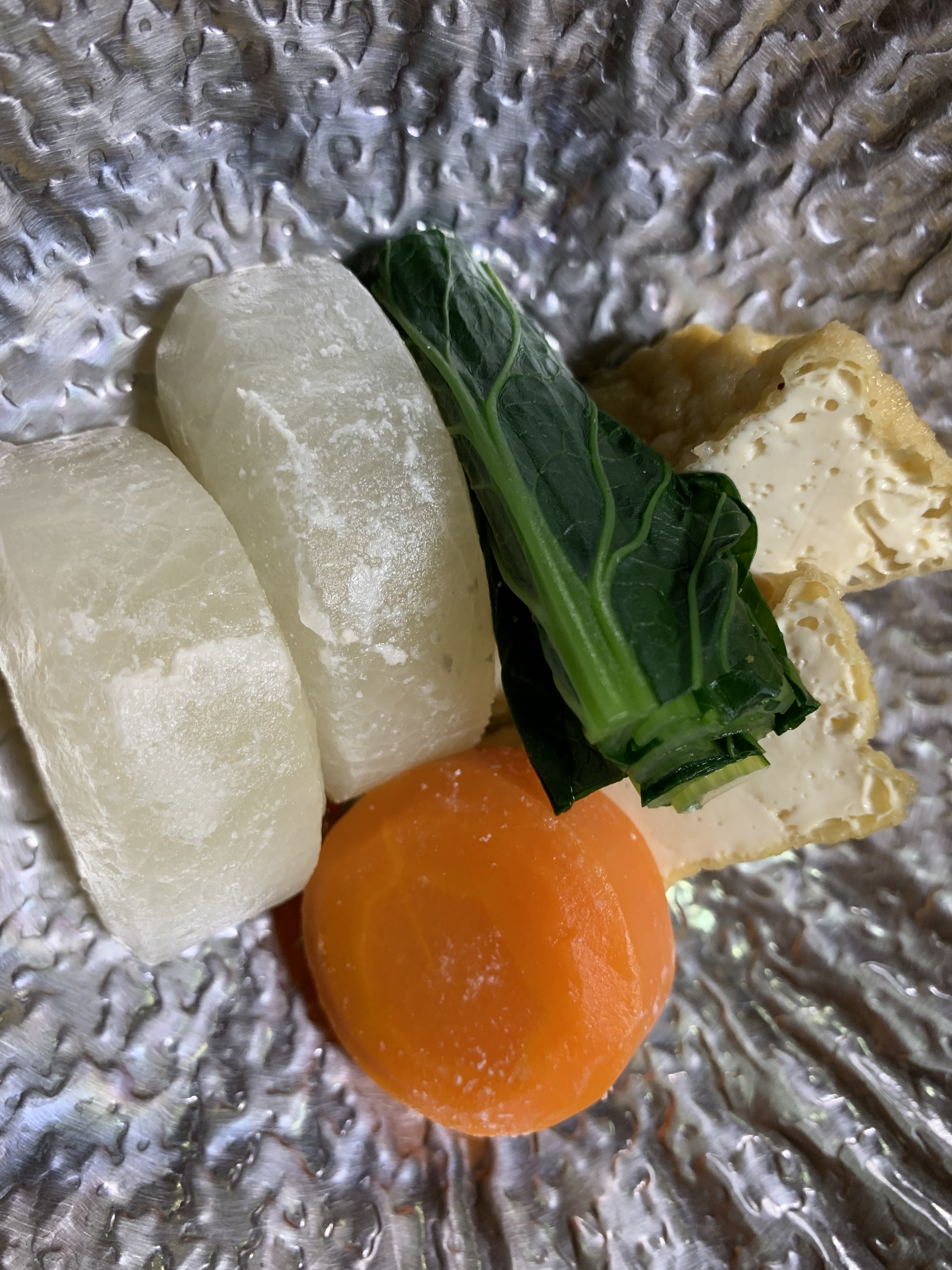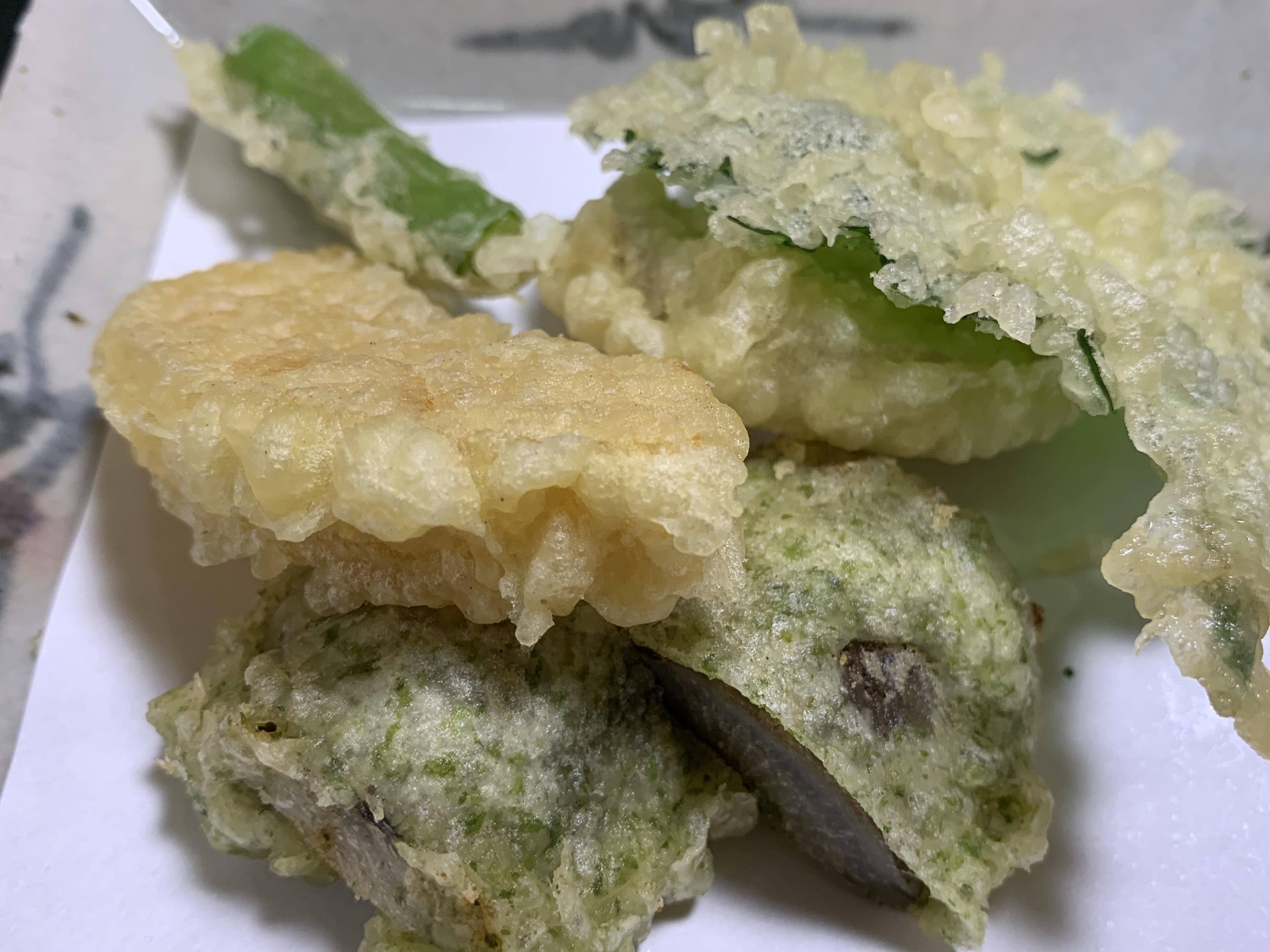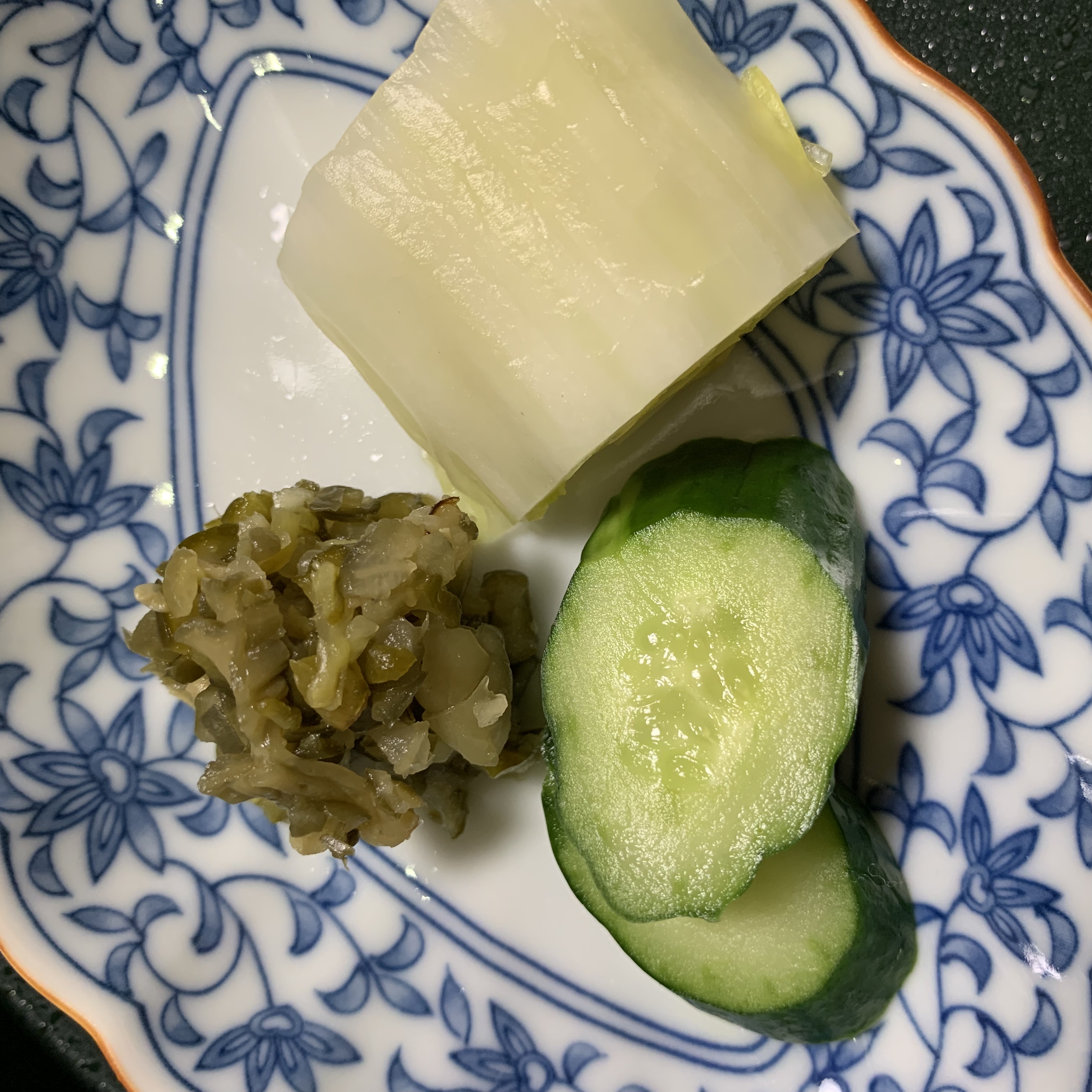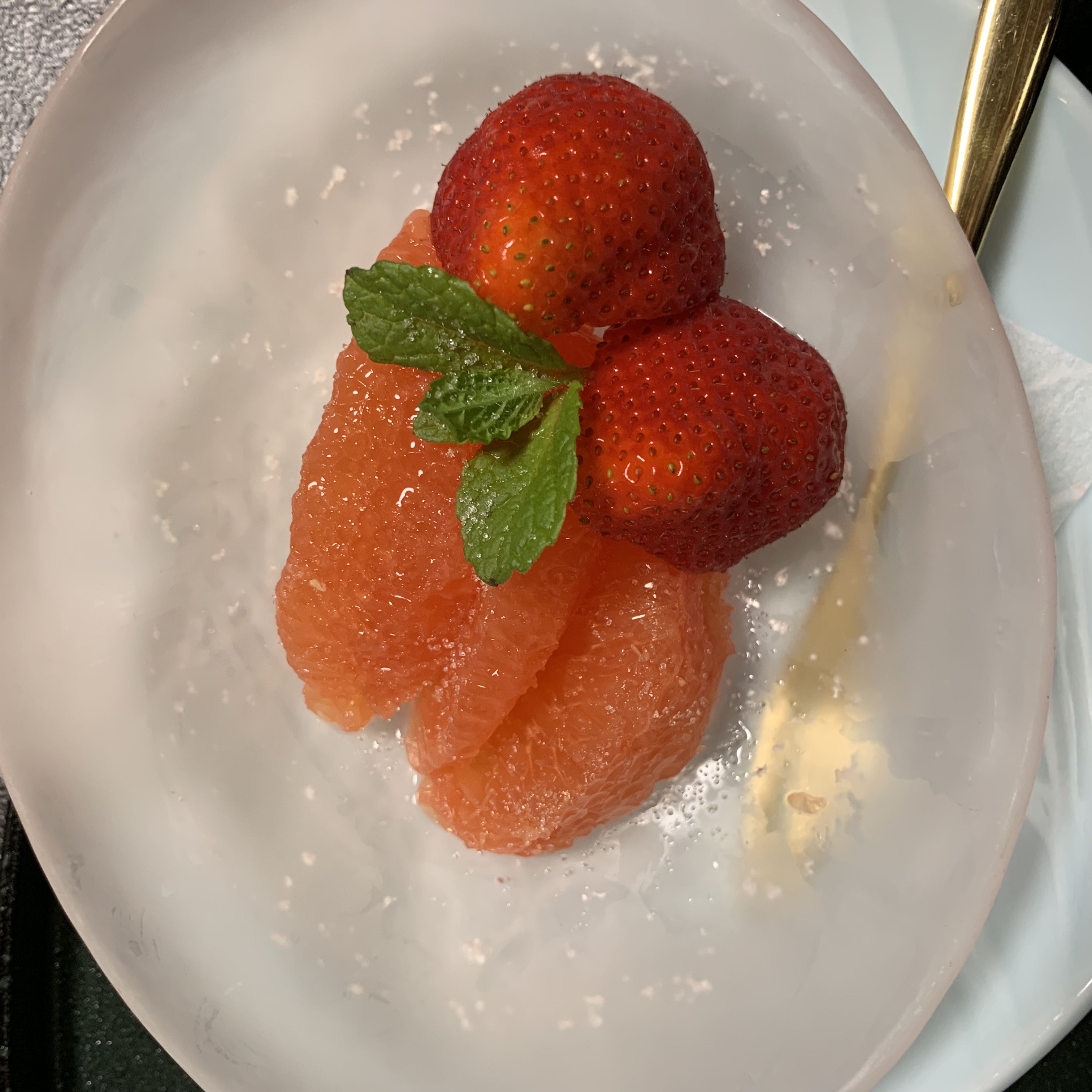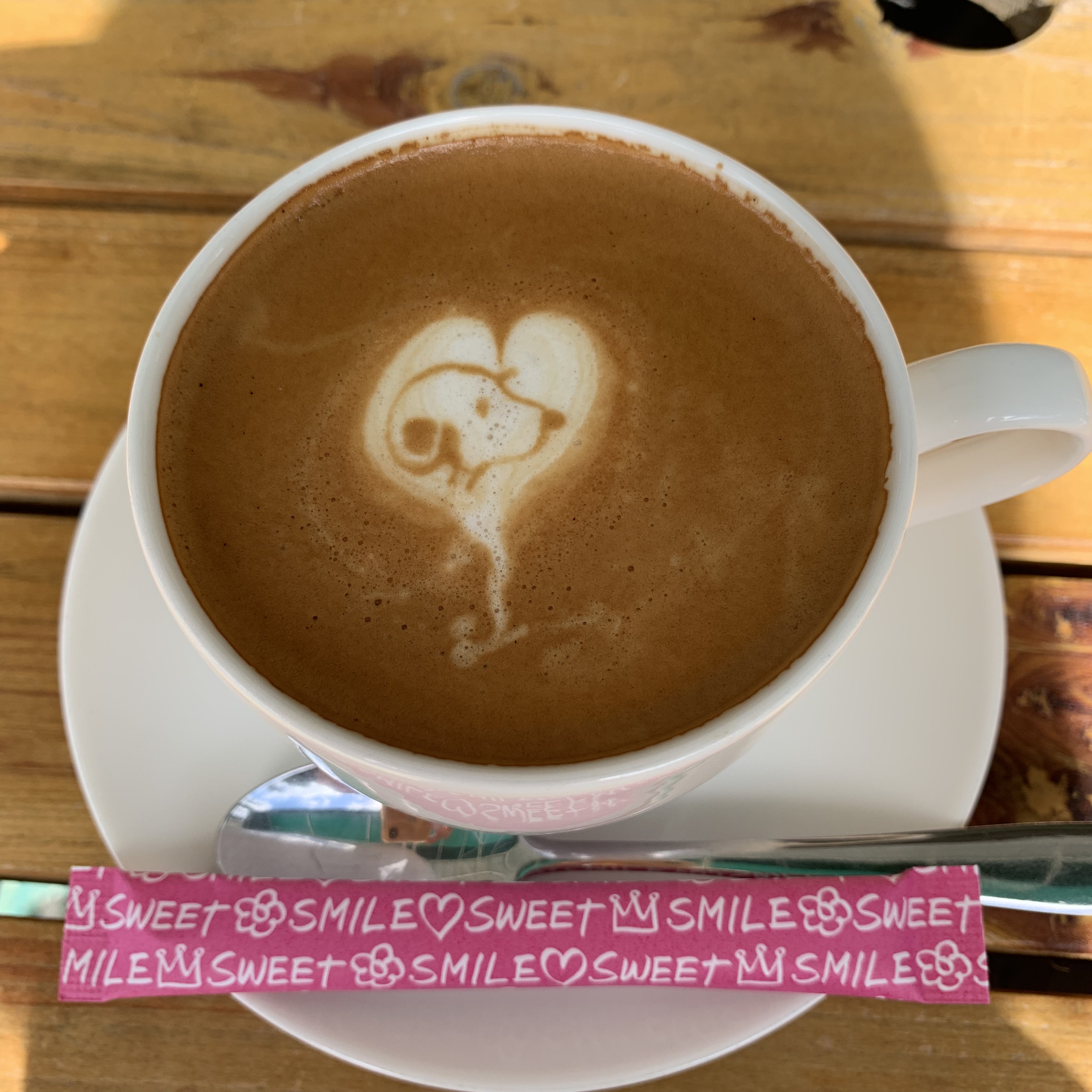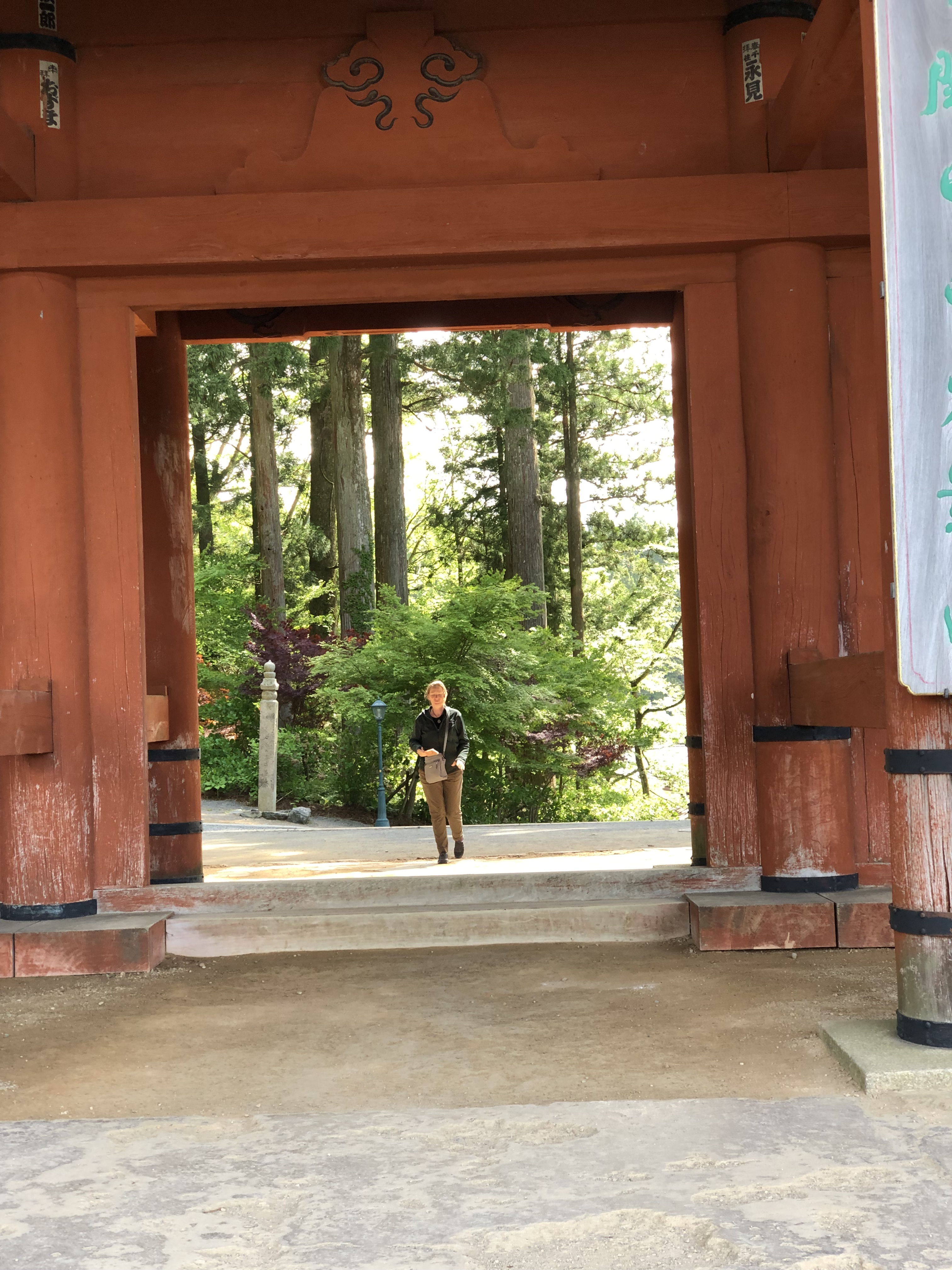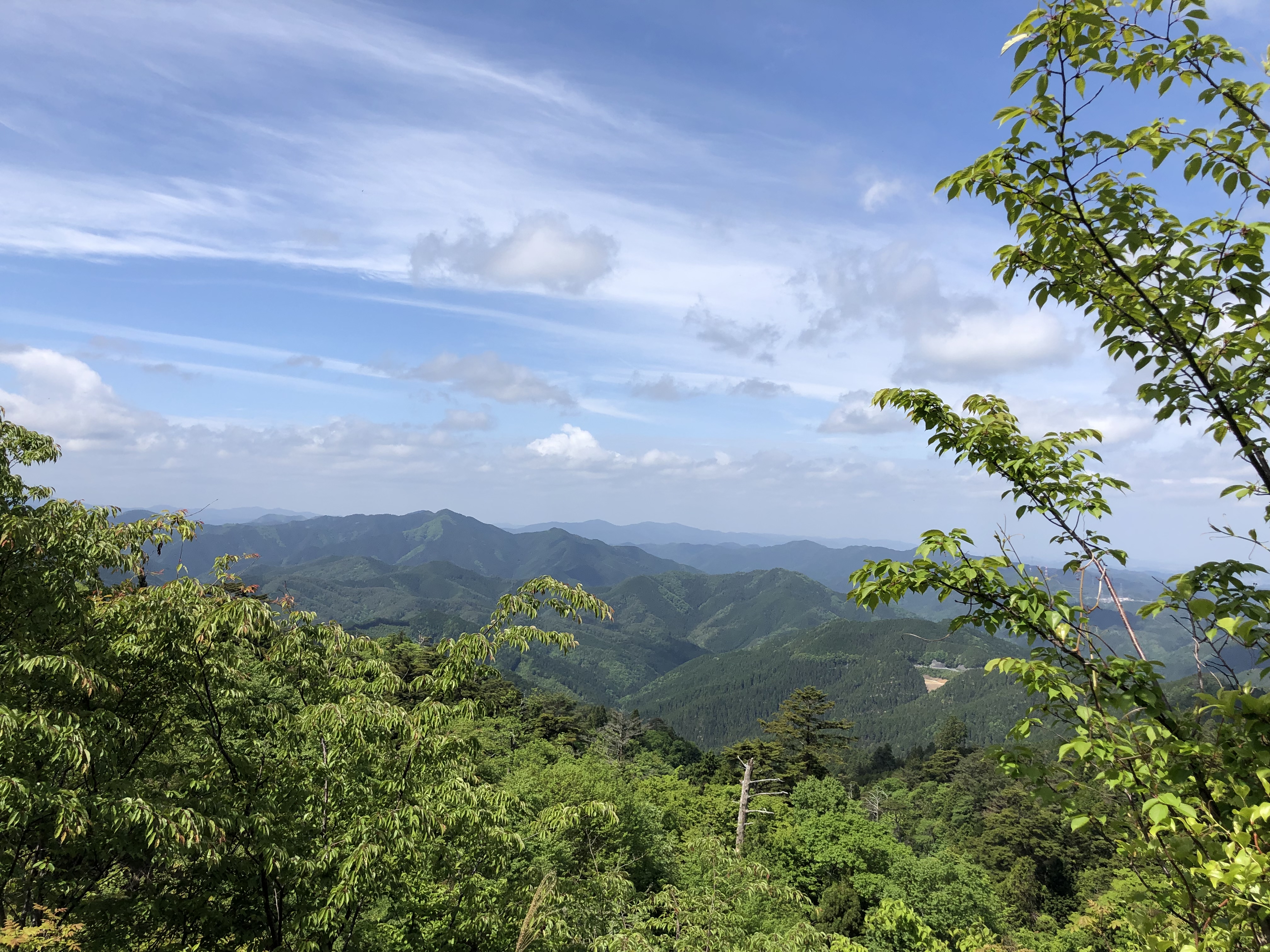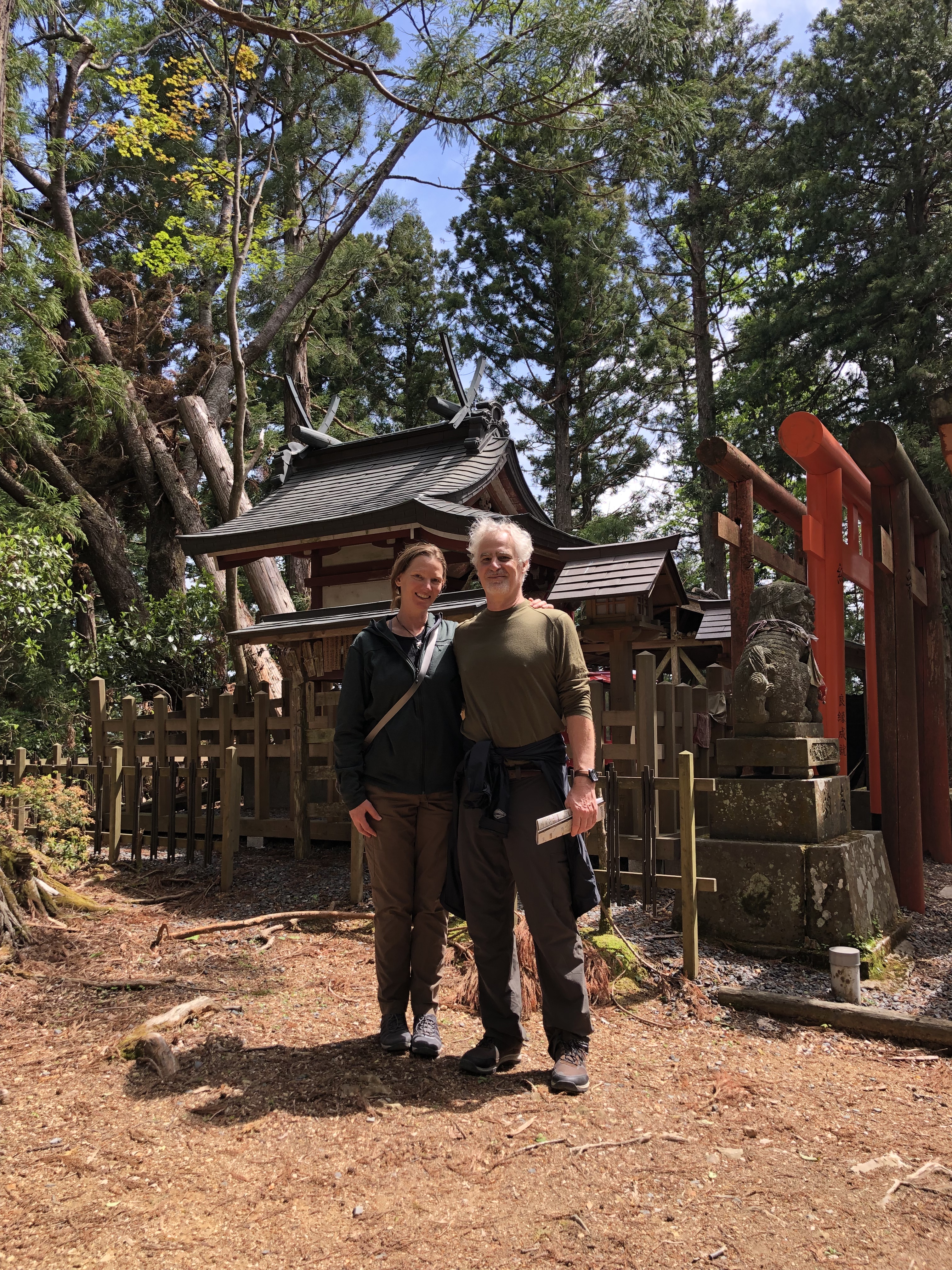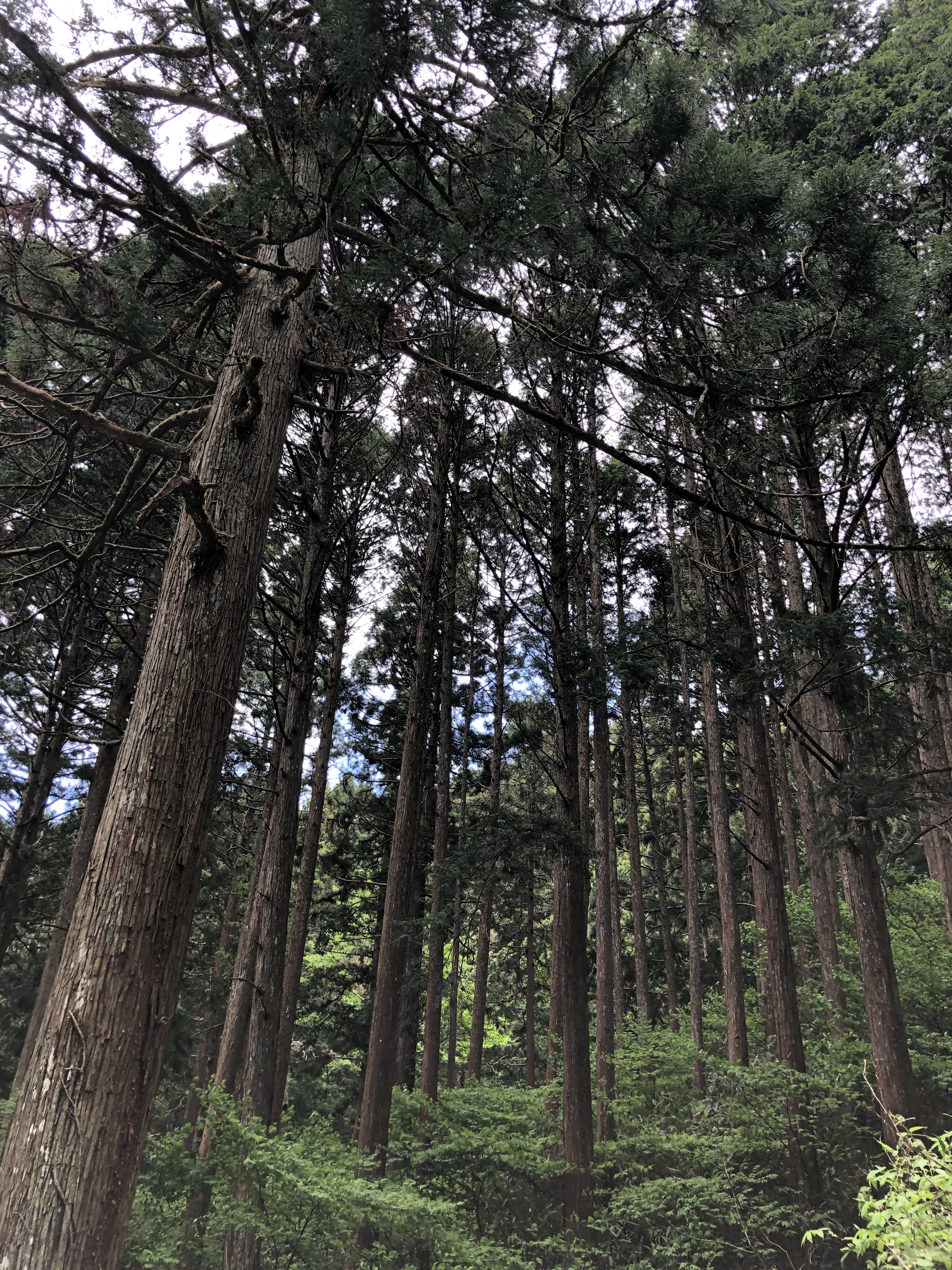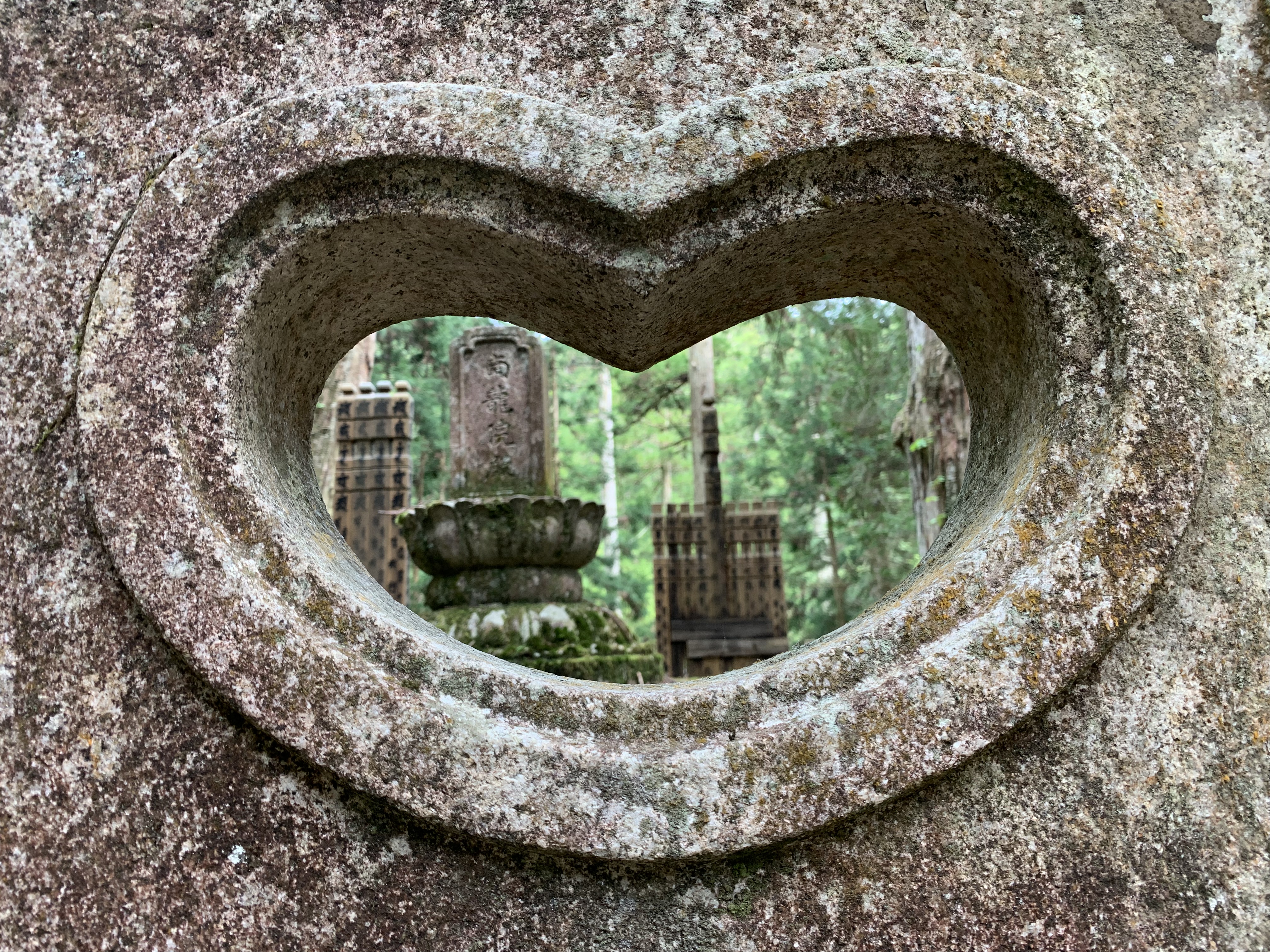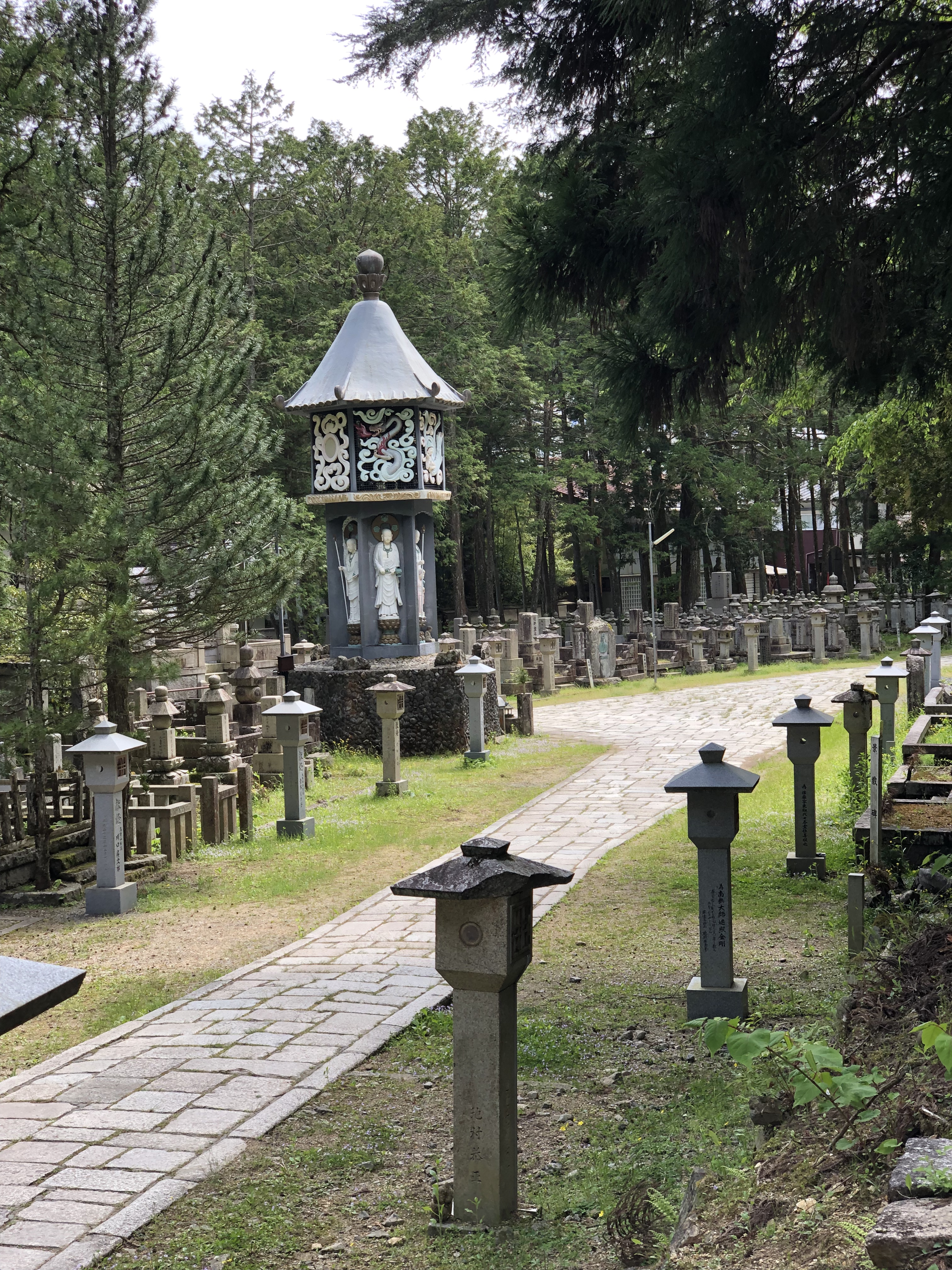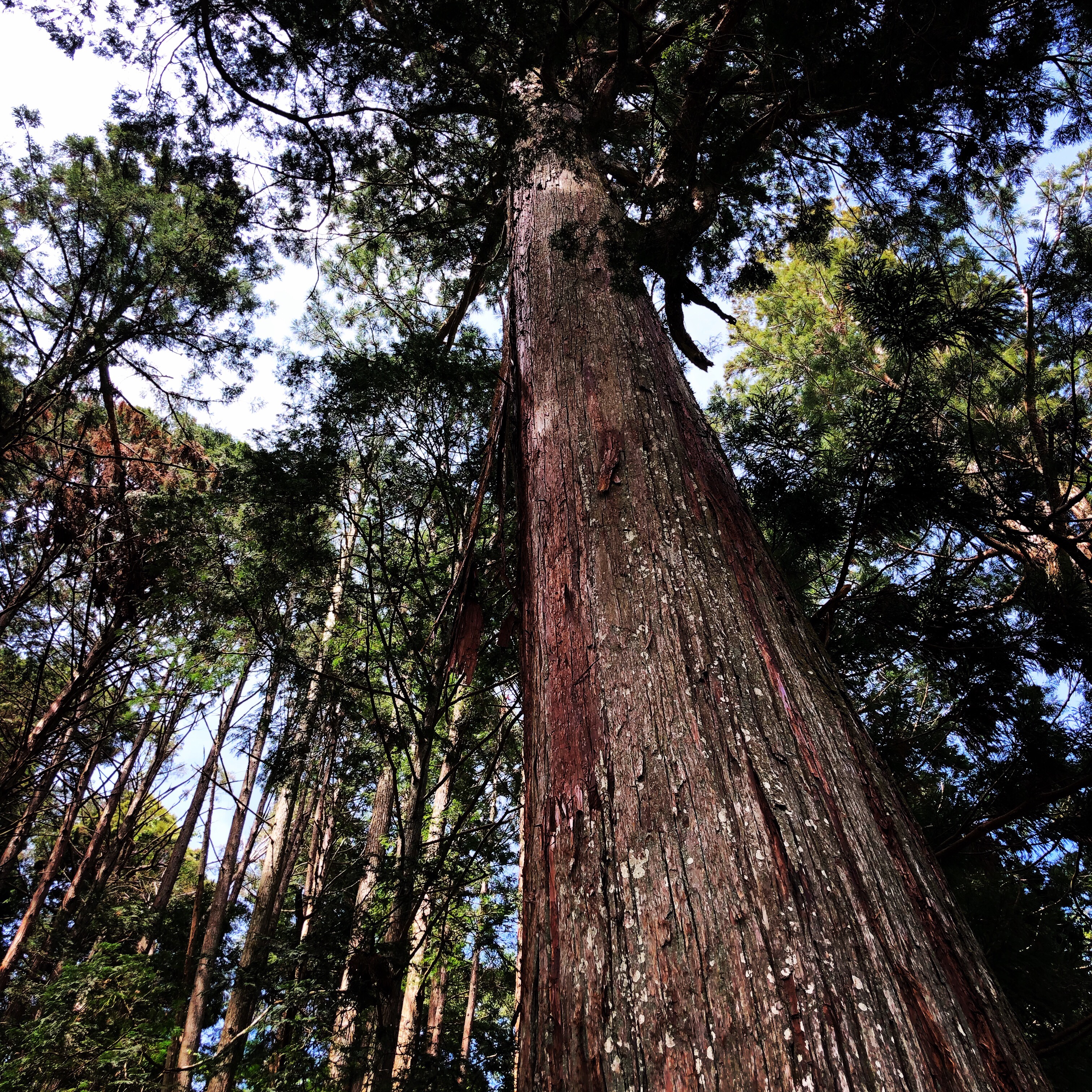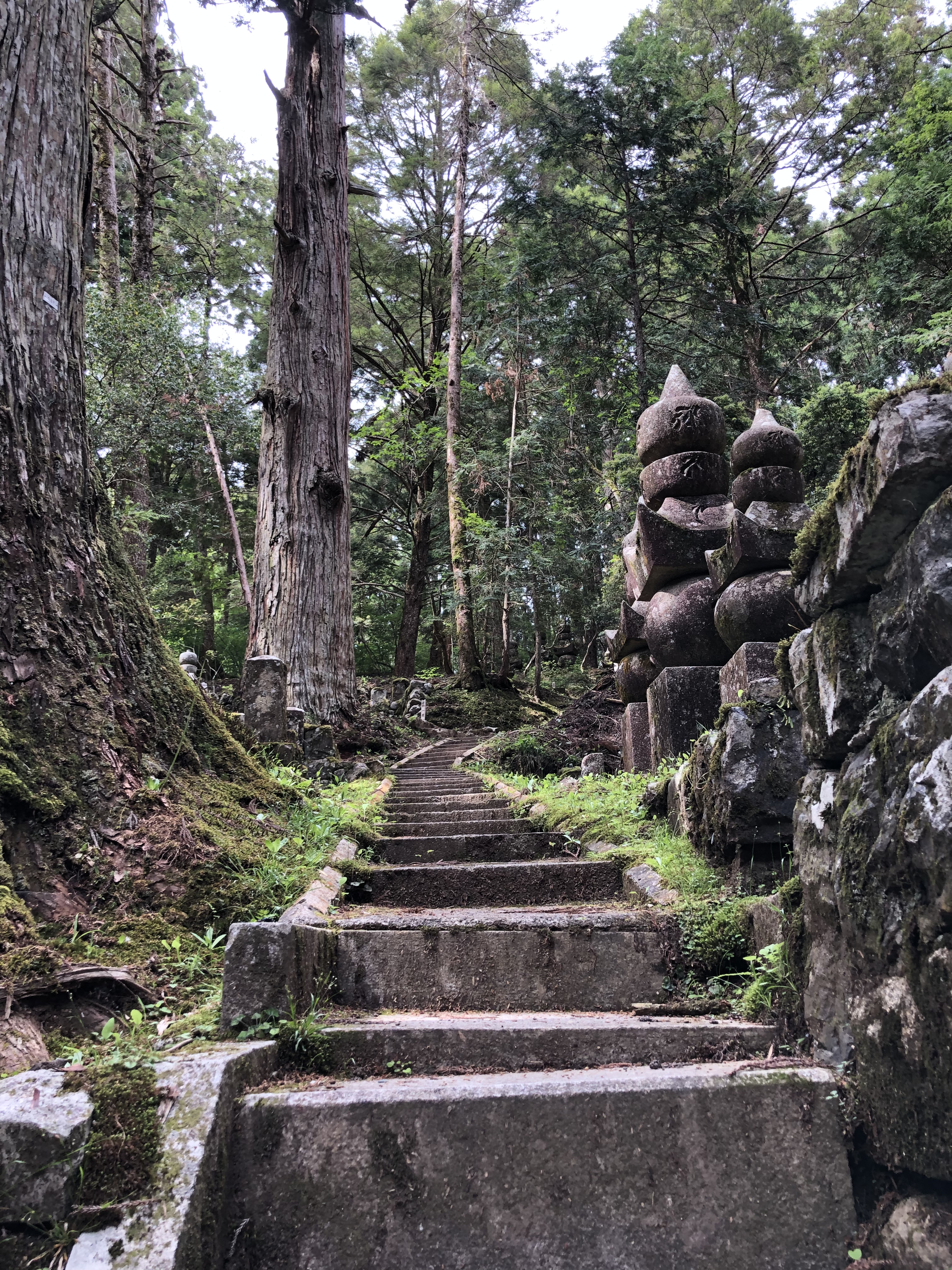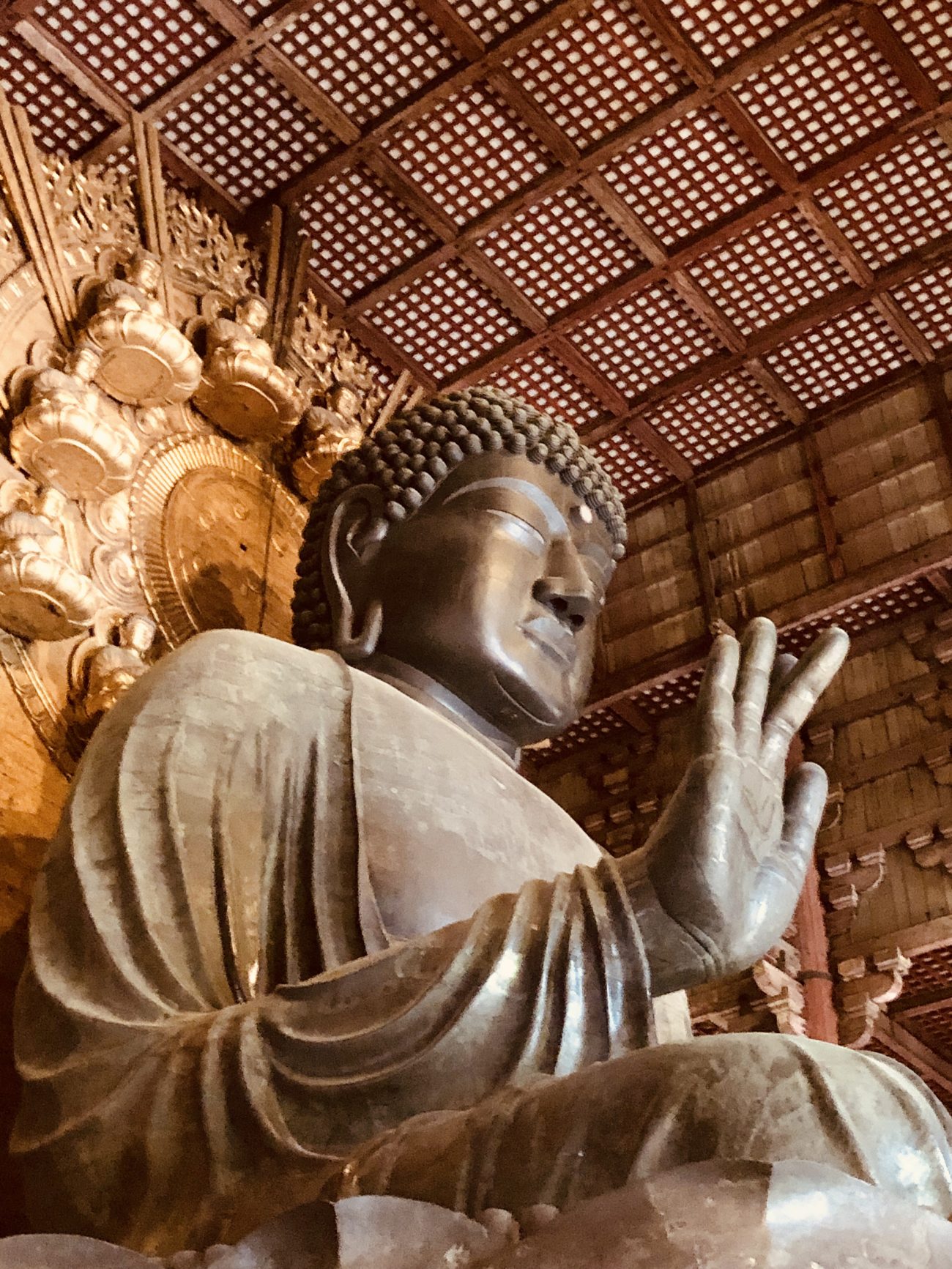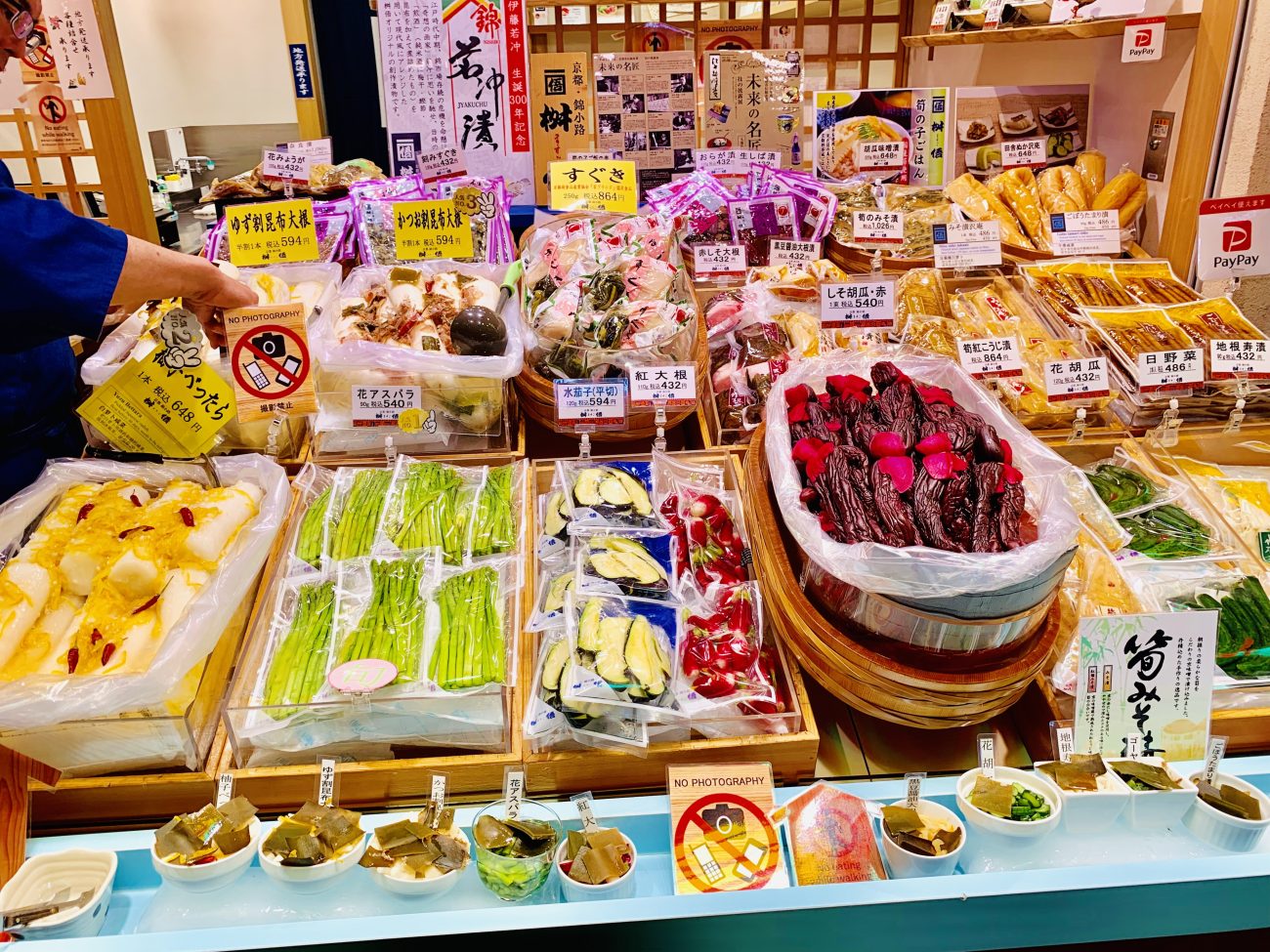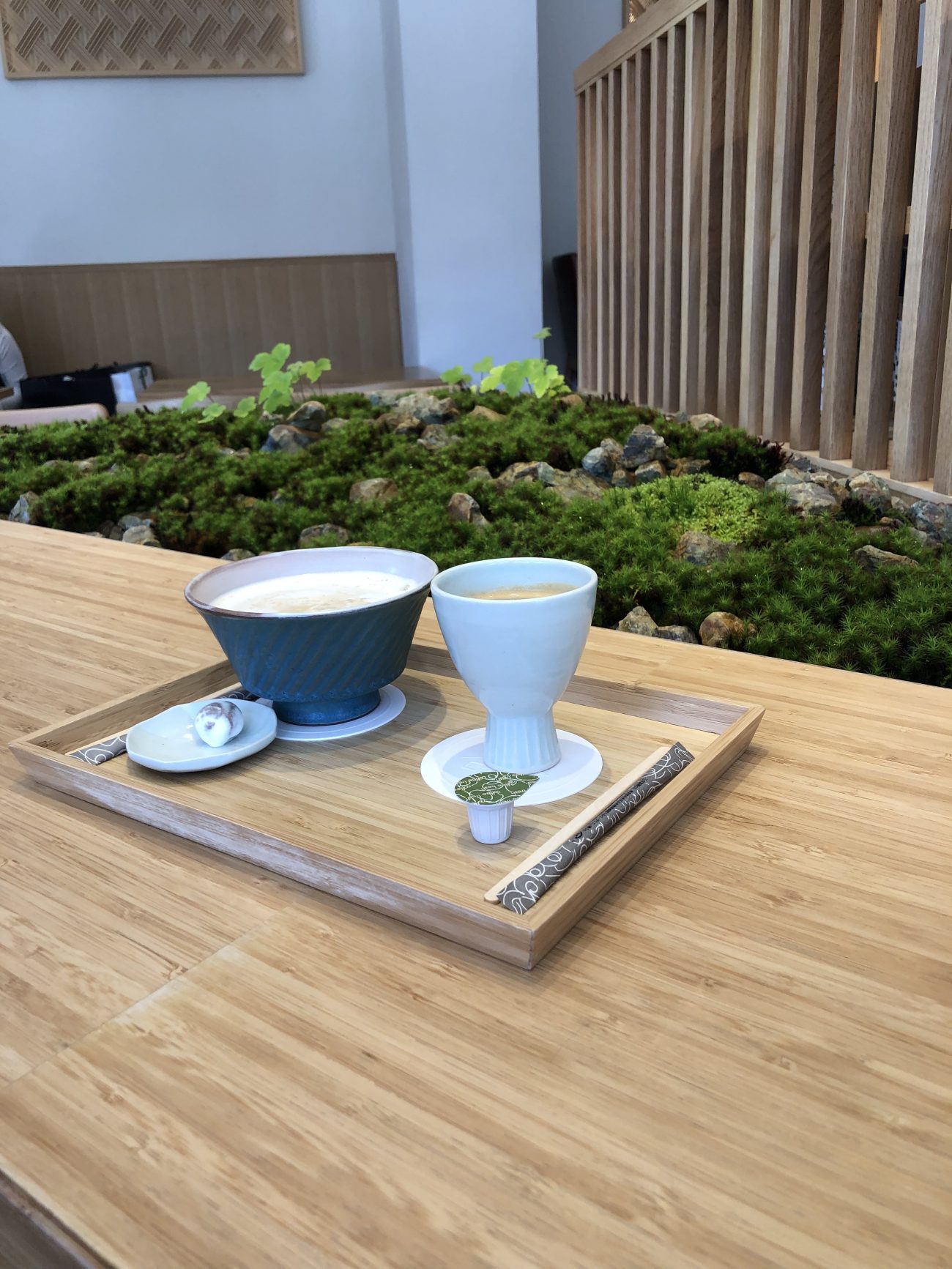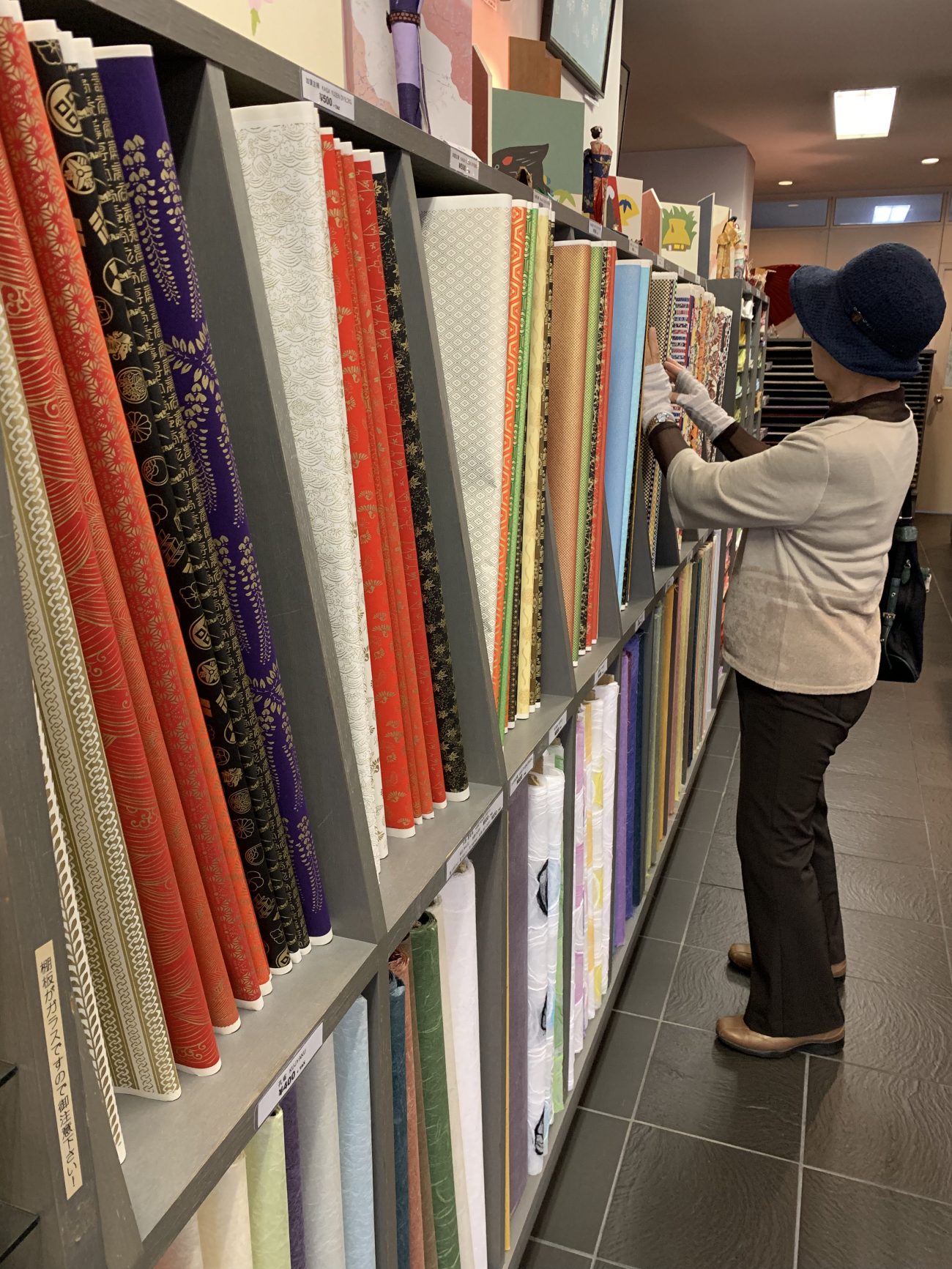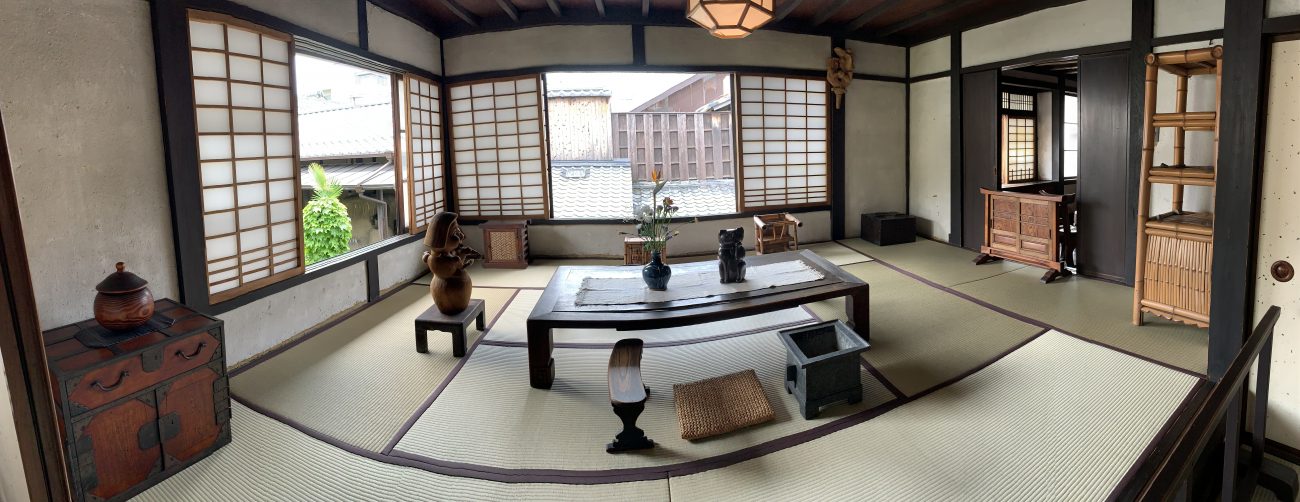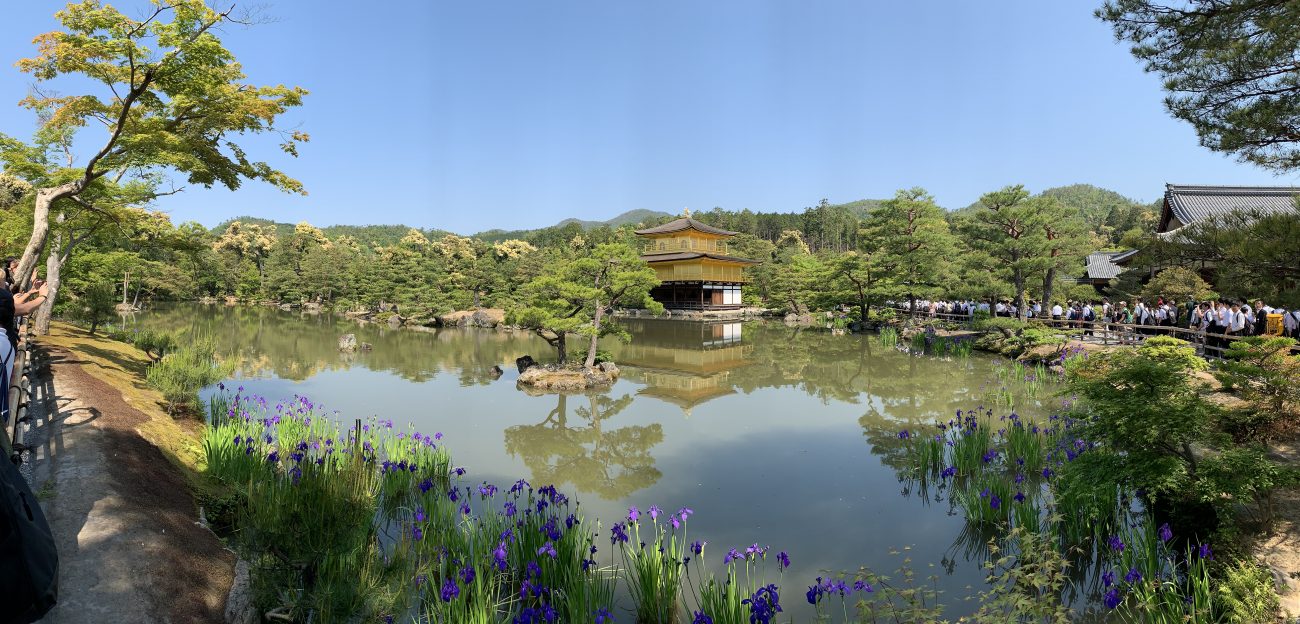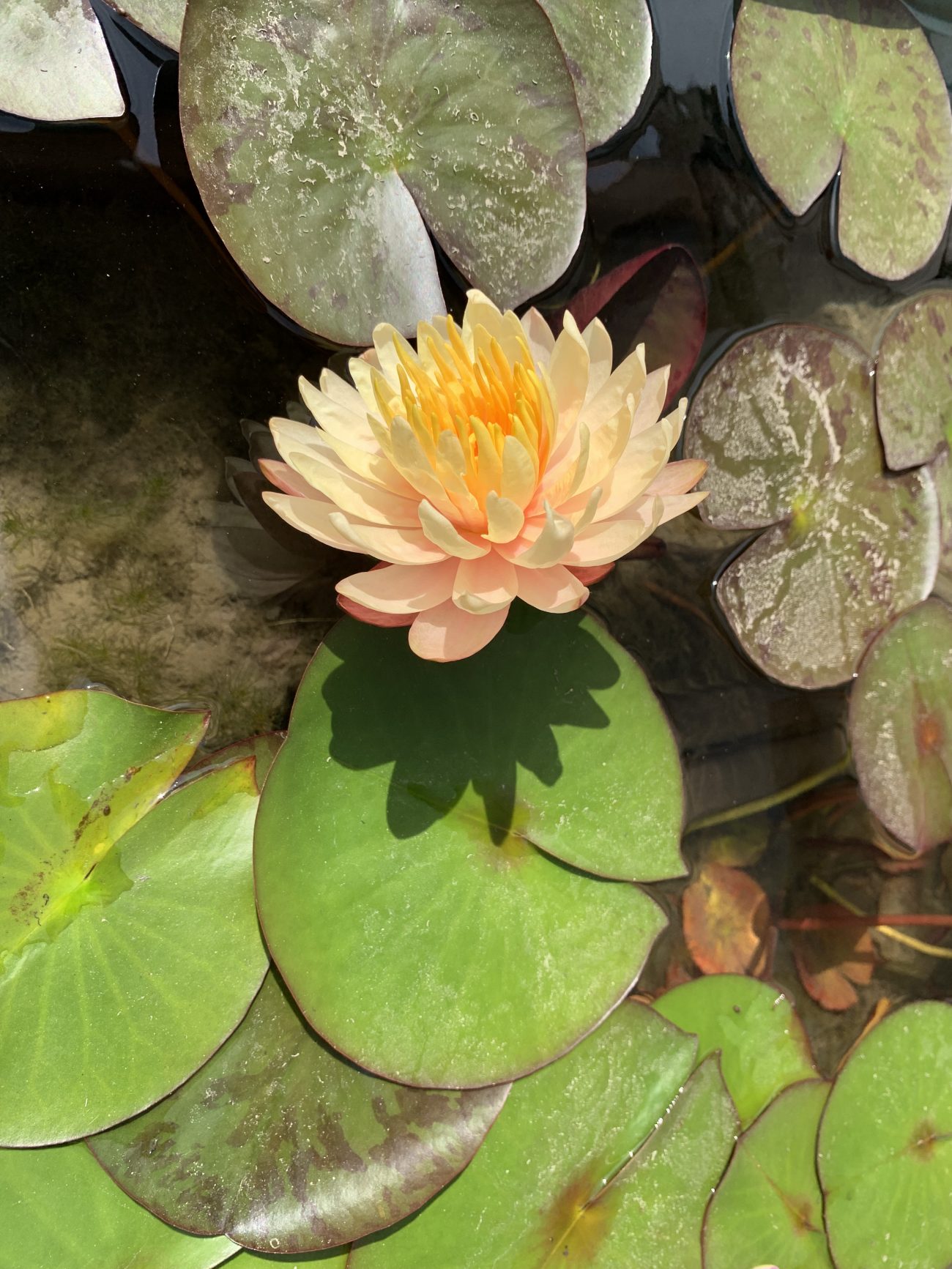From Magome to Tsumago along the Nakasendo
Shimazaki Toson opens his epic novel Before the Dawn with this description: “The Kiso Road lies entirely in the mountains. In some places it cuts across the face of precipice. In others it follows the banks of the Kiso River, far above the stream. Elsewhere it winds around a ridge into another valley. All of it runs through dense forest.”
The eleven post towns of the Kiso Road are scattered along the bottom of the valley. They are among 69 that make up the Nakasendo Way, one of the old routes between Kyoto and Edo (Tokyo) established during the Edo Period (1603 to 1868) as a communication and transportation network so the shogunate could stabilize and rule the country. It was the favored route of the Imperial family, and each post town played an important role in moving, feeding and housing travelers along the way.
Today, the entire Kiso Road can be walked in a few days, but many, like us, choose a more manageable 7.8km segment from Toson’s birthplace of Magome to Tsumago. When you walk this part of the road, you can bring your luggage to the tourist office in either town by 8:30 am, and it will be delivered to the other town by 11:30 am. This gives you a chance to spend a night in both towns.
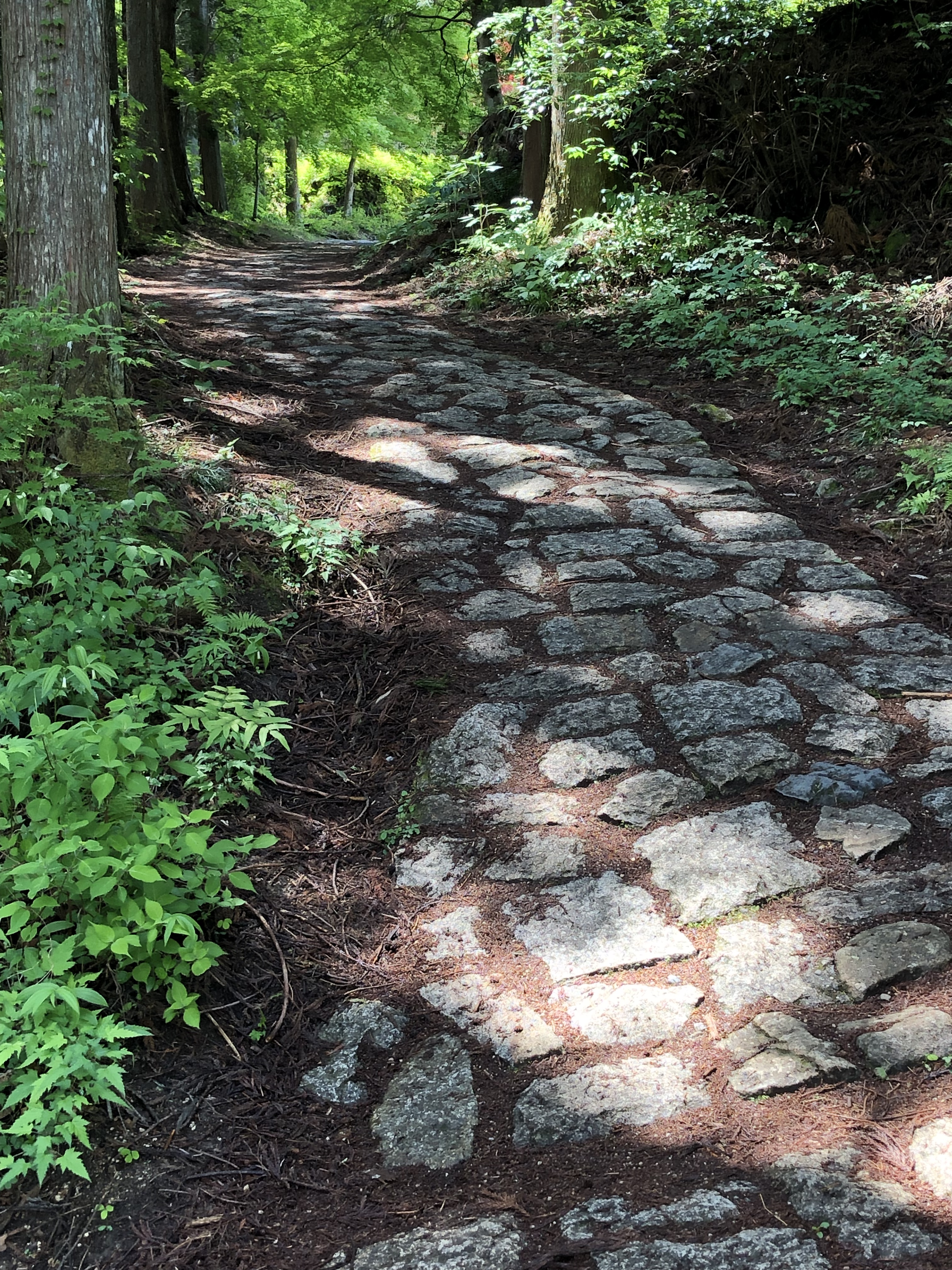
Magome
We set out from Magome, which lies at the bottom of the Kiso Road, at 8 am. We followed the quiet road along a picturesque stone surface, uphill past a waterwheel, Towson’s birthplace and dozens of restaurants and shops that had yet to open for the day.
By the time we walked the 100 meters through the small town, we were able to enjoy a view that was a sign of the beauty to come.
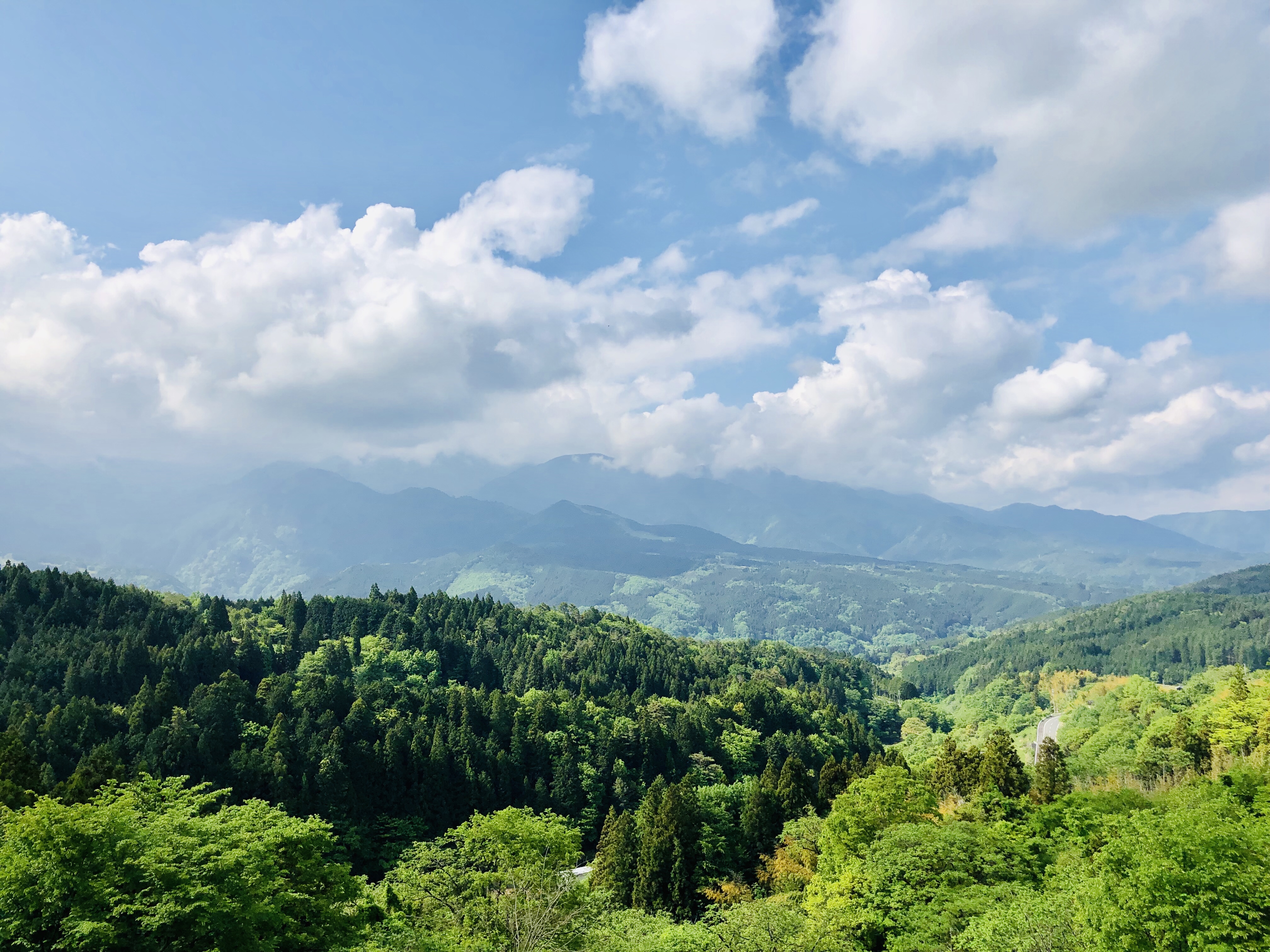
We encountered a handful of people but usually had the road to ourselves, climbing stairs, following paths and always looking for signs pointing us in the right direction (and bells to ward off the black bears). We passed bamboo grooves and rice paddies, crossed streams and watched hawks circling slowly overhead.
About halfway, we came upon a tea house where a fire was burning and a handful of travelers from around the world were gathered around a table, resting, sipping tea and exchanging stories.
From the tea house, we continued climbing upward through densely wooded areas to more dramatic views, at times on a dirt path and at others a stone one. We passed several small shrines, and as we approached Tsumago, we emerged from the forest and followed a path to the end of our walk.
Tsumago
Reaching Tsumago, though, did not seem like the end of the road. The town has been restored to look as it did during the Edo period, with beautiful two-story buildings of dark wood and wood-slatted windows and no overhead power lines. After a stroll through town we headed to Ko Sabo coffee shop where the owner, who spoke some English, greeted us enthusiastically and entertained us with her conversation and wonderful laugh. It also exhibits and sells art.
While we considered walking back to Magome, the skies were darkening, so we chose to take the bus. This gave us a chance to visit Toson’s birthplace and stop for an espresso and matcha latte at just another wonderful Japanese coffee house.
We read that you find Japan’s magic in the mountains, and our visit to the Kiso Valley made us understand why.
Where to Stay: The Kiso Valley is about halfway between Kyoto and Tokyo, and we made a three-hour drive from Kyoto. Once we left Kyoto, we used either Rakuten Travel or Japanican to book lodging, and both were reliable and easy to use.
We booked late so could not stay at any of the small, traditional ryokan or minshuku in Magome or Tsumago, but found the Hotel Hanasarasa in Nakasugawa, just a few miles from Magome. There we enjoyed our first onsen, the Japanese hot spring baths we had heard so much about. We emerged with our bodies revitalized. In the morning, it took only a few minutes to get to Magome, where we parked in a lot right next to town.
Driving in Japan: We rented a car from Toyota Rental Car in Kyoto and followed two simple rules that are essential: Make sure the car has an English speaking GPS and an ETC card for tolls. We had requested both, but if we had not checked when we arrived, we would have left without the ETC card, which looks like a credit card that they inserted in a box in the glove compartment.
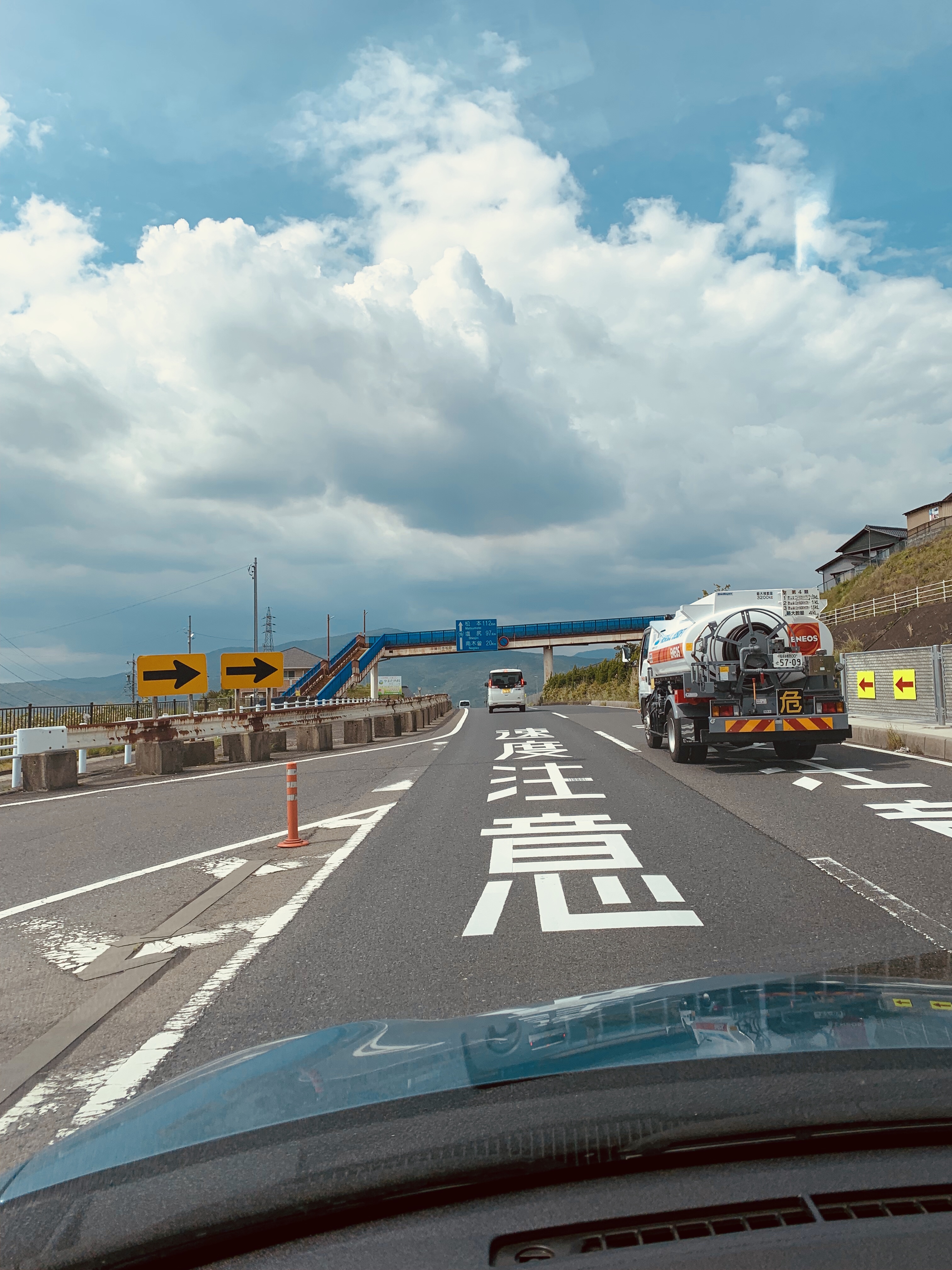
Next Up: Staying at a Buddhist Temple in Koyasan
From Mr. Koya, we headed south to the Kumano Kodo (Kumano Old Road). This ancient pilgrimage route is a network of wooded trails, some UNESCO-protected, that is steeped in Shintoism, which predated the introduction of Buddhism to Japan in the mid-6th century.
We stayed in Hongu, a midway point along the route, for two nights. Heavy rains blanketed the area when we arrived at the Watarese Onsen hot spring resort, part of a three-hotel complex. The highlight was a set of large outdoor, private onsens that we reached by walking over a narrow suspension bridge that was lit at night. It was mid-May, but not busy at all, and a relaxing soak was just what we needed after the drive–and several times after that.
Nachi Taishi Shrine and Seinganto-ji Temple
The next morning (with rain threatening) we drove east to Shingu and then inland to Nachi Taishi, one of the primary destinations along the route. Parking was easy, the crowds were light, and we walked a short, but beautiful stretch of one of the Kumano Kodo paths to the Nachi Taishi Shinto shrine and the Seinganto-ji Buddhist Temple.
Mist covered the mountain peaks as we continued on to the three-storied pagoda, resting near the Nachi-no-Taki waterfall, the tallest in Japan. The pagoda is the first “etiquette place” of the pilgrimage around the 33 holy places in the area, and it was a sight we had anticipated seeing for months.
Around the pagoda was a koi pond, gardens, buddhas and a stone picnic area. The few people there all magically vanished when we sat to have our lunch, as if the Shinto gods wanted us to have a peaceful meal. Seated along the mist-shrouded garden with the pagoda and waterfall before us, we had just that experience.
Saying Good-bye at Shirarahama Beach
Our visit to Japan was coming to an end, and we left the mountains and drove to our hotel near Kansai Airport, where we planned to take the train into Osaka to get a taste of the big city. Instead, we drove past Tanabe to Shirarahama Beach for a relaxing afternoon with turquoise water and white sand.
The sky was beautiful all day, and before we left, a horizontal rainbow appeared. We learned later it’s called a fire rainbow, which we captured just before it faded. It seemed to be Japan’s way of saying good-bye.
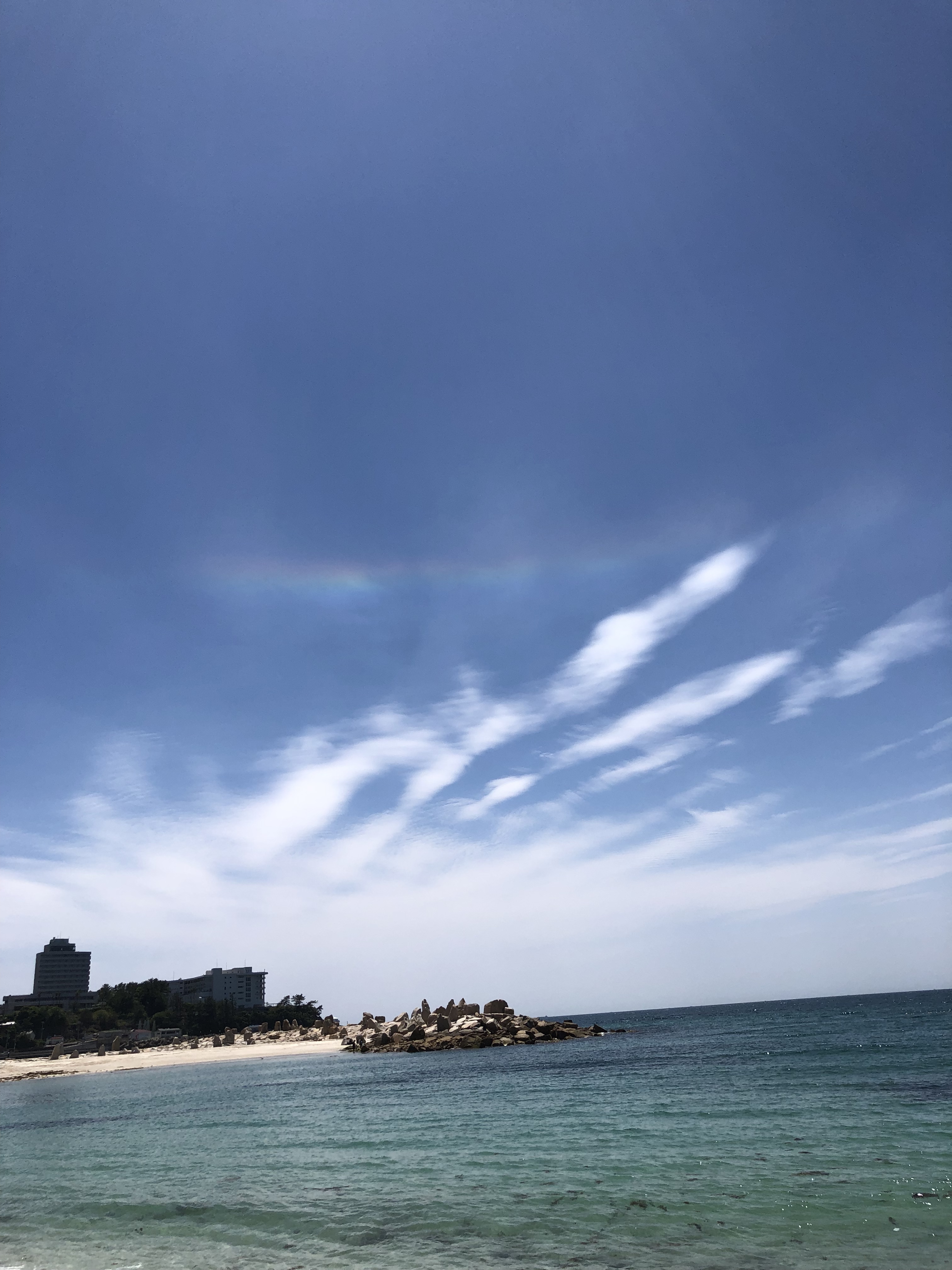
The secluded temple town of Koyasan has a long history as a sacred place, beginning in the early ninth century when Kobo Daishi wandered Japan in search of a suitable place to build a center for the religion he had founded, Shingon Buddhism. After years of searching, he settled on the wooded top of Mt. Koya and in 826 began construction of the original Garan complex. Today you can find more than a hundred temples here.
Many temples in Koyasan invite guests to stay overnight, and we stayed two nights in Souji-in, known for some of the finest vegetarian cuisine. We had spacious rooms, secluded in the back of a newer wing of the temple, a serene view of the gardens, and a bathroom that took up three rooms, including one with a wooden Japanese soaking tub. As is typical in traditional Japanese lodging, when we went to dinner, they had moved our table aside and laid out our futons for sleeping.
We explored part of the town before dinner, wandering down a scenic path, finding a red wooden bridge and then exploring the Garan complex, the first monastic complex entirely dedicated to the teaching and practice of Shingon Buddhism.
It includes the Kondo Hall, a large wooden temple hall where major ceremonies are held, and Konpon Daito (great Fundamental Pagoda), the tallest building in Koyasan. Completed in 876, it’s an early form two-storied pagoda and a symbol of Koyasan, a town we discovered was filled with a peaceful beauty.
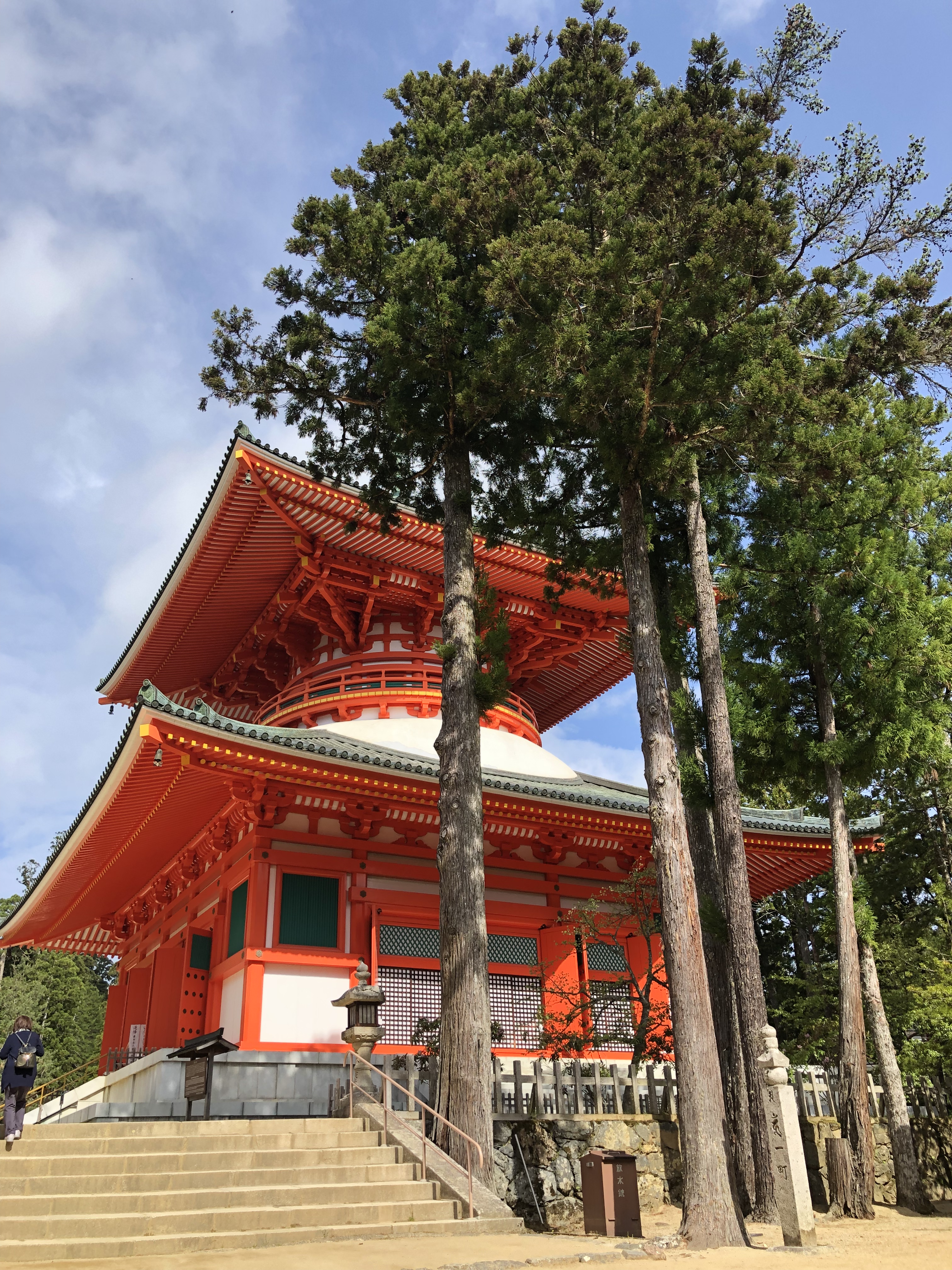
Dinner was at 7 pm and they called us at 6:59 pm to make sure we were coming. The meal and the ones that followed were Buddhist vegetarian cuisine (Shojin Ryori). Made with the “delicate enhancement of a natural taste” and the use of limited ingredients, Shojin Ryori is based on the concept of five flavors, five cooking methods and five colors. Each meal includes a grilled dish, a deep-fried dish, a pickled dish, a tofu dish and a soup dish.
Not only was it some of the best vegetarian food we had ever enjoyed, but also some of the most delicious food of any kind. Each meal was perfectly balanced, served by a monk and was a delight for the eyes and the palate.
The next morning, we set off to explore more of the town and started our day (after our breakfast at the temple) with coffee at the Powerstone Café. The barista, who clearly liked Snoopy, was a wonderful host.
We continued up the hill through the Daimon Gate, the traditional entrance to Koyasan, and entered a pilgrimage route that we followed a few kilometers up Mt. Benten Dake and down to Nyoindo, a temple on the periphery of Kyosan. It is the last temple standing built especially for women. Here we also found the Koyamaki Protected Forest, a forest of umbrella pines extinct everywhere but in Japan and Korea.
We moved on to Okunoin, where more than 200,000 grave stones and pagodas stretch through a forest of ancient, towering cedar trees. There was a powerful, awe-inspiring energy along this sacred space, a 2km walk to Kobo Daishi’s mausoleum that we will never forget. We plan to visit again and walk it at night, when the path is lit by lanterns.
The next morning, we joined a 6 am morning prayer ceremony. When the head monk was done chanting the sutra, he sat with us, giving a short talk to those in attendance—all in Japanese. Fortunately, a young monk handed us a one-page summary of his talk and the main message was this:
All we can do is to appreciate the past and for the future, to wish and pray for the peace for those around you.
Next Up: The Kumano-Koda Pilgrimage Walk
A visit to Nara is one of the best day trips from Kyoto. It was the first permanent capital of Japan and home to the Daibutsu (Great Buddha) at Todaiji Temple, as well as other temples and shrines, and the Nara National Museum.
Travel Tips: From Kyoto, we took the Kintetsu line to Nara Kintetsu station, which is closer to the Great Buddha than the JR station. Once you get in Kyoto Station, which is really two stations, the JR and Kintetsu, it’s easy to follow signs to Kintetsu. We suggest you spring for the Kintetsu direct express (tokkyu), which is faster and more comfortable. It’s a short ride on a modern train.

Sacred Deer
Once you come out of the station, turn right and walk past the park and follow the crowd to Todaiji Temple and the Great Buddha. On the way, you walk past Nara Park, where you’ll be greeted by hundreds of deer. Once considered sacred, they have roamed free for 13 centuries and today look for handouts or a scratch.
Daibutsu
Once you arrive at Todaiji Temple, you’re overwhelmed by the scale of Daibutsu-den (Hall of the Great Buddha), the largest wooden structure in the world. No matter how many people are there, it can easily accommodate them.
Inside the hall is the Great Buddha, the largest bronze Buddha in the world. The original was completed in the 8th century. Nearly 50 feet tall and 500 tons, it looks down at you as you make your way in and around the great hall. There are Buddhas on either side, and a pair of guardians in the hall, Komokuten and Bishamonten.
Behind the Great Buddha is a large pillar with a hole that is said to be the size of the Buddha’s nostril, and people—schoolchildren—can crawl through. A story goes that by squeezing through, you humble yourself enough to gain enlightenment in your next life.

From Daibutsu-den, we walked about 10 minutes up hill through a park to Nigatsudo Hall, a sub-complex of Todaiji. It’s a beautiful walk with plenty to see on the way, and as you walk around the hall, you’ll find a nice view over the city.
Nara National Museum
Rain began to fall so we went to the Nara National Museum, and we weren’t disappointed. The museum has two buildings – the older building with a vast and interesting permanent Buddhism collection, and a newer building with special collections. We were lucky to get a look at a Yohen Tenmoku tea bowl from the Fujita Museum. The bowl, from the 12th or 13th century, has a tenmoku glaze with iridescent spots that look like the stars in a galaxy.
Up Next: Walking the Kiso Road
We’ll start at the end of visit to Kyoto. And the best. Mamecha. Set on a beautiful side street in Gion, the family style restaurant was the top recommendation of our hosts at Old Kyoto, and they were right. Here we discovered why Kyoto is famous for its tofu, enjoying a silken tofu dish that melted in our mouths.

There were several courses, each with a handful of dishes, and from the tofu of our first course to the five-sashimi dish to the delightful tempura to the beef and then the ice cream and cup of matcha, every morsel was delicious.
Getting there: Our wonderful host Junko at Old Kyoto made the reservation, which is recommended, but the sign sits just a foot off the ground on a narrow side street. It’s not easy to find and took us two tries. Just keep your eyes open for a sign with these green marks.

Sake Seconds
We were particularly good at getting lost when looking for restaurants. Addresses are not easy to find, and most restaurants don’t have signs in English. Add a little jet lag to that combination, and you’re happy for a glass of sake and a rice ball (that’s a thing). Then one lucky night we stumbled into a little bar and enjoyed a simple meal, carefully prepared cocktails and sake overflowing in glasses that rested in little wooden boxes. The overflow was “seconds” we were told.

Department Store Dining
We heard about the basement of Takashimaya Department Store, and while the concept sounded odd, we gave it a try. The food turned out to be head and shoulders above any American supermarket with takeout food. Along with sushi and sashimi (that made us wonder what we had been eating all those years in the states), there are endless salads, meats, fresh produce, bakeries, a premium liquor store for sake, wine or whiskey, and more. We found it habit forming – relying on it for three of our eight nights in Kyoto.
Getting There: It’s a big building at the corner of Shijo and Kawaramachi streets in Downtown Kyoto, so it’s easy to find, walkable from Gion and across the street from a train station.
Nishiki Market
And then there is the famous Nishiki Market, where locals, restauranteurs and tourists mingle among more than 125 vendors stretched along pedestrian-only blocks in the middle of Downtown Kyoto. It’s worth a stroll just to marvel at the food. On our first trip, we bought the smoked eel bento and had it for lunch at our guest house. We weren’t disappointed.
Getting There: It’s in the middle of downtown, a block north of Shijo-dori, running from Teramachi to Takakura-dori, and accessible by train from the Karasuma line to Shijo or the Hanku line to Karasuma or Kawaramachi.
Next Up: Day Trip to Nara–Home of the Great Buddha and Deer That Roam Free
One of the biggest surprises in Kyoto were the coffee shops, and here are some of the places we found wonderful brewed coffee, espresso, lattes and espresso-matcha latte.

We got our first taste when we walked east through Gion along Ninen-zaka and ducked into a side street across from Kodai-j Temple. While the brewing process looked at first like a science experiment, it turned out to be what we would come to know in nearly every coffee shop we experienced—fresh, delicious coffee brewed before us with care. Here, we chose our cups, which were first warmed with hot water, and on the way out selected a paper crane.
Later that day, before crossing the bridge and heading to Morita Washi in Downtown Kyoto, we stopped in the Tonbo Café. Again, it was a freshly brewed cup presented perfectly, a respite during long days of walking. And this time, we listened to jazz as we sipped, the music we would hear in every coffee shop and cafe in Kyoto.
One of our favorites was Café Yoshiko set along Ponto-Cho, a delightful little road that runs north and south once you cross from Gion to Downtown Kyoto, and next to a small, wooden foot bridge. Here you can gaze out over the water and watch people go by.
In Arashiyama, we found spacious Café Akamanma after visiting the Bamboo Grove, and we had our first experience with the fluffy toast that became hard to resist (at least for the one of us who is not gluten free).

There were two coffee shops near our guest house in Gion. The much heralded Arabika, along the road that leads to Kiyomizu-Dera, lived up to its billing and had a line out the door. We passed. But the upscale Coffee & Tea on Higashioji-dori, though a bit pricey, served delicious cups of espresso and matcha latte. And the Zen experience didn’t feel anything like home.
Also in Gion, around the corner from Café Tonbo, we found a small café with good coffee and toast.
And let’s not forget the counter in the basement of the Takashimaya Department Store in Downtown Kyoto, a wonderful surprise which we’ll explore further in the next blog on food in Kyoto.
Up Next: The Food of Kyoto – Nishiki Market, Department Store Dining and Mamecha
With one of us educated in fiber arts and experienced in papermaking, knitting, clothes design, weaving and sewing (hint, it’s not Gary), we’re always on the look-out for local fibers. In Kyoto, that means silk, Washi (handmade paper), ancient dyeing techniques and much more, all of which were on our itinerary.
Washi – Handmade Japanese Paper
We didn’t waste any time. After our day-one-visit to Kiyomizu-Dera Temple, we headed to Downtown Kyoto to Morita Washi, which specializes in washi, or Japanese handmade paper. While you can find washi at specialty stores in the US, this store had a much broader, more beautiful selection than anything we had ever seen.

They had all the expected paper-made products, from notebooks to origami, but what was most impressive were the massive sheets stored like bolts of fabric, each unique. There were drawers of paper, specialty paper behind glass and small sheets. Washi could be found with solid colors, natural and vibrant, or with intricate patterns and art, some was printed or painted on. The paper itself could be made from wood, cotton, silk, rice and mulberry.
It was easy to get lost in Morita Washi for a couple hours and walk out with a few purchases. Our only regret was we didn’t have more shipped home.
Getting there: From Gion, it is a straight shot east across the bridge and into Downtown Kyoto, about a 20-minute walk. There are a few small turns, so we just entered 298, Ogisakayacho, Shimogyo-Ku in the GPS to get us there.
Nishijin Textile Center
Kyoto is known for its kyo-yuzen textiles and silk dyeing, and since the 15th century, its weavers have been centered in a textiles area known as Nishijin in Northwest Kyoto. This is the same area as the Golden Pavilion and Ryoan-Ji, and Nishijin was a perfect stop after visiting those sights.
Here you find both the Nishijin Textile Center and the Orinasu-kan Museum. We heard the museum was a better way to learn about Kyoto’s textile history, but it is closed on Monday (Always good to check these things in advance. Other than the major temples and shrines, many places in Kyoto are closed one day a week). We toured Nishijin Textile Center, which was more touristy, but still a nice experience, viewing displays on each of the three floors and shopping on the second floor.
We stayed for the Kimono fashion show, which runs nearly every hour, a thoroughly enjoyable experience (especially after walking all day). The kimonos were beautiful, each showing different styles and colors.
Getting There: We’d like to be more precise, but we came from Ryoan-Ji and got on the wrong bus, switched and then got off at the wrong stop. It happens. But we heard that bus 9 is the best route. It’s also close to Nijo-jo Castle, so combining the two sights is smart plan.
Sashiko Stitching
Reusing textiles has a long tradition in Japan for economic and spiritual reasons, and sashiko stitching is a wonderful example. Sashiko combines country style with intricate designs, all made with a simple running stitch that makes cloth stronger. It evolved in the Edo era as winter work in northern farming communities where hand sewing was essential. It offered warmth and thrifty recycling, and strengthened work clothes and household goods.
At a time when laws prevented lower classes from wearing bright colors, Sashiko stitching used indigo and white colors, with stripes no thicker than a straw and patterns no bigger than a grain of rice. Not only did these colors give Sashiko a strong tonal contrast, but the indigo dye strengthened fibers, and the residual scent of fermented indigo and ammonia in the dye was believed to repel snakes and insects
By the 1950s, Sashiko had declined, but the stitching was preserved and can now be found in museums as an example of folk art. We didn’t find Sashiko in Kyoto, but later we found an example was hanging in a restaurant in Koyasan, and then in the southern Kii peninsula along the Kumano-Kodo, with a more modern example on a dress worn by a charming Japanese woman who was happy to model for us.
Up Next: The Coffee Shops of Kyoto
After three days visiting major sights in Kyoto, we took a day to sleep in and explore some less traveled paths at our leisure – all close to our guest house. It turned out to be one of our most memorable days.
Kawai Kanjiro’s House
Nestled among a narrow street of quiet brown houses in Southern Higishiyama is the home of late Japanese potter, artist and writer Kanjiro Kawai, now called the Kawai Kanjiro Memorial Museum. Though not on many must-see lists in Kyoto, it was an inspiring visit that ranked among our highlights.


The house is small and unassuming from the outside, but upon entering the size and beauty of the two-story home is remarkable. Kawai designed it himself along the lines of an old farmhouse. Wood furniture, which he also designed, is dark and sturdy, and other works in the house come from all parts of Japan and Asia, many from the countryside.
Kawai was an important figure not just for his own work, but as one of the men who led a folk art movement in Japan. At a time when handicrafts were disappearing from the countryside, he and his colleagues urged families to keep making pottery, paper and cloth in their spare time, helped establish shops in the cities where they could sell their work—shops that today are flourishing.
We wandered outside through gardens and back in, viewing a small kiln and then a large climbing kiln with eight chambers he built himself. A selfless man who never signed his work, Kawai was most known as a potter, but he also produced sculpture, wood carvings, and calligraphy, all of which can be found throughout his house. The home’s pottery, art, furniture and architecture form a beautiful and inspiring experience.
Getting There: From Gion, we headed south on Higashioji-dori and found it past the Higashioji-Gojo intersection, a block over on the right.
Kennin-ji Temple
Kennin-ji Temple was quite simply one of our favorite places in Kyoto. The oldest Zen temple in Kyoto, it was founded by Yousai, a Zen priest who popularized the practice of drinking green tea and is the founder of the tea ceremony in Japan. History aside, we probably never felt as peaceful as we did on the afternoon we spent at Kennin-ji.

The design of the temple and gardens could not have been more perfect, from the Cho-on-tei Garden that offers a beautiful view from any direction and the Hojo/Daiouen dry landscape garden to the main hall, every detail was picturesque and flowed naturally into the next. The main hall features sliding doorway paintings by Kaiho Yusho in the Momoyama era.
In April 2002, the 800th anniversary of Kennin-ji was celebrated by the installation of the Twin Dragons painting on the ceiling, created with ink on thick traditional Japanese paper in a gymnasium of an elementary school in Hokkaido.

This is the temple adjacent to our guest house and we passed it several times before spending an afternoon there. We wondered why we waited. Kennin-ji does not get the attention of the larger temples, but it’s well worth a few hours for anyone visiting Kyoto.

Up Next: Kyoto Fibers – From Kimonos and the Nishijin Textile Center to Sashiko Stitching and Handmade Paper
— Two Down Dogs
With so many “must-see” temples, shrines and gardens in Kyoto, visiting them all can be intimidating. We gave ourselves a full week (also helpful given the early days of jet lag), so we had no reason to hurry. Rushing from place to place has never been our style anyway. Instead, we take our time and relax into the place we’re visiting, giving ourselves time to explore less-traveled places.
In Kyoto our plan was to visit one of the big attractions a day – or two if they were clustered in one neighborhood. We arrived in the early morning when crowds are lighter, and then spent the rest of the day exploring less-traveled areas.
By the way, a large part of the crowds at these sights are Japanese schoolchildren on group trips. There were many, but we found them delightful, interviewing us several times for school projects. All in all, we found the crowds manageable, partly because we arrived in early May, a few days after the end of Golden Week, the string of holidays that come right after cherry blossom season.

Kiyomizu-Dera and Chion-In
One of the advantages of staying in Gion, is having two of Southern Higashiyama’s main attractions—Kiyomizu-Dera Temple and Chion-In—in walking distance. On our first day, we decided to stay close to home and set out at 7:30 am for Kiyomizu-Dera, turning up from Higashioji-dori and walking 10 minutes uphill past shops and restaurants that had yet to open.
Though the more spectacular sights were to come in the days ahead, Kiyomizu-Dera literally means pure water and this temple has special meaning in Kyoto and all of Japan. It was the first temple we visited, so the walk through the Gate of the Deva Kings, the stop at our first purification fountain, and the climb up the stairs and through the temple grounds was special.
Kiyomizu-Dera offers dramatic views over Kyoto and the hills. It was cloudy (the last day without sun for a while), and the main hall, which has a wooden stage that juts out over the hills, was covered for renovations. But inside the temple we found the eleven-faced, thousand-armed Kannon (no photos allowed), and on the way out was the Jishu Shrine, where two stones are placed 18 meters apart. If you can walk eyes closed from one to the other, it brings you luck in finding love. It was a great start to our trip.
We waited until our last day to visit Chion-In, about a 15-minute walk from our Gion guesthouse. Chion-In is connected to Honen (1133-1212), the founder of the Jodo Shu (Pure Land Sect) of Buddhism and the one who made Buddhism something for the masses. Although the main hall was closed for renovations, the exteriors of the sprawling temple were dramatic and well worth a visit.
From the massive main gate to the two gardens (you can buy a ticket for one or both) – Hojo Garden and Youzen-en Garden – we toured it’s easy to spend a few hours here on a nice day.
Fushimi Inari-Taisha
Fushimi Inari-Taisha is a Shinto shrine in Southeastern Kyoto that is made up of thousands of vermillion entrance gates (torii) that meander 4km up Mt. Inari to the summit. It’s nothing less than spectacular, and like many of the sites, the sheer scale of gate after gate winding up a mountain is impossible to capture in photos (though we tried).
While a good number of people were entering the shrine when we did, there was little foot traffic as we ascended the mountain and encountered warning signs to avoid the monkeys and wild boar. The shrine was dedicated to the gods of rice and sake in the 8th century, and along the way are hundreds of sub shrines and stone foxes, considered to be the messengers of the Shinto god Inari.
Getting There: Fushimi Inari is a quick trip from Gion. It’s a five-minute walk to the Gion train station, then five stops on the Keihan Main Line (toward Yodoyabashi) to the Fushimi-Inari stop, and another five-minute walk to the shrine – with a quick stop at a nice café for a jet-lag-battling espresso.
Arashiyama
We followed up our day at Fushimi-Inari with a morning in Arashiyama in western Kyoto to visit the Bamboo Grove and Tenryu-ji Temple.
Tenryu-ji (Temple of the Heavenly Dragon) is a major temple of the Rinzai School. You find a wonderful Zen landscape garden and reflecting pond all set against the backdrop of the Arashiyama mountains. The temple has been ravaged by fire and rebuilt eight times since it was built in 1343, but the landscape garden is one of the oldest in Japan and retains the same form as when it was designed by Muso Soseki in the 14th century.
While it makes sense to start your day at Tenryu-ji and then exit on the north side to the Bamboo Grove, consider starting at the Bamboo Grove first before the crowds arrive. Why? It’s a magical stroll through the towering bamboo trees, sun glistening through the leaves, and the fewer people the better. Don’t worry about capturing it in photos because anything you take will pale in comparison to walking quietly and feeling its immense beauty.

Getting There: To get to Arashiyama, we walked half a mile to Downtown Kyoto and the Kawaramachi station on the Hankyu Railway toward Hankyu-Umeda. At Katsura, we transferred to the Arishiyama line and exited at the last stop, Arishiyama. From the train station, it’s a lovely 15-minute walk across a bridge and through town to reach Tenryu-ji Temple and the Bamboo Grove. And exiting the train in the downtown on the way back gave us our first chance to stop at Nashiki Market (more on this in an upcoming blog).
Northwest Kyoto
After a day off from the big sights, we tackled the two impressive sights in Northwest Kyoto on day five.
The gold-plated main hall of the Kinkaku-ji (Golden Pavilion) is a thing of beauty that – unlike many of the sights in Kyoto – has a scale easily captured in photos. It was originally built in 1397 as a retirement villa for shogun Ashikaga Yoshi-mitsu and later converted to a Buddhist temple. Looming above a splendid reflecting pond, it has an other-worldly quality that should keep you planted in one spot, your eyes scanning the scene, for a while. And if it’s on a sunny morning like we had, it’s hard to beat its peaceful beauty.
Nearby is Ryoan-Ji, a Zen temple with an iconic rock garden where you can sit and contemplate (crowds permitting) the arrangement of the 15 rocks that rest on white gravel. It’s 25 meters from east to west and 10 meters from north to south, and the walls are made of clay boiled in oil. As the oil seeped out, it created its own design. The rock garden was said to be created around 1500 by a Zen monk, but there are differing accounts.

Getting There: This was our first time taking the bus, and it wasn’t too difficult as long as you know your stop. All the bus lines were a flat rate of 230 yen. We took the number 12 bus about 40 minutes, and from the Golden Pavilion you can catch a bus or walk to Ryoan-Ji. We walked and caught the bus back to Gion.
Up Next: Kyoto Paths Less Traveled: Kawai Kanjiro’s House and Kennen-ji Temple
We think reading material is an important part of planning any trip, and this is especially true when you have a 15-hour flight to Japan. We wanted a Japanese author and bypassed contemporary writers like Haruki Murakami and Kenzaburo Oe to select Kusamakura by Nasume Soseki.
In the introduction, Soseki is quoted as saying about this 1906 haiku-style novel, “All that matters is that a certain feeling, a feeling of beauty, remain with the reader. I have no other objective.” What could be better for a trip to Japan. We followed a nameless young artist on his walking trip across the mountains to a hot spring inn where he observes everything, humans included, with a detached aesthetic eye.
Our trip is taking us to Kyoto for eight nights and then to the mountain hot springs in Central Honshu and Kansai, where we will walk the Kiso Road, stay in a Buddhist temple on Mt. Koya and explore the Kumano Kodo pilgrimage route. Along the way, we’ll find beauty in every part of life—from the glorious temples and gardens to the colors and arrangement of each meal, the pottery, paper and fine art, and in the simplest flowers outside a home.
But as our shuttle made the 90-minute drive from Kansai Airport, we experienced an anti-climactic arrival. Though we waited for some magical shrines or landscapes to appear, the drive was anything but scenic, and even as we turned into Kyoto and made our way along Higashioji-dori, a major thoroughfare, it looked much like any of the concrete cities we knew at home.
Fortunately, it gets better – much better. As soon as we pulled into the back streets of Gion and made our way to the machiya where we will spend a week, we were feeling a little more like Soseke’s protagonist.

Gion as a Home Base
Kyoto is old Japan, with endless temples, shrines and gardens, and holds many hidden treasures that an eight-day stay gives you a chance to find. We chose to stay in Gion, Kyoto’s entertainment and geisha district, located in Southern Higashiyama. It was a great decision. In Gion you get a walk back in time with a daily dose on kimonos and even a chance to see a geisha hurrying along the street. And it’s centrally located so it’s an easy walk to several major sights as well as to downtown Kyoto.

We stayed in a quiet little machiya, the Indigo House Gion, which was built in the early 1900s and served as a traditional teahouse (ochiya) where geisha entertained elite clientele. The owners transformed it in 2015 and now have four properties, two clustered with the Indigo House.
Upon booking, the owner turns things over to Junko and Saki, who speak very good English and serve as your personal concierge to answer any questions and take care of reservations. They even called ahead to confirm our later bookings outside of Kyoto. They leave an iPhone for guests to use, so you have access to a GPS, a way to call them for help (we did) and tap recommended restaurants and other resources they’ve loaded on it.
It’s the best of both worlds: Japanese style lodging with tatami mats, futon and an inside garden/atrium, but equipped with a modern bathroom (soaking tub, shower and automated toilet), small kitchen and washer/dryer. Plus, it’s just steps away from everything we needed, from a market, ATM and coffee houses to buses and trains. And since it’s right next to Kennin-ji Zen Buddhist temple, each morning at 4 am we were greeted with the soft sound of a gong, like a gentle reminder of where we were.
Gion is a wonderful area to explore. Though some of the bigger streets are crowded in the middle of the day, they calm down in early morning and evenings. And the real fun is exploring all the alleys and side streets like Ishibei-koji and Sannen-zaka. Shops, restaurants and coffee houses abound, and with kimono rentals booming in Gion, it’s tough to go a block without seeing a couple or group of young women dressed in kimonos, enjoying a walk, getting their photos taken or taking a selfie.
Up Next: Exploring Kyoto’s Top Sights— Kiyomizu-Dera Temple, Chion-in, Fushimi Inari-Taisha, Arashiyama’s Bamboo Grove and Tenryu-ji Temple, and Northwest Kyoto’s Golden Pavilion and Ryoan-Ji.
— Two Down Dogs
- 1
- 2
